My 8 Sqm Balcony Garden
Nhà mình chỉ có một góc ban công be bé khoảng tám mét vuông vốn nóng rực và trống trải mỗi mùa hè, nhưng năm nay mình đã quyết tâm cải tạo nó thành một khu vườn xanh mướt. Sau mấy tháng làm vườn, mình nhận ra rằng trồng rau củ không chỉ nuôi cái bụng - nó chăm sóc cho cả tâm hồn mình nữa.
My rental apartment has only a tiny 8sqm balcony which is usually empty and scorching hot when summer comes.
But not this year.
At the beginning of 2020 I have embarked on the journey to turn my balcony into a green haven. This has to change. After a few months I realized that to nurture a garden is to feed not just the body, but the soul as well.
Khu vườn nhỏ qua năm tháng. / Our little balcony garden in the last few months.
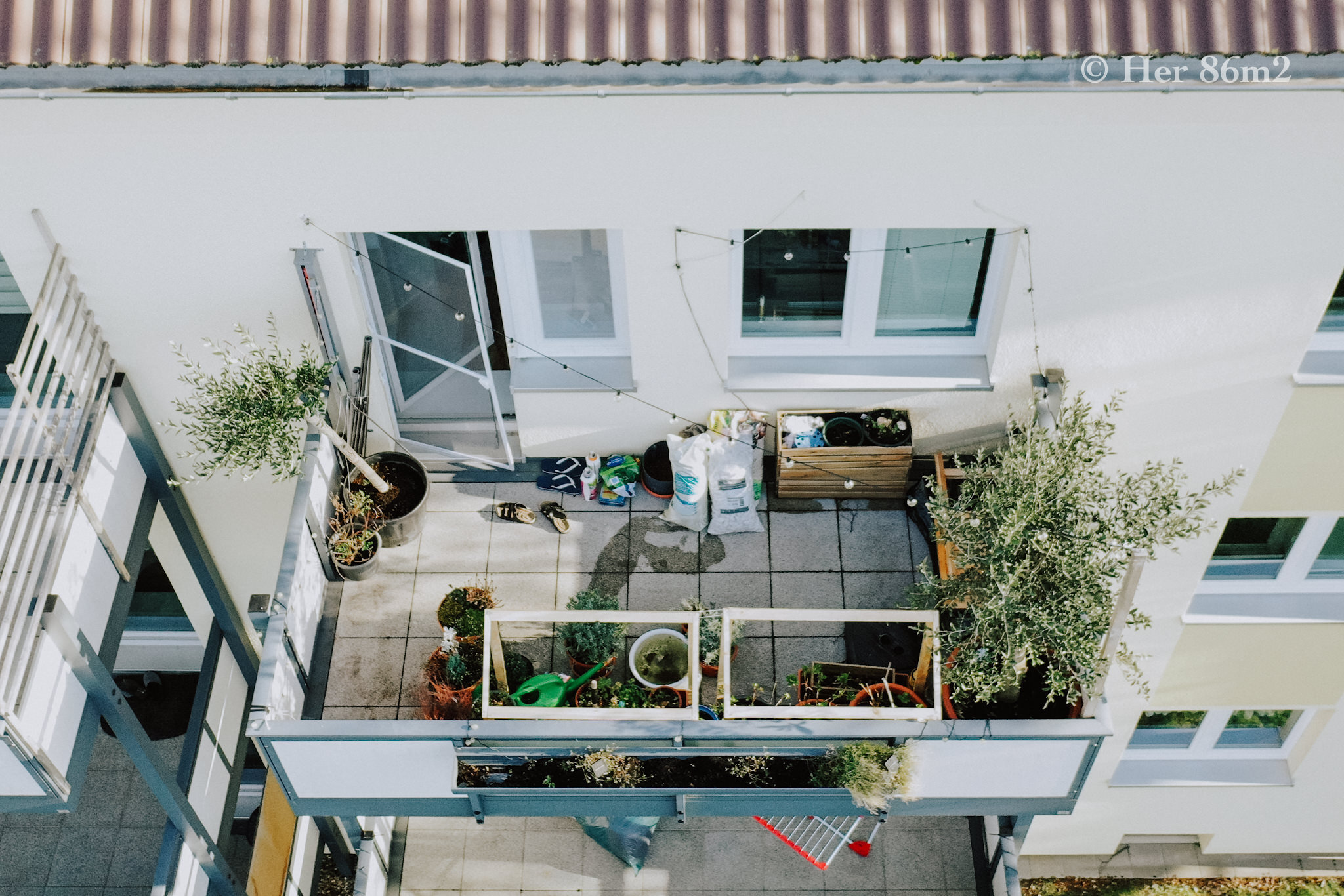
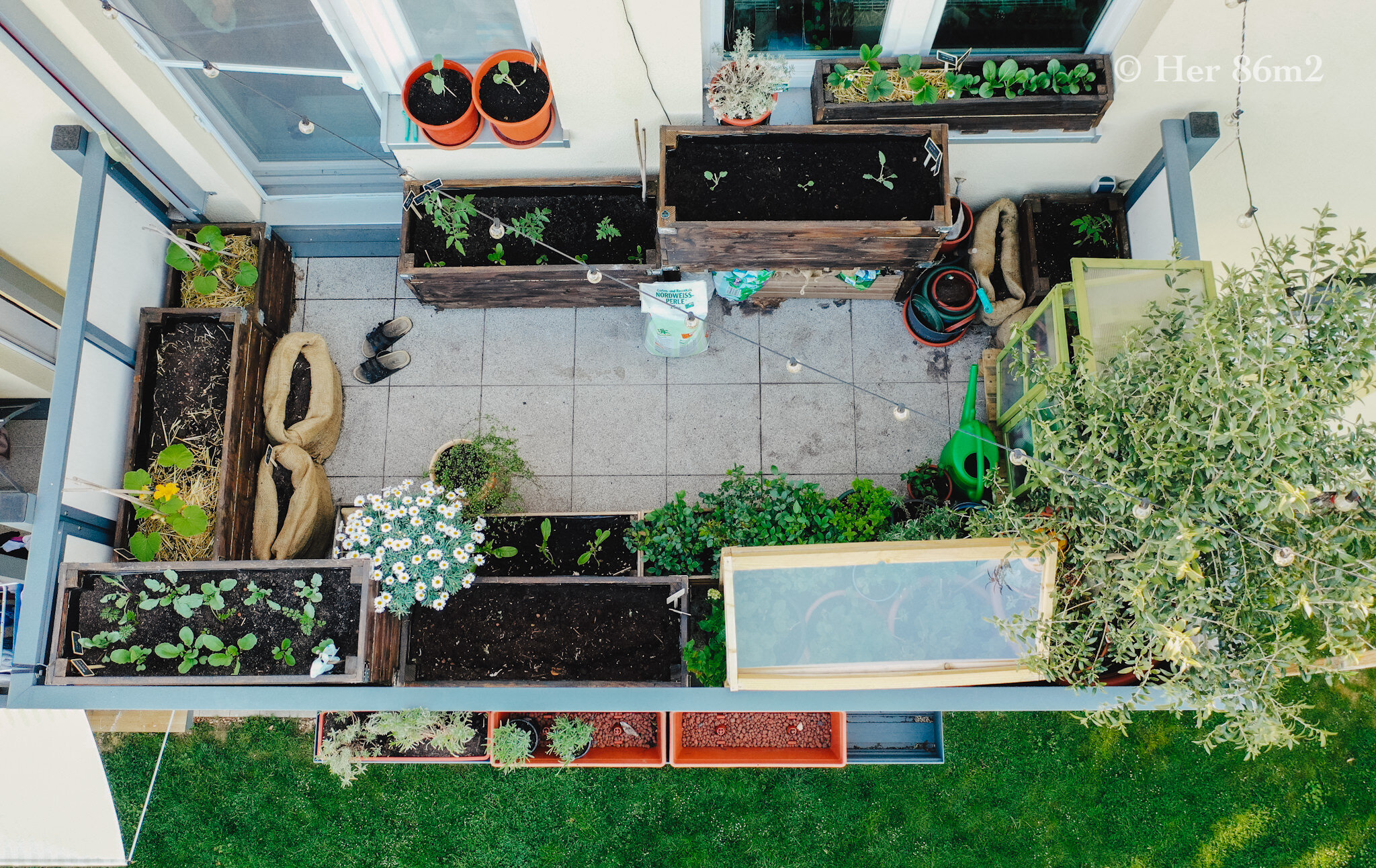
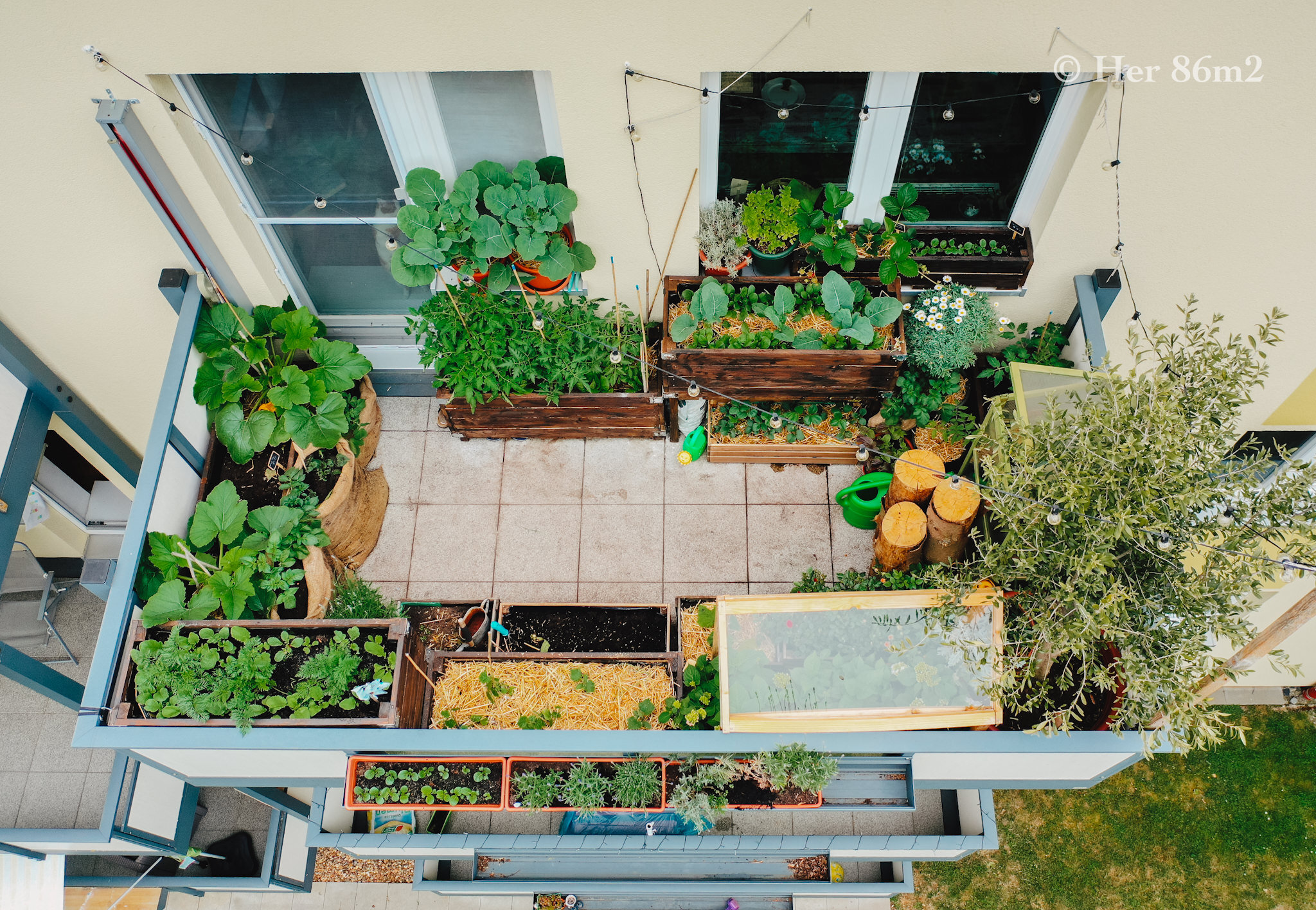
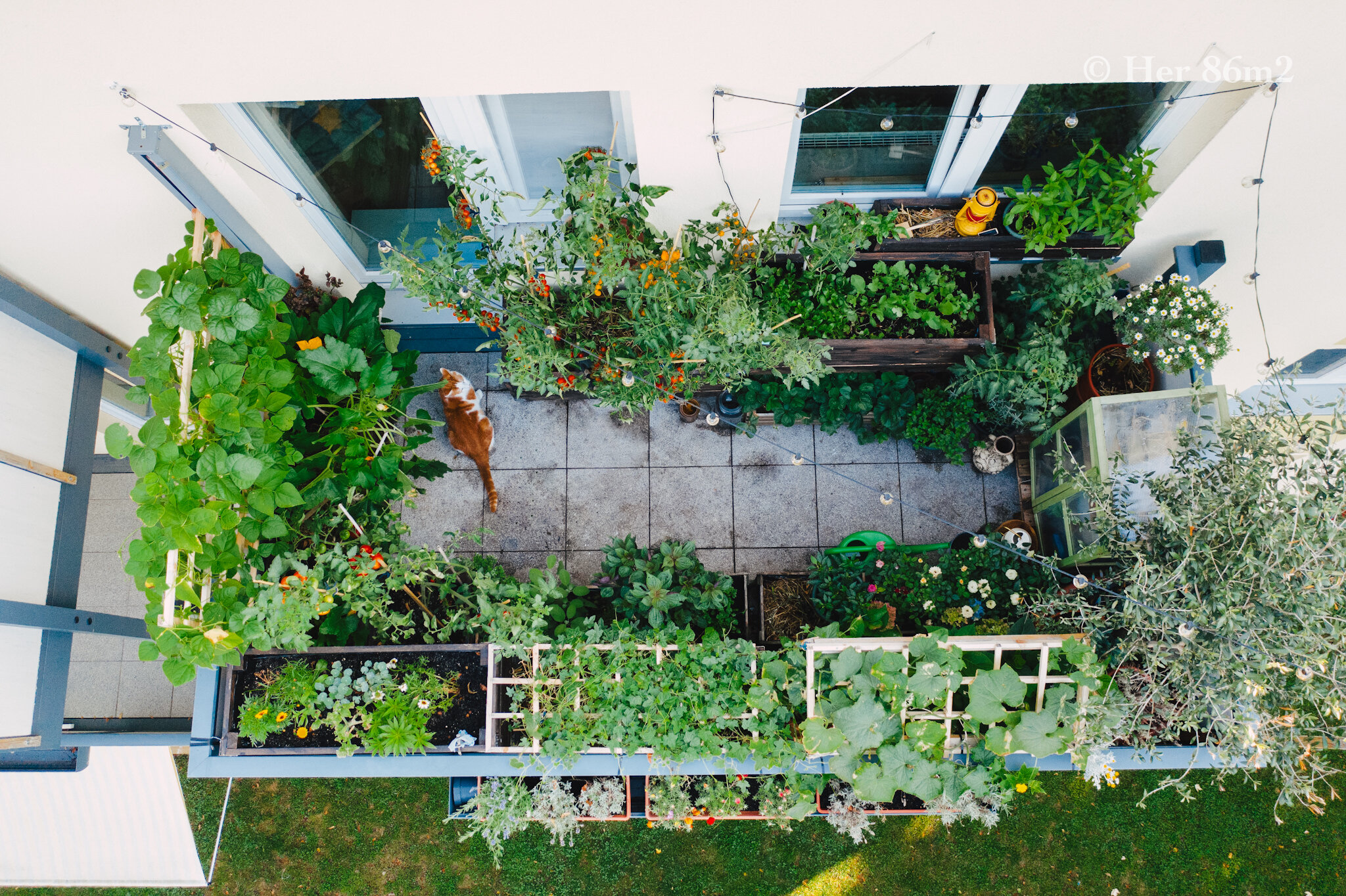
Cuối tháng 2 - đầu tháng 3, khi những đợt tuyết cuối cùng bắt đầu tan, là thời điểm thích hợp để bắt tay vào chuẩn bị làm vườn.
Late February - early March, when the last snow starts to melt, it’s a good time to start preparing gardening for the summer season.
Ban công trước chỉ trồng cây cảnh và vài loại hoa. / Before this project, the balcony was only occupied with our olive trees and some flowers.
1) Lên kế hoạch và dọn dẹp lại ban công
Đo và vẽ sơ đồ trồng rau để tối ưu hoá diện tích ban công.
Vẽ thiết kế của các Raised Bed để đi mua gỗ dễ dàng hơn.
Mua nhà kính mini để hỗ trợ cho việc gieo hạt sớm, do thời tiết ở Đức khá lạnh và phải cuối tháng 5 trời mới ấm dần.
Dọn dẹp lại ban công: cọ sàn, dọn đất, nhổ cỏ,…
1) Planning the layout and cleaning up the balcony
- Measuring and drawing a layout of vegetables plan to optimize, maximize and take the most out of the balcony area.
- Drawing the design of the Raised Beds to make the process of buying lumber easier.
- Buying a mini greenhouse to allow early sowing, because the weather in Germany is quite cold and it usually will not be warmer til the end of May.
- Cleaning up the balcony: moping the floor, removing soil from last year, pulling weeds, ...
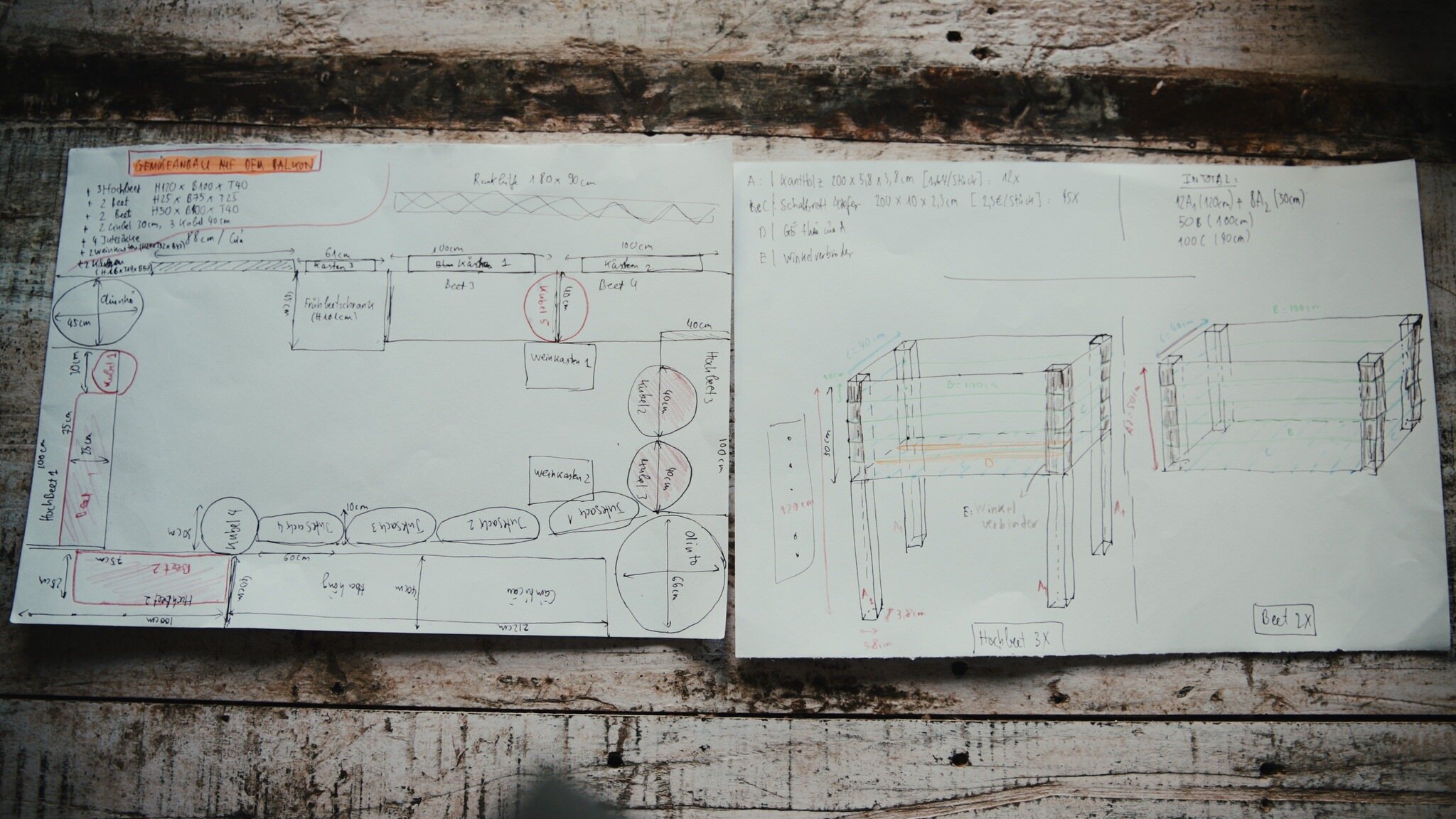
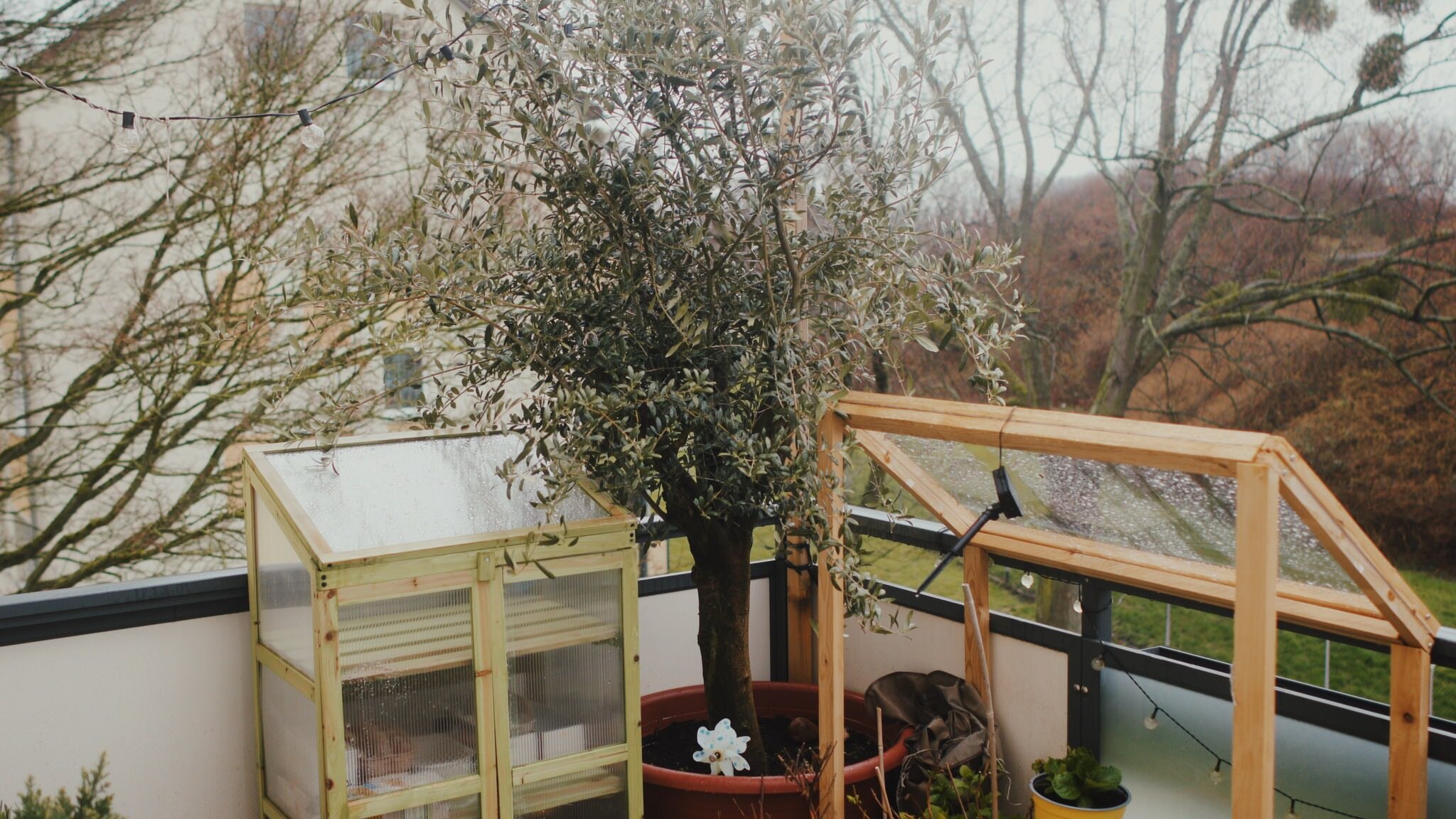
2) Tự Làm Vườn Nâng - Making Raised Bed
Có lẽ Raised Bed đã không còn xa lạ với mọi người nữa. Làm các Bed này không chỉ nhìn đẹp, gọn gàng hơn mà còn hỗ trợ cây sinh sổi nảy nở tốt hơn. Dễ xử lý đất, tránh ốc sên,… Đặc biệt là không còn phải “còng lưng” khi gieo hạt, thu hoạch, nhổ cỏ,…. như trồng luống thấp theo phương pháp truyền thống.
Kích thước của một Bed ở Đức có thể lên tới 200 x 300 cm!! Do chỉ có ban công nên mình làm mini bed với kích thước 45 x 100 x 40 cm. Năm cái tất cả: hai cái cao và ba cái thấp. Tận dụng thêm cả những thùng gỗ có sẵn từ năm trước thì cũng vừa kín ban công.
Lưu ý: Cần tính toán kỹ càng về việc sắp xếp, cũng như có bao nhiêu bed/chậu để đảm bảo trọng tải của ban công nhé! Trung bình một ban công ở Đức có thể chịu được tối đa 400kg/m2 nhưng bạn nên hỏi chủ nhà trước cho chắc nhé, một vài nhà cũ thì sẽ chịu được 200-300kg/m2 thôi.
Bed làm từ loại gỗ tốt sẽ có tuổi thọ 10-15 năm. Ba loại gỗ thích hợp:
Gỗ linh sam (Douglasie): 3 EURO / Meter
Gỗ thông (Fichtenholz): 3 EURO / Meter (mình dùng gỗ này)
Gỗ tùng (Lärche): 4 EURO / Meter
Nên làm nhiều khe thoát nước ở dưới đáy để đảm bảo thông thoáng và tránh ngập úng. Dùng sơn/dầu để bảo vệ và tăng tuổi thọ của gỗ. Nhớ chọn loại thân thiện với môi trường nhé. Điều này không chỉ tốt cho môi trường mà còn cho chính sức khoẻ cho chúng ta nữa.
Một cách nữa để tăng tuổi thọ của gỗ là lót một lớp màng bọc bên trong bed. Có hai loại màng bọc thích hợp nhất cho bed: EPDM-Folie và Noppenfolie.
Lưu ý: không sử dụng màng bọc làm từ PVC nhé! Các chất độc sẽ từ Folie đi vào đất và vào chính rau củ quả nữa.
2) Making Raised Bed
Raised Bed is not something new or avant-garde. Making these beds not only make the balcony look better and tidy, but also support the plants to grow much better. Easier to handle and mix soil, avoid snails ... Especially, no longer have to bend over and suffer from back pain when sowing, harvesting, pulling weeds in a long period of time... like planting in low beds.
The size of raised beds in Germany can go up to 200 x 300 cm!! Because we have only a small balcony, I improvised and made some mini raised beds with the size of D45 x L100 x H40 cm.
Five in total: two tall and three short ones. I also used a lot of existing wooden pots from the previous year to fill up the balcony.
IMPORTANT NOTE: It is necessary to carefully design the vegetables arrangement, as well as how many beds / pots to ensure it will below the max load of the balcony! On average, a balcony in a new apartment in Germany can withstand up to 400kg / m2, but you should ask the landlord first to be sure, some old houses will withstand 200-300kg / m2 only. Beds made out of good wood will have a lifespan of 10-15 years.Three types of wood are suitable:
- Fir wood (Douglasie): 3 EURO / Meter
- Pine wood (Fichtenholz): 3 EURO / Meter (I use this)
- Larch: 4 EURO / Meter
You also should make many holes at the bottom to ensure soil ventilation and avoid waterlogging. Use paint / oil to protect and prolong the life of the wood. Remember to choose an environmentally friendly one. This is not only good for the environment but also for our own health. Another way to increase the longevity of the wood is to put cover inside the bed.
There are two types of wrap most suitable for bed: EPDM and bubble wrap. Note: do not use PVC wrap! The toxins will go into the soil and into the fruits and vegetables.
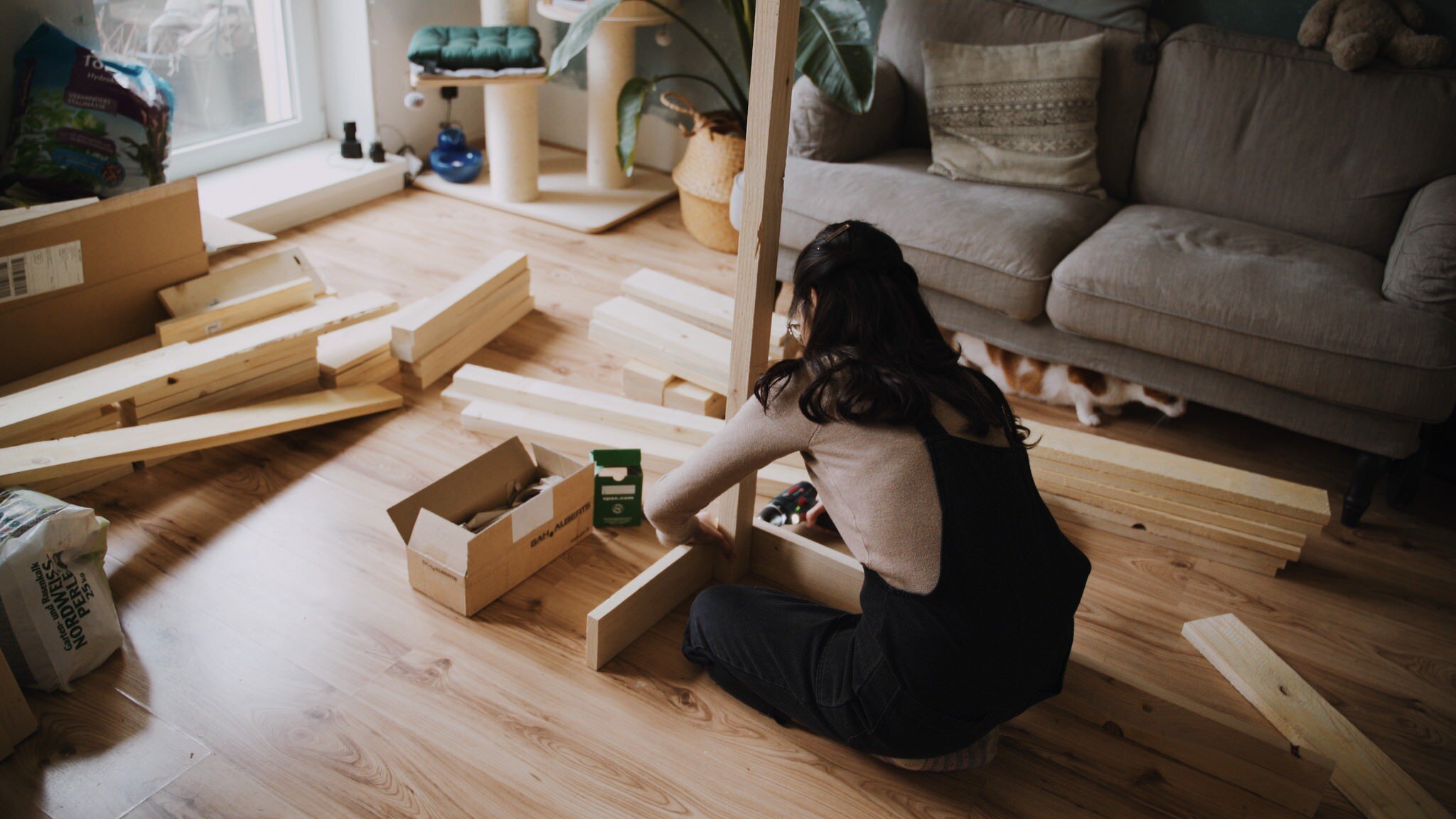
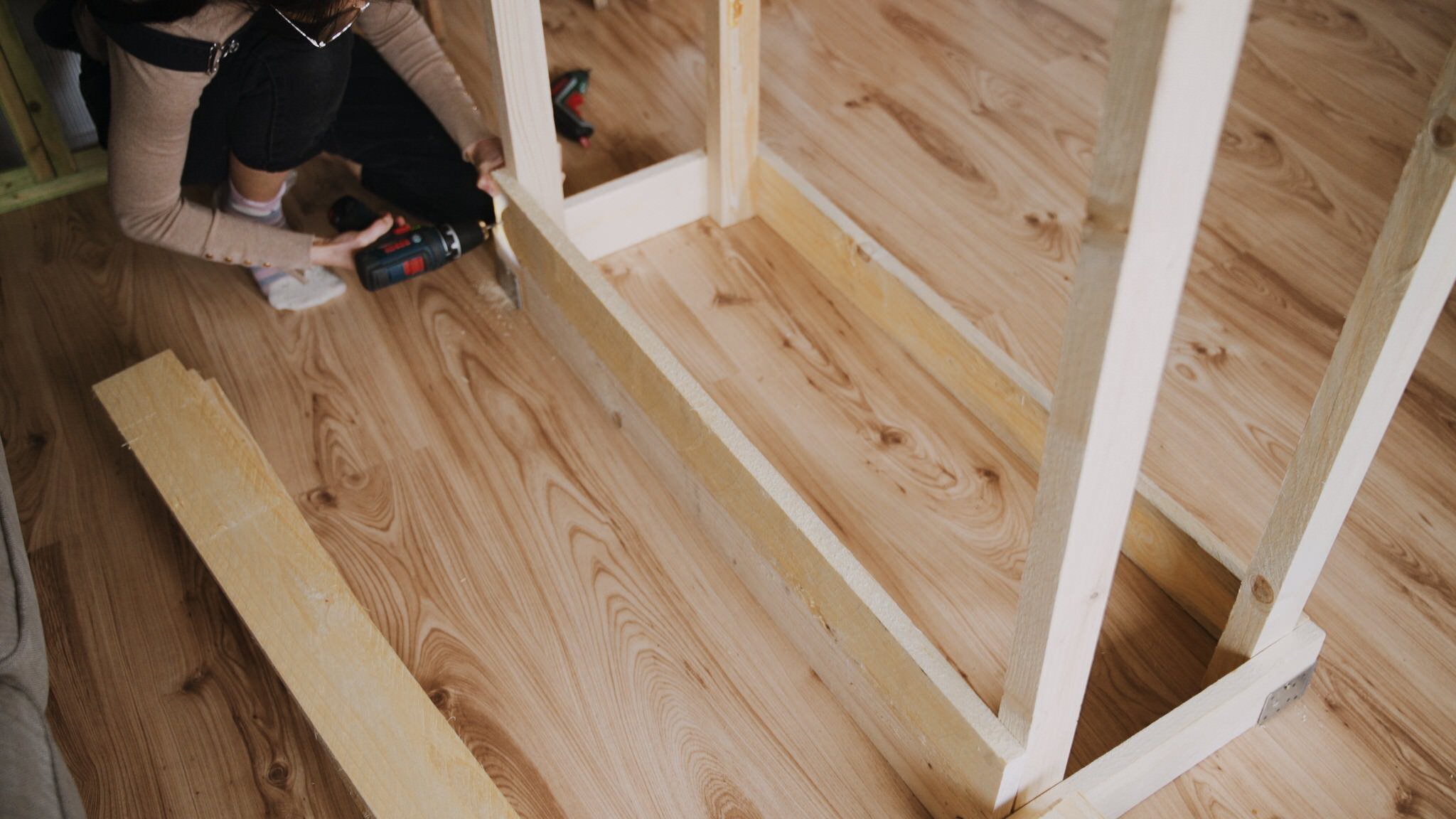

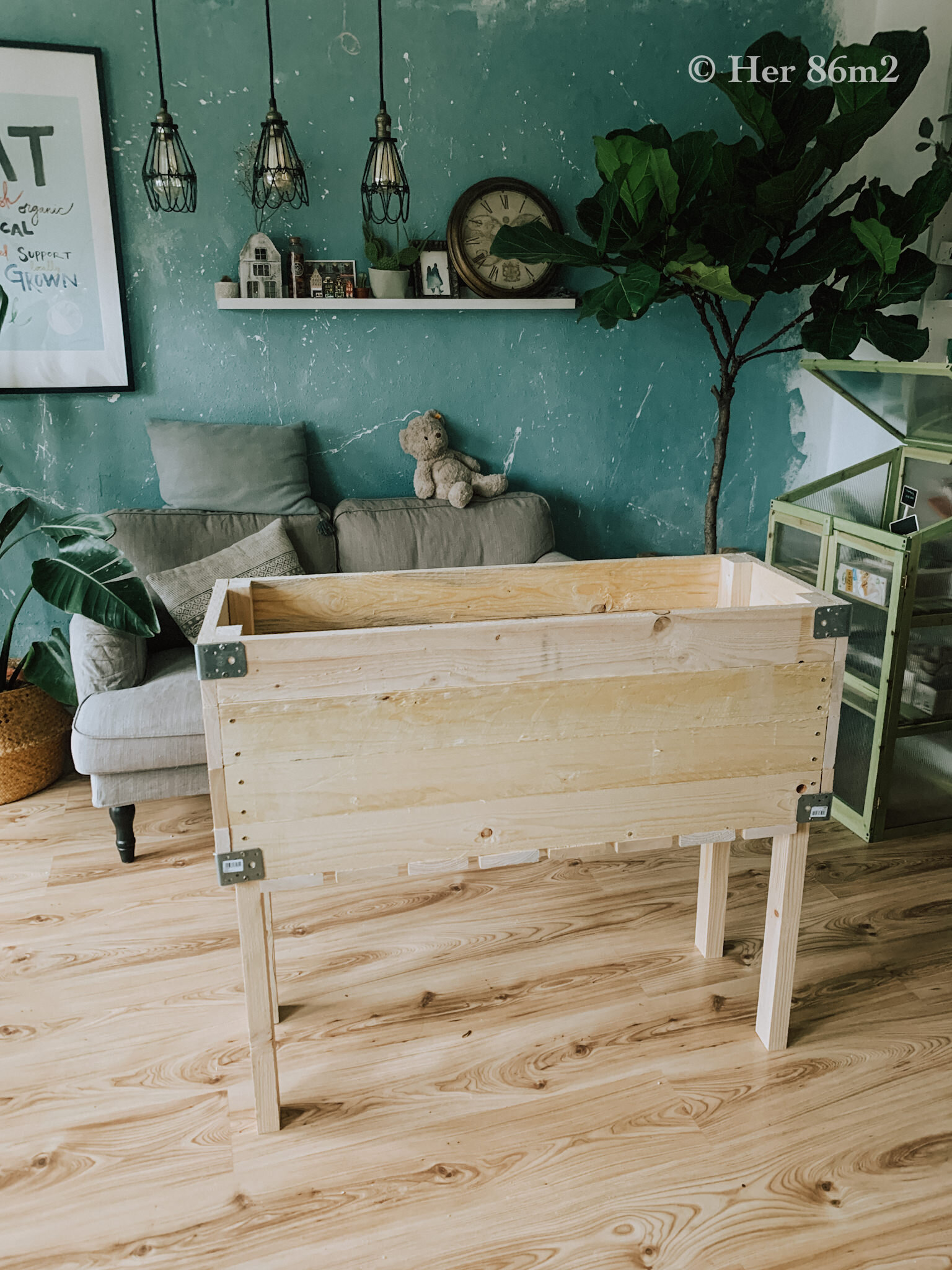
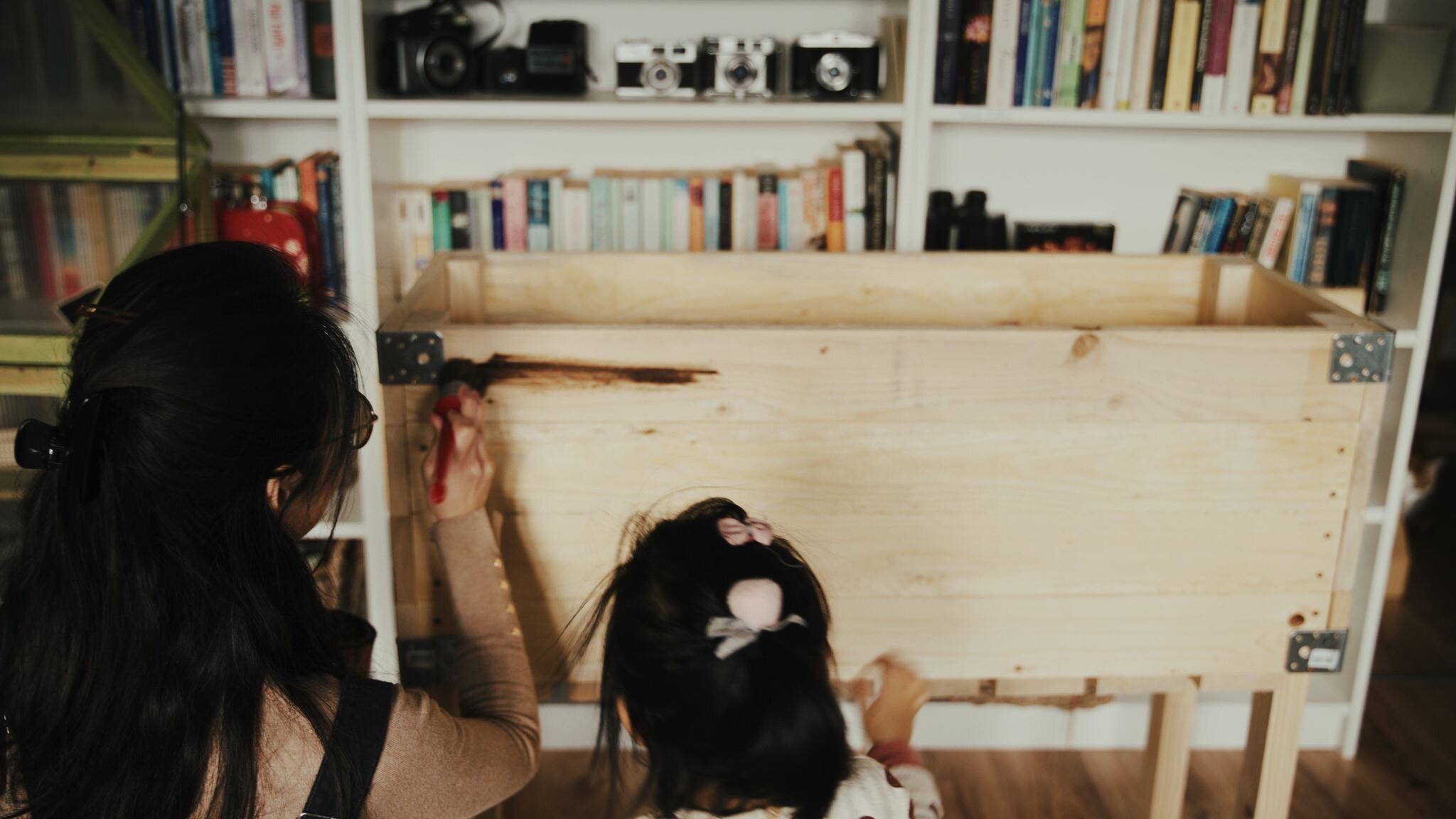
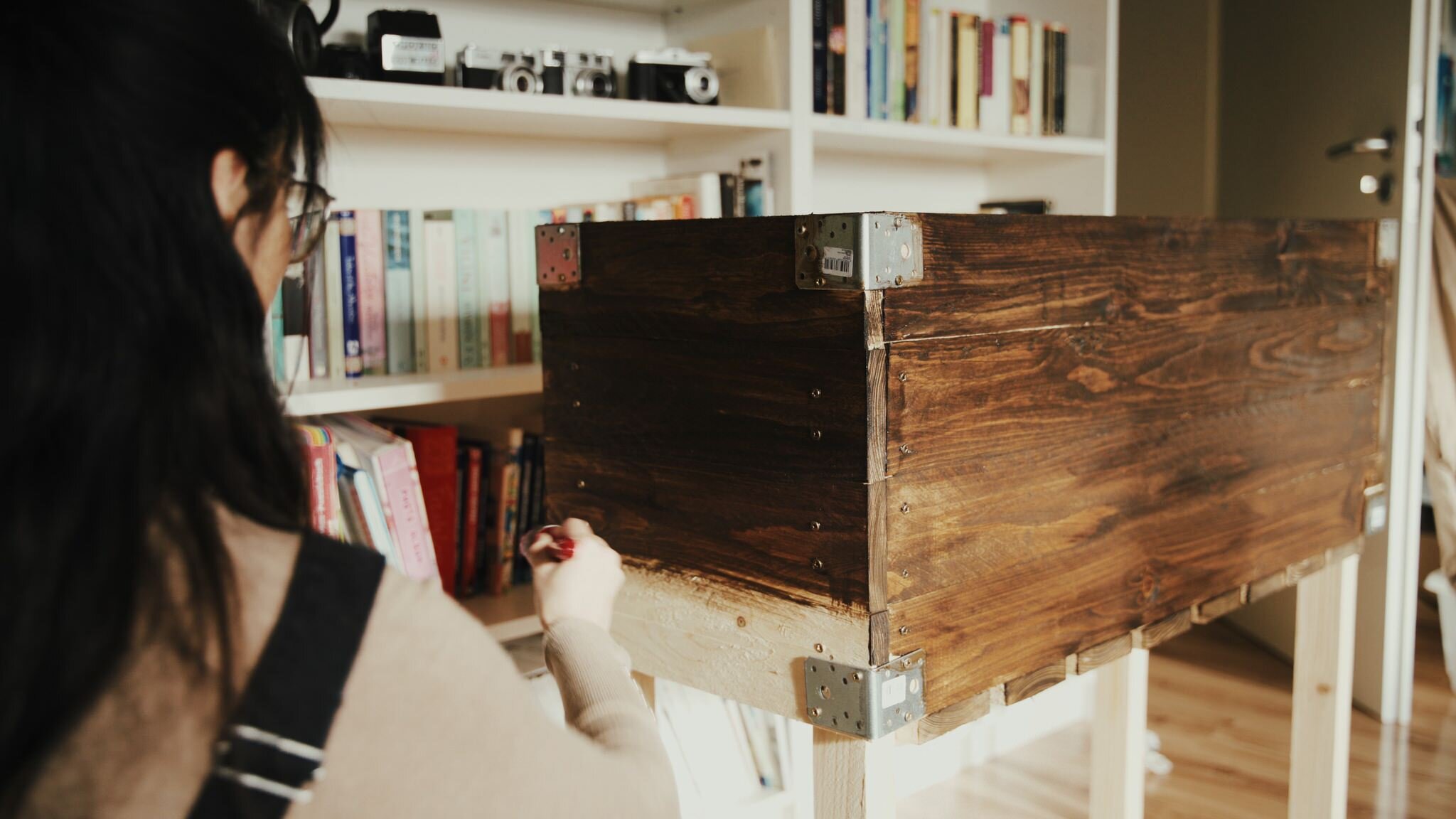
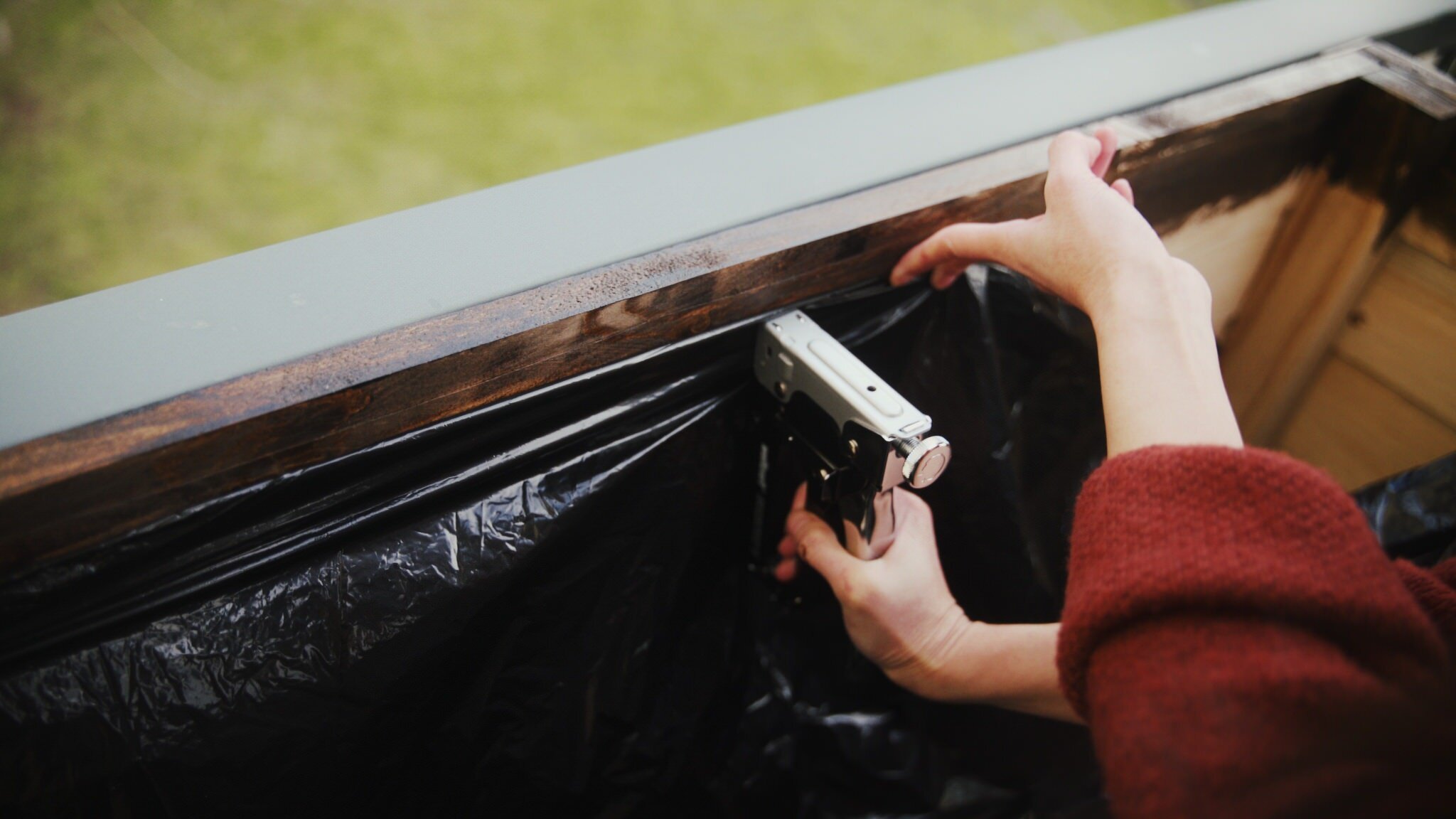
3) Chuẩn bị phân bón và đất
Phân bón
Dùng thùng Bokashi để làm phân bón từ rác hữu cơ trong bếp. Bếp vừa hết mùi lại không phí rác thải, thức ăn cũng phân huỷ nhanh hơn là phân compost truyền thống. Chỉ cần thái nhỏ đồ thừa, ép chặt, xịt men vi sinh, rắc cám Bokashi và đóng chặt sau mỗi lần dùng.
Quá trình lên men hoạt động tốt nhất trong môi trường yếm khí (không cấp khí). Không khí làm cho các thành phần thối rữa nhanh hơn là lên men. Vậy nên mình cho rác hữu cơ vào một thùng rác nhỏ có nắp kín, cứ 2-3 ngày mới đổ vào thùng Bokashi một lần để tránh mở thùng Bokashi nhiều lần.
Khi thùng đầy thì để vào chỗ tối và mát 2 tuần.
Đất
Phủ một lớp đá (Tongranulat) ở dưới đáy, tăng cường khả năng thoát nước. Sau đó trộn lẫn đất và phân bón đã từ thùng Bokashi (đã ủ sau 2 tuần). Trộn thật đều và làm tơi phân bón Bokashi ra nhé!
Sau đó phủ một lớp đất thật dày lên trên để che kín hoàn toàn hỗn hợp đất và Bokashi. Đậy hoặc bọc lại, tiếp tục ủ ít nhất 2 tuần rồi mới gieo trồng nhé. Mình thì ủ thêm 1 tháng.
Nên mua loại đất trồng cây, đừng tiếc tiền mua đất trồng hoa nhé. Đất trồng hoa sẽ ức chế cây, khiến cây sớm ra hoa, ví dụ như các loại cải mà ra hoa sớm là coi như lứa đó chỉ có thể dùng để làm thu hạt giống.
Cây sẽ đủ phân bón cho suốt cả một mùa. Một số loại như cà chua thì chỉ cần bón thêm chút kali.
3) Preparing fertilizer and soil
Fertilizer
- I used Bokashi composting to make fertilizer from organic kitchen waste. This is killing many birds with one stone. Our kitchen is now odorless and zero-waste, and organic waste now decomposes faster than traditional composting.- In Bokashi composting, kitchen scraps of all kinds — including meat and dairy products banned from aerobic systems — are mixed with some of the inoculated bran, pressed into the Bokashi bucket, covered with another handful of bran, and tightly covered. When the bucket is full, it is sealed shut and set aside for ten to twelve days. Every other day during that time, the leachate that is an inevitable byproduct of anaerobic composting needs to be drawn off. That’s the only care required.
When the bin is full, cover it tightly and set it aside somewhere in the house where it’s out of direct sunlight for ten days or so. Every other day, draw off the liquid, which can apparently be used as a fertilizer (in a very diluted form) or full strength to control slime in drains, pipes and septic systems.
After ten to fourteen days, the waste in the tub should be thoroughly pickled. It can then be dug into a fallow patch of the garden.
Soil
- A layer of clay granulate at the bottom to enhance drainage capacity.
- Then mix soil and fertilizer from Bokashi bin (2 weeks after the bin is full). Mix the Bokashi fertilizer well! Then cover it with a thick layer of soil to completely cover the mixture of soil and Bokashi. Cover or wrap it up, keep it incubating for at least 2 weeks before sowing. I personally incubated for 1 more month. You should buy soil for planting vegetables, do not save the money by buying soil for growing flowers. Flowering soil will inhibit the plant, causing the vegetables to flower early. For example, cabbage that flowers early can’t be harvested anymore. The flowers can only be used to collect seeds. With this mixture the vegetables will have enough fertilizer for the entire season. Some vegetables, like tomatoes, only need a little extra potassium during the flowering season.
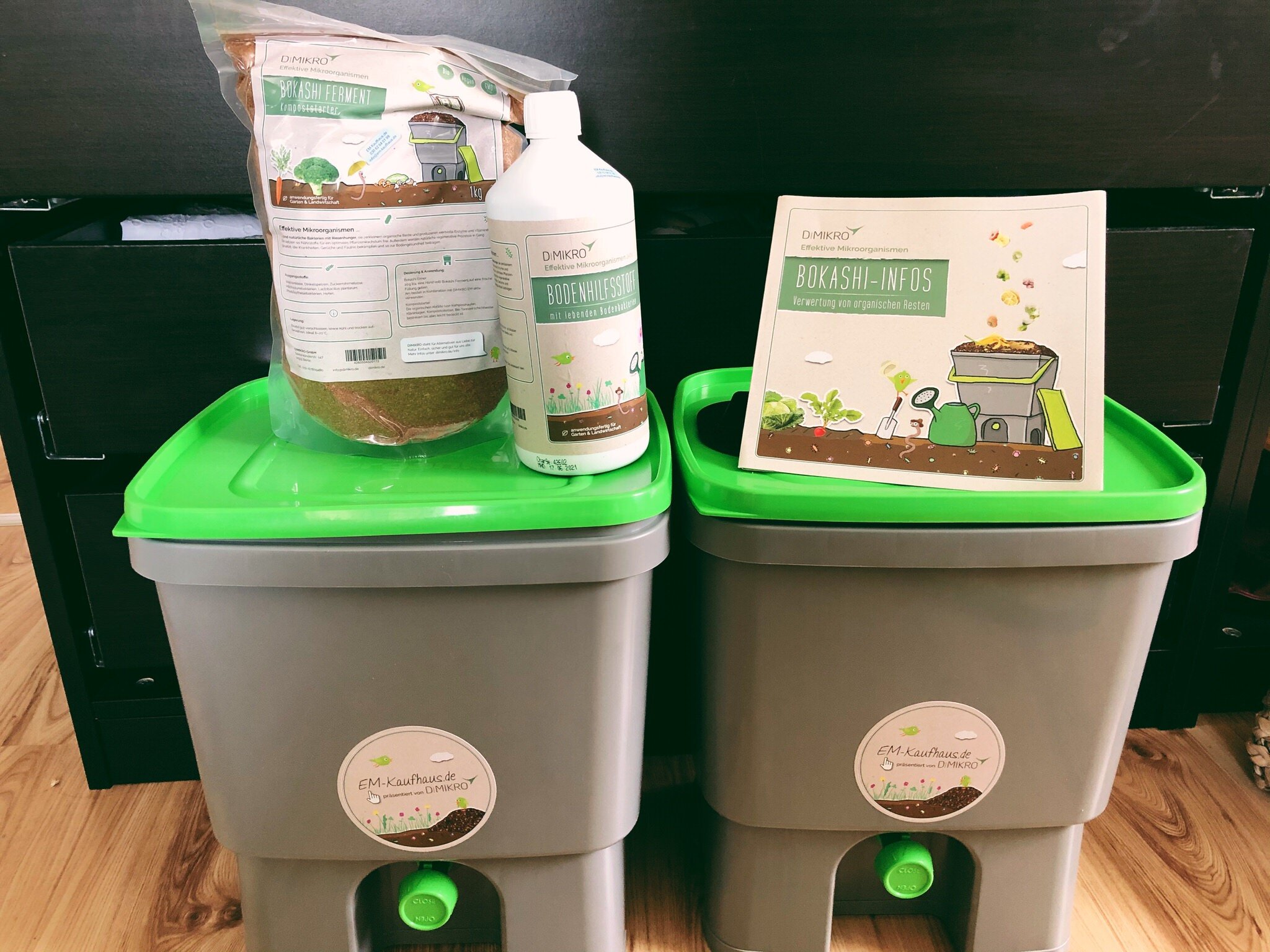
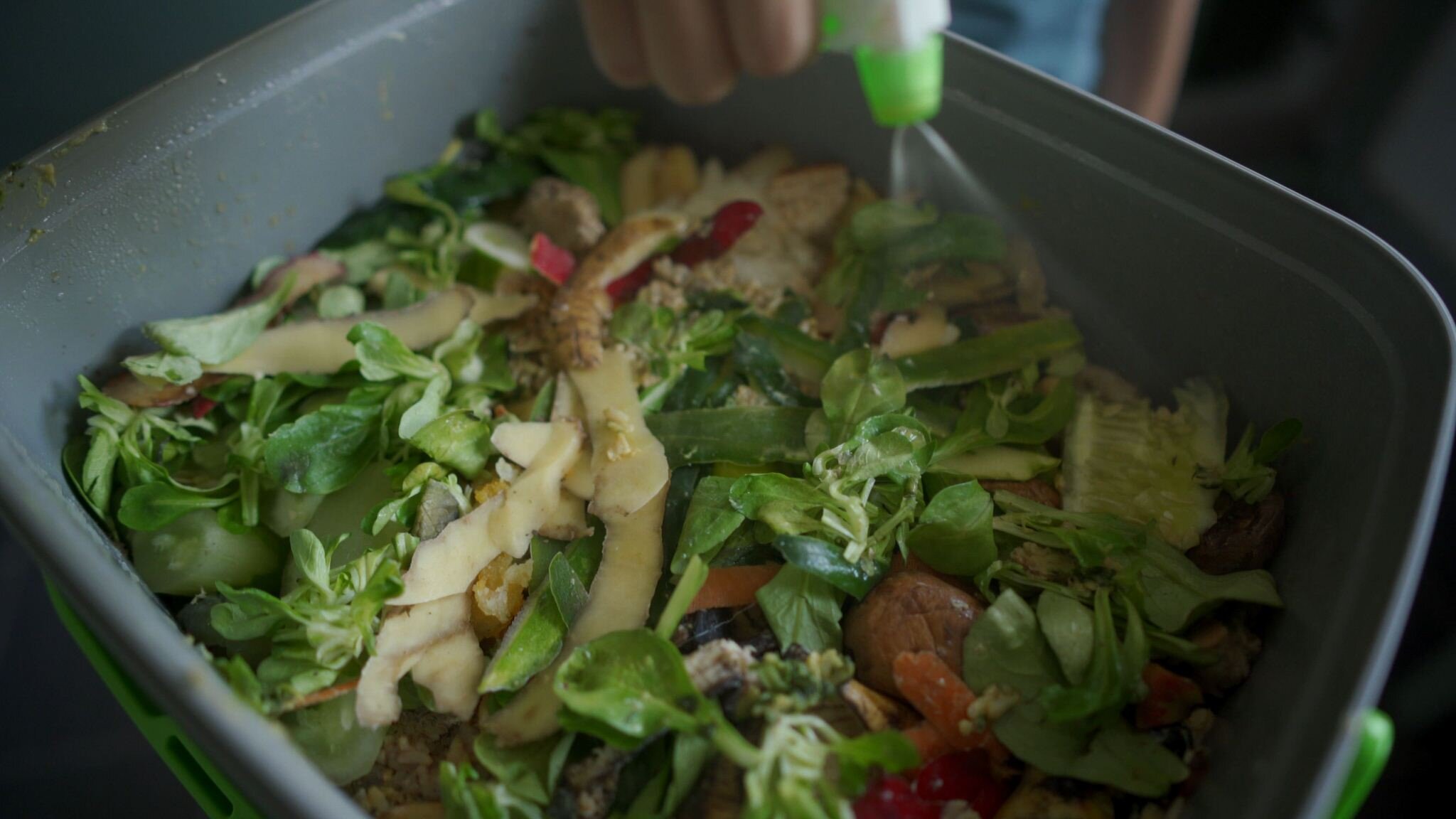
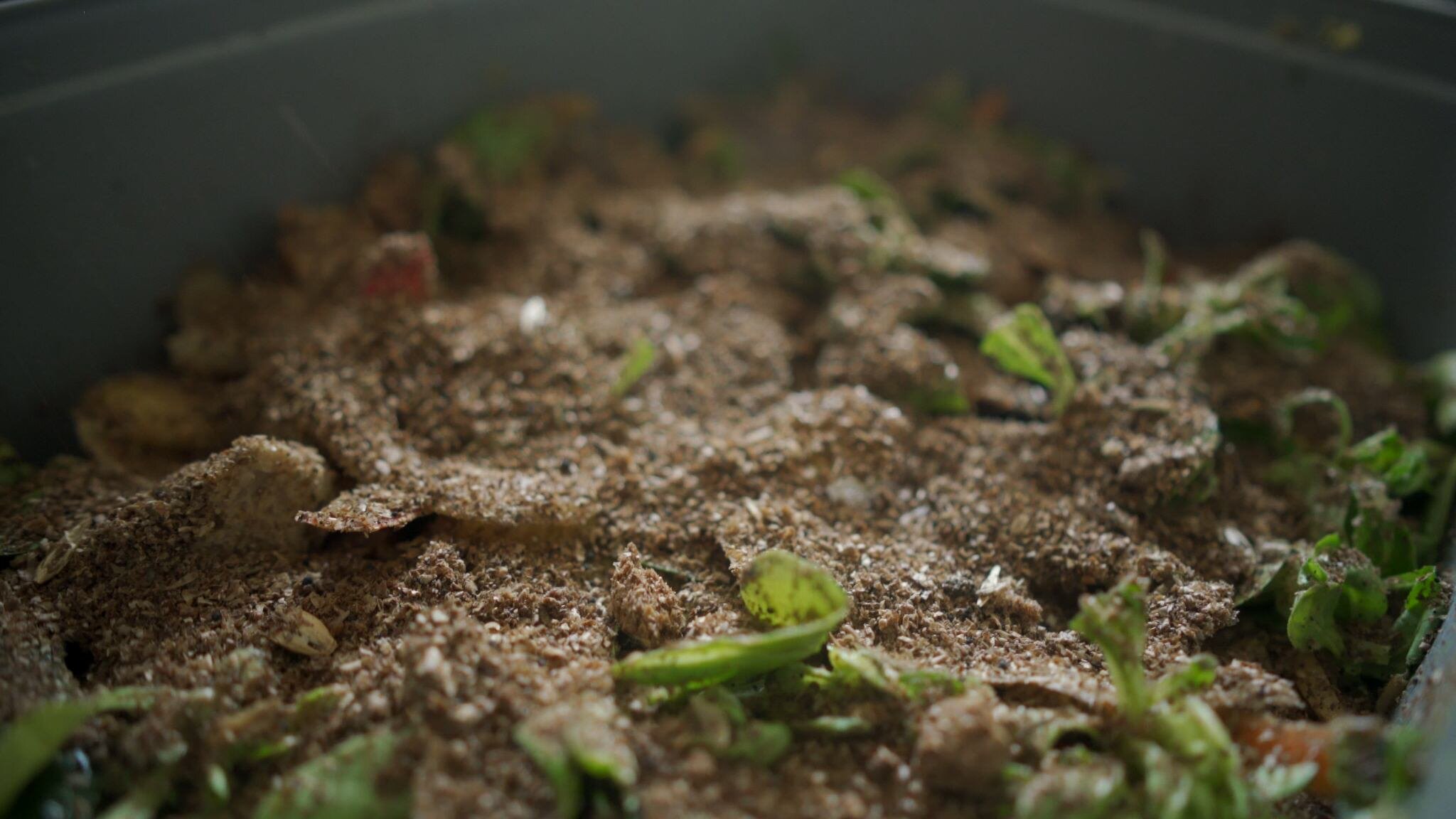
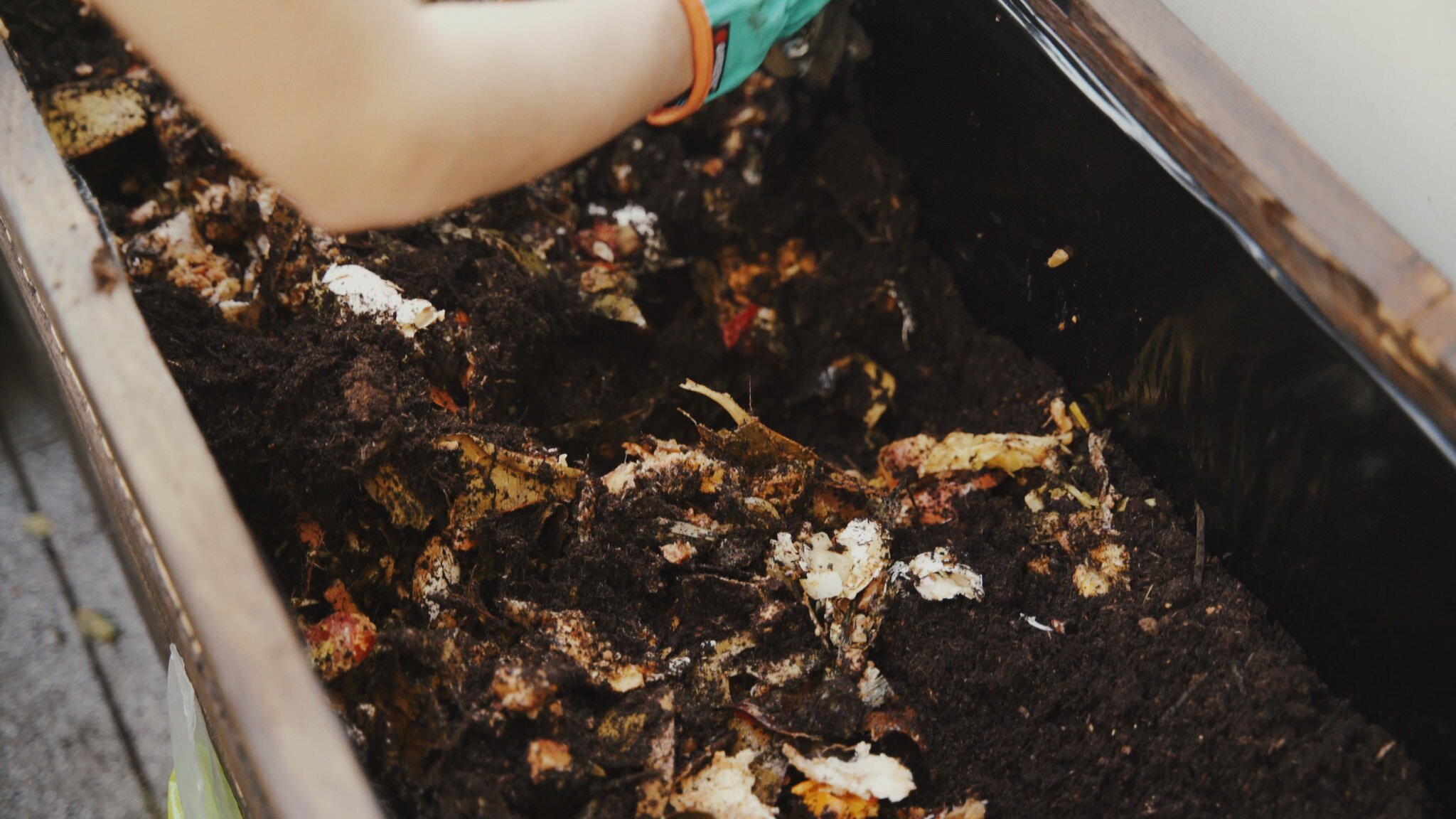
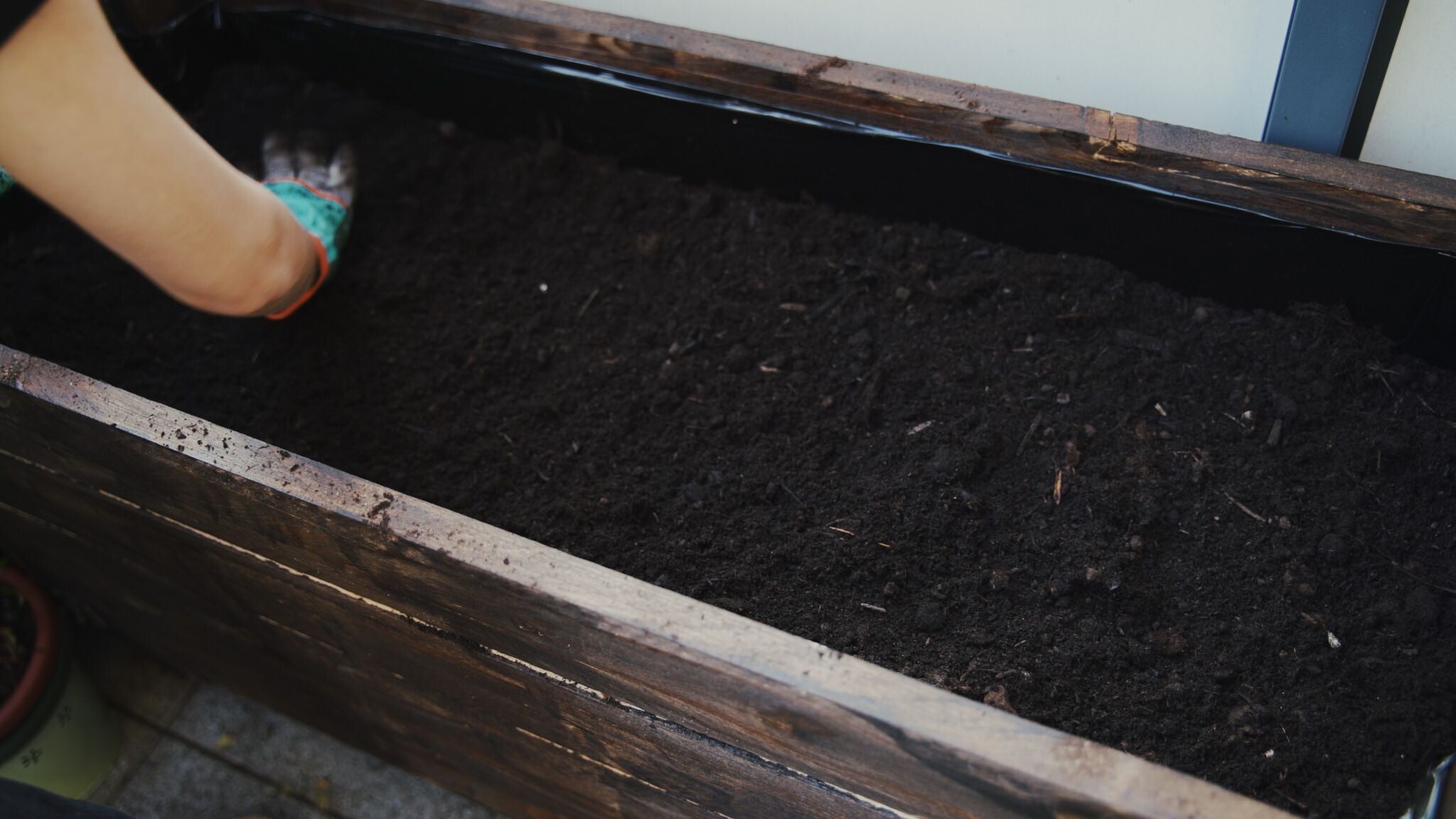
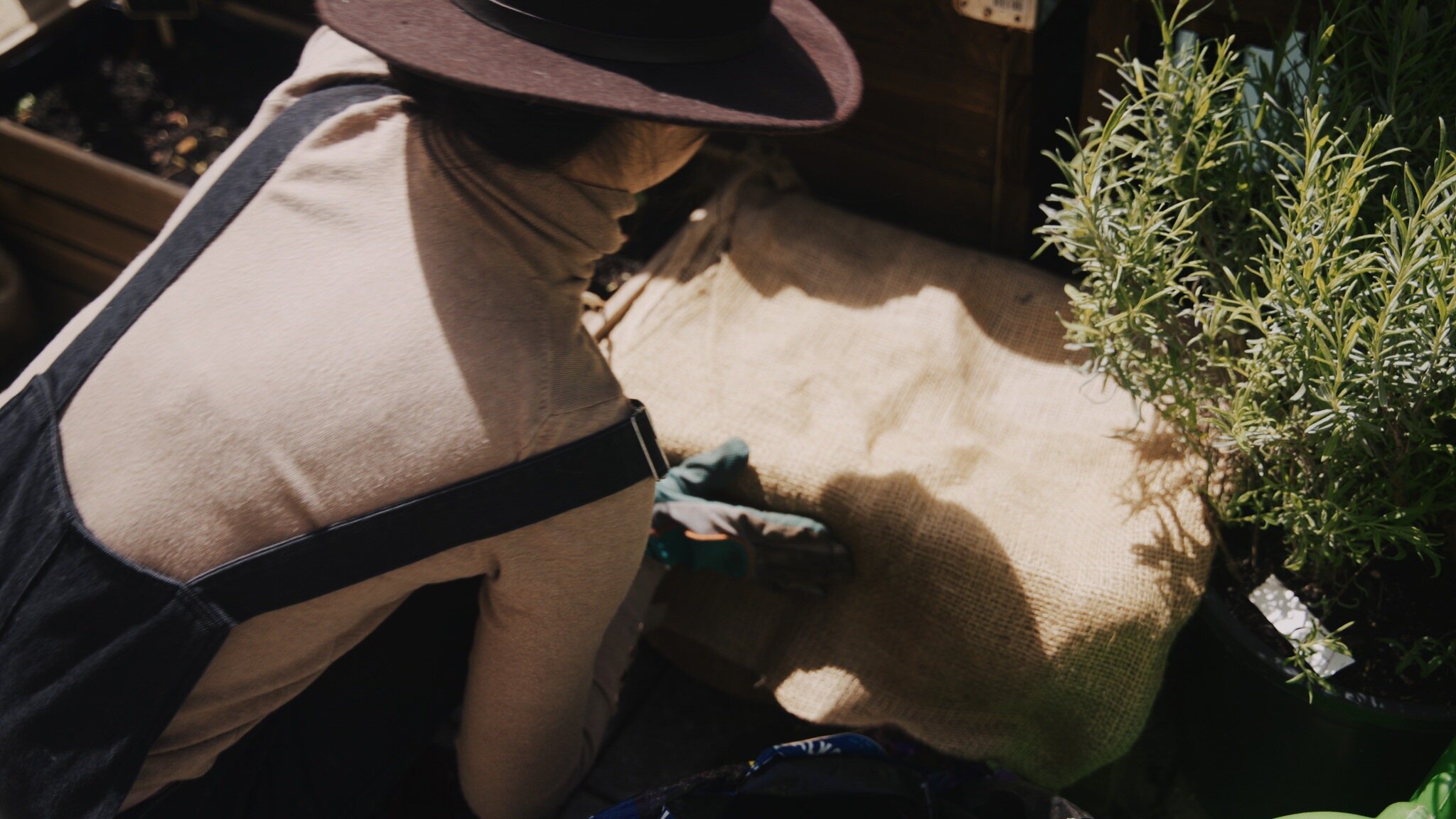
4) Gieo hạt
Với thời tiết ở Đức, để có thể thu hoạch sớm vào tháng 7,8 thì cũng cần phải gieo hạt sớm. Cuối tháng 3, đầu tháng 4 là lúc thích hợp để làm điều đó. Là năm đầu tiên nên mình ưu tiên chọn các loại cây dễ trồng, đảm bảo chắc chắn được thu hoạch như: các loại cà chua, các loại xà lách, rau thơm, rau cải, đỗ, bí ngòi, dưa chuột,…
Các loại cây cần gieo trong nhà:
Dùng đất chuyên dụng cho gieo hạt sẽ làm tăng khả năng nảy mầm và sinh trưởng tốt cho cây.
Tái sử dụng hộp đựng trứng, hộp sữa,… để gieo hạt. Có thể mua các loại chậu nhỏ chuyên dụng nếu gieo hạt số lượng nhiều.
Ghi tên và viết ngày gieo hạt để dễ theo dõi. Hạt thường sẽ nảy mầm sau 7-14 ngày.
Để trên cửa sổ, nơi có nhiều ánh sáng. Lưu ý cho các bạn ở Đức: nếu để trên bệ cửa sổ thì không bật sưởi nhé.
Có hạt sẽ không nảy mầm nên tốt nhất là nên gieo hạt nhiều một chút, để đảm bảo đủ số cây trồng mà mình mong muốn, cũng để đảm bảo có đủ số cây khoẻ, sinh trưởng tốt để trồng sau này.
Sau khi cây nảy mầm một thời gian, có thể chuyển cây ra các chậu to hơn.
Nhiệt độ ban đêm trên 10°C (thường khoảng giữa tới cuối tháng 5) có thể đem cây ra trồng ở ngoài. Trước đó để trong nhà kính (không bắt buộc) vài ngày để cây làm quen với nhiệt độ ngoài trời.
Các loại cây gieo thẳng ngoài trời:
Các loại như rau cải, củ cải,… có thể gieo thẳng ngoài trời từ cuối tháng 2.
Nếu có nhà kính thì cuối tháng 2, giữa tháng 3 có thể gieo một vài loại trong nhà kính: cà rốt, cải pakchoi, một số loại rau thơm,…
Nếu nhiệt độ ban đêm trên 10°C, có thể gieo hạt ngoài trời.
Một vài loại thì còn yêu cầu trên 15°C nên nhớ lưu ý từng loại cây nhé.
4) Germinating
With cold weather in Germany, in order to harvest early in July, it is also necessary to germinate early. Late March, early April is about the right time to do that. As it’s my first year, I chose plants that are easy to grow and cultivate such as tomatoes, lettuce, herbs, vegetables, runner bean, zucchini, cucumbers, ...
- For Plants that need to be germinated indoors:
+ Using specialized soil for sowing will increase germination rate and good starting point for plants. + Reuse egg boxes, milk cartons ... to sow seeds. Or you can buy specialized small pots if sowing in large quantities.
+ Write down the name and date of sowing for easy monitoring.
+ Seeds will usually germinate after 7-14 days.
+ Keep on windows, where there is plenty of light.
+ If you’re based in Germany: if seeds left on a window sill, do not turn on the heater.
+ Germination rate is not 100%, so it is best to sow a little more seeds than the number you need to ensure you will have enough plants, it also give you the choice to choose to plant healthier and stronger plants, because they will grow well and better for later planting.
+ After the plant has germinated for a while, it can be moved to larger pots. When nighttime temperatures is above 10 ° C (usually mid to late May) they can be planted outside. Before that, leave it in the greenhouse (optional) for a few days to let the plants adapt to the weather and get used to the outside temperature.- For the types of plants that can be germinated outdoors:
+ Vegetables such as pak choi, turnips ... They can be sown directly outdoors from the end of February.
+ If you have a greenhouse, some types of vegetables can be sown at the end of February, mid-March: carrots, pakchoi, some herbs... When the night temperature is above 10 ° C, seed can be sown outdoors.
+ Some types of vegetables also require a germinating temperature of over 15 ° C so remember to note each plant.
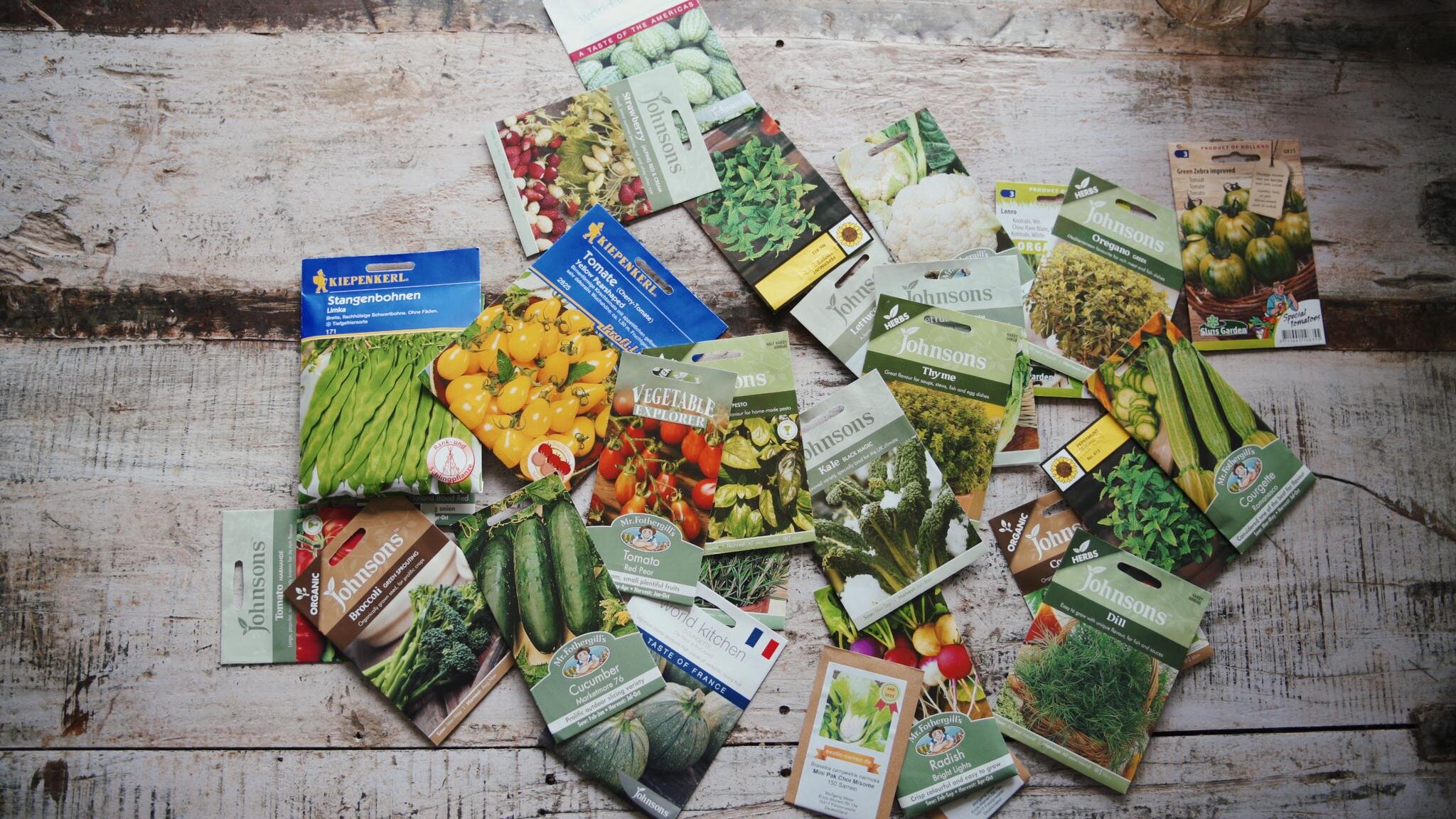
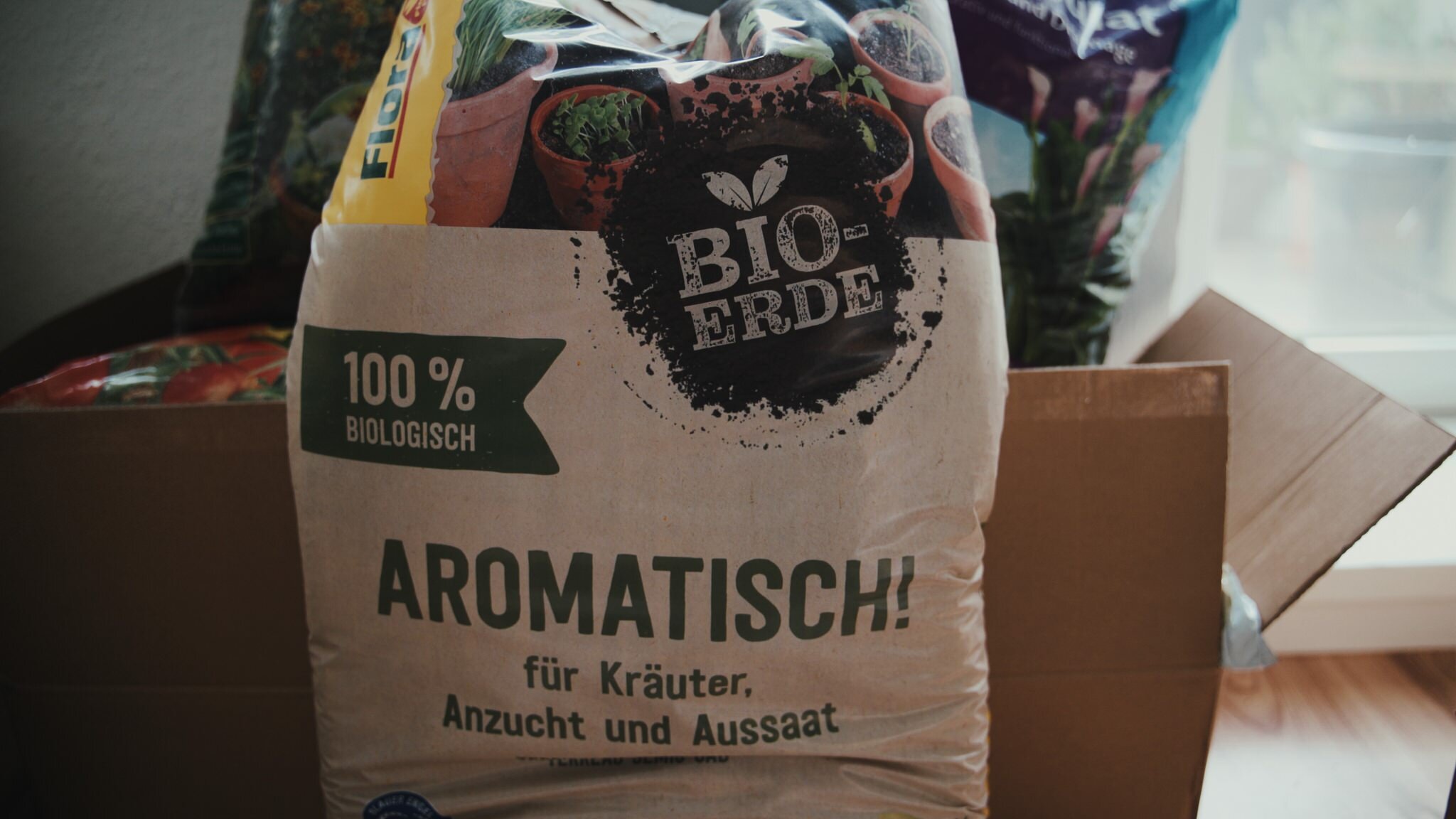
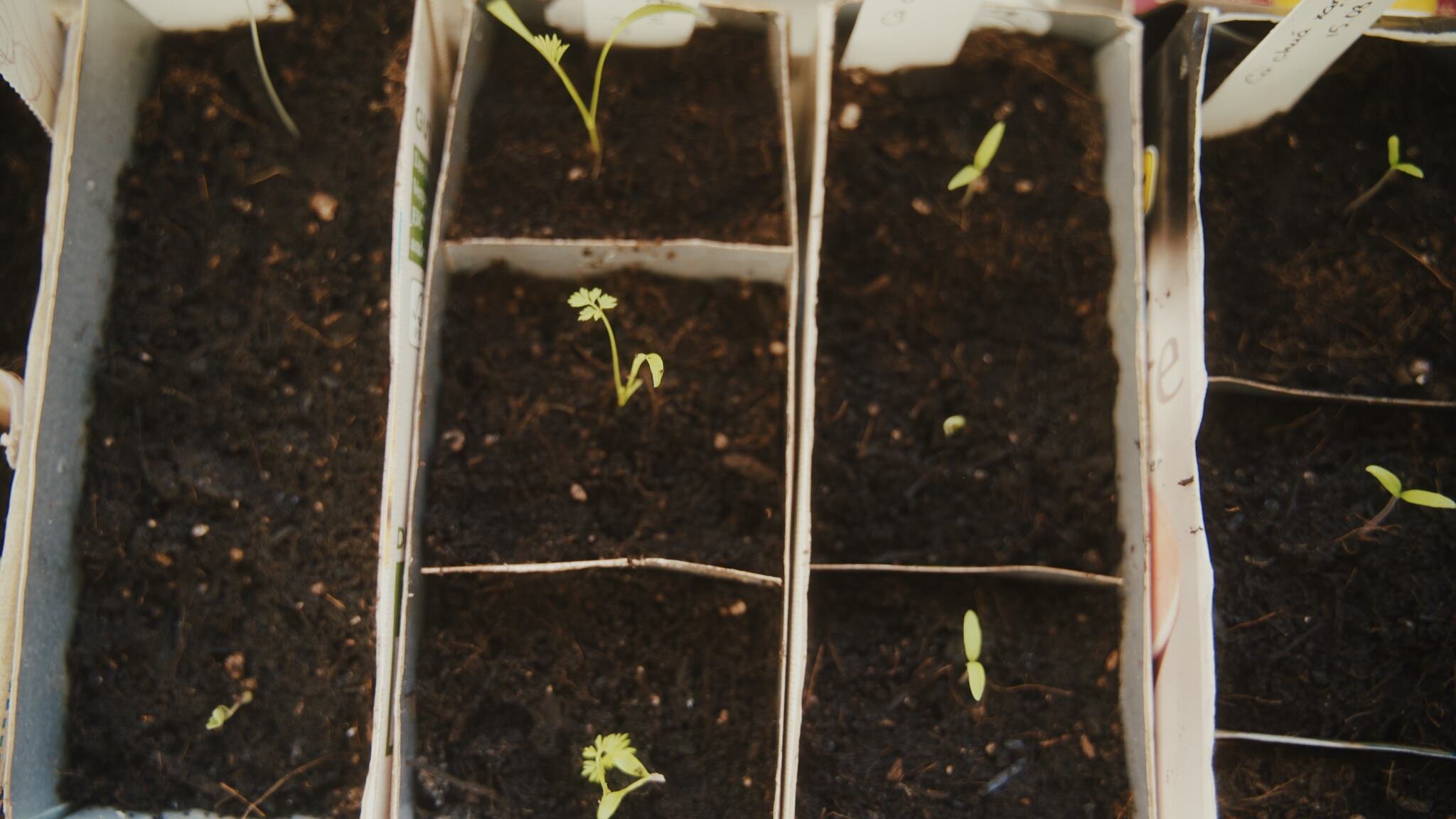
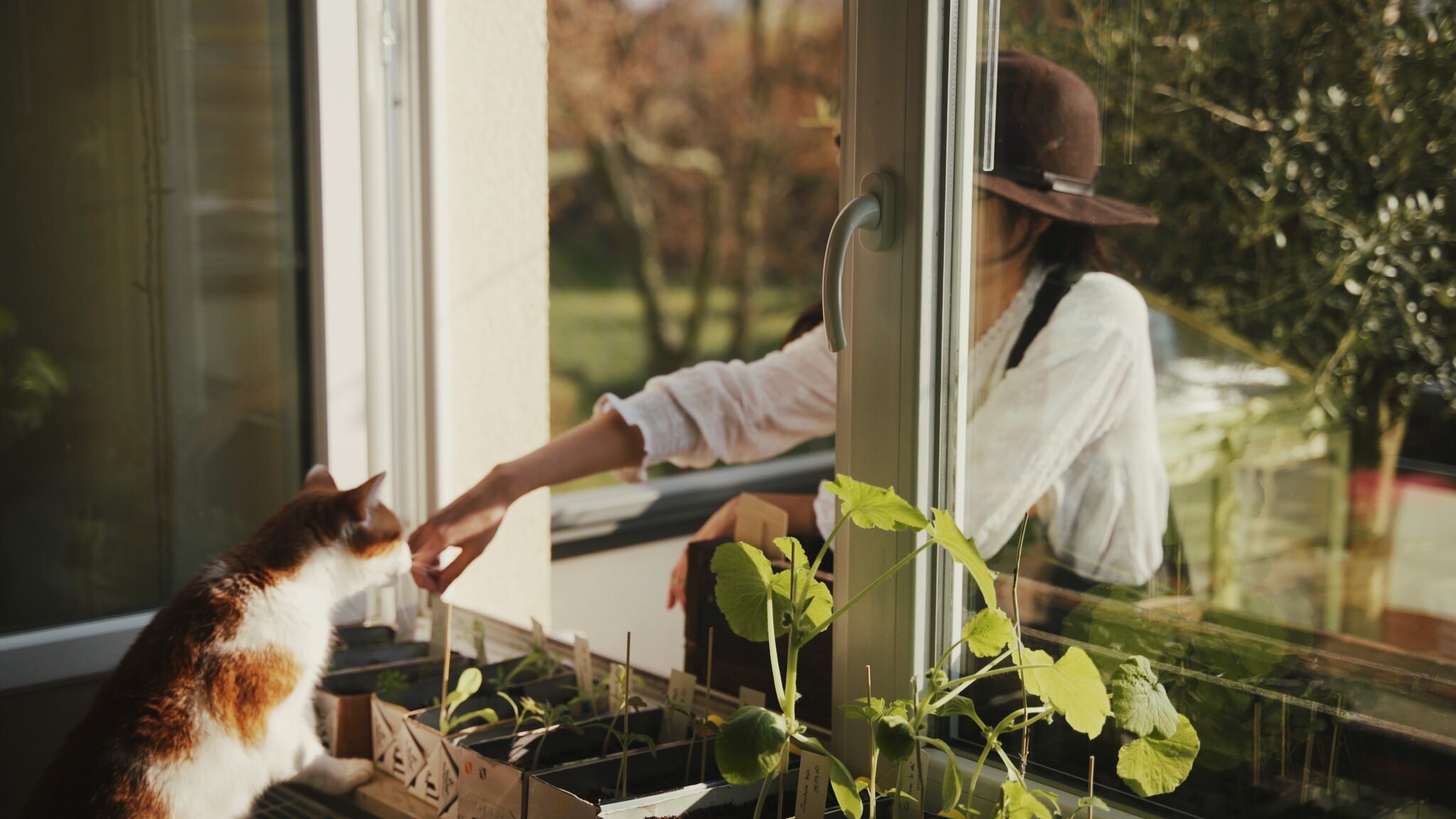
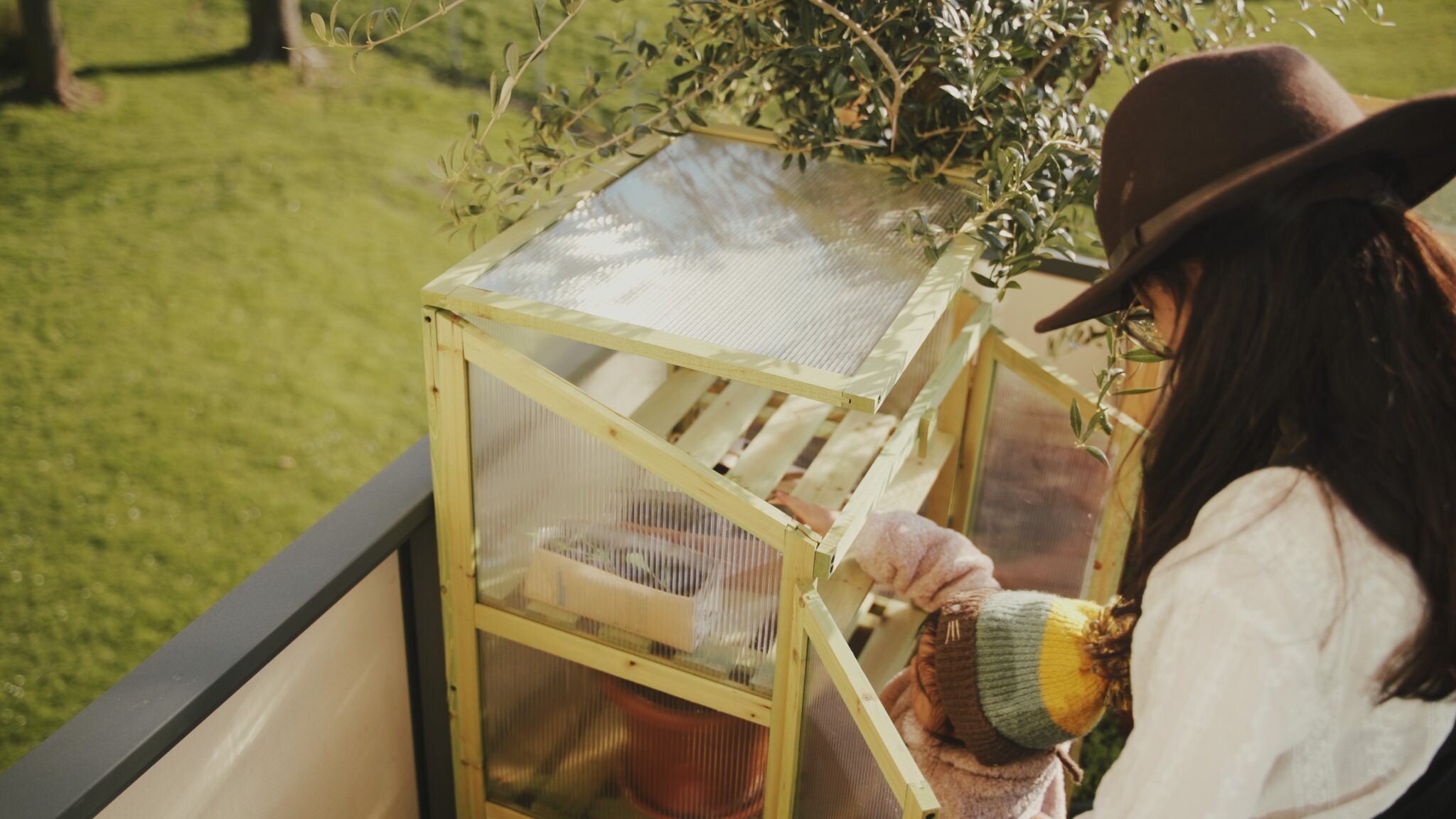
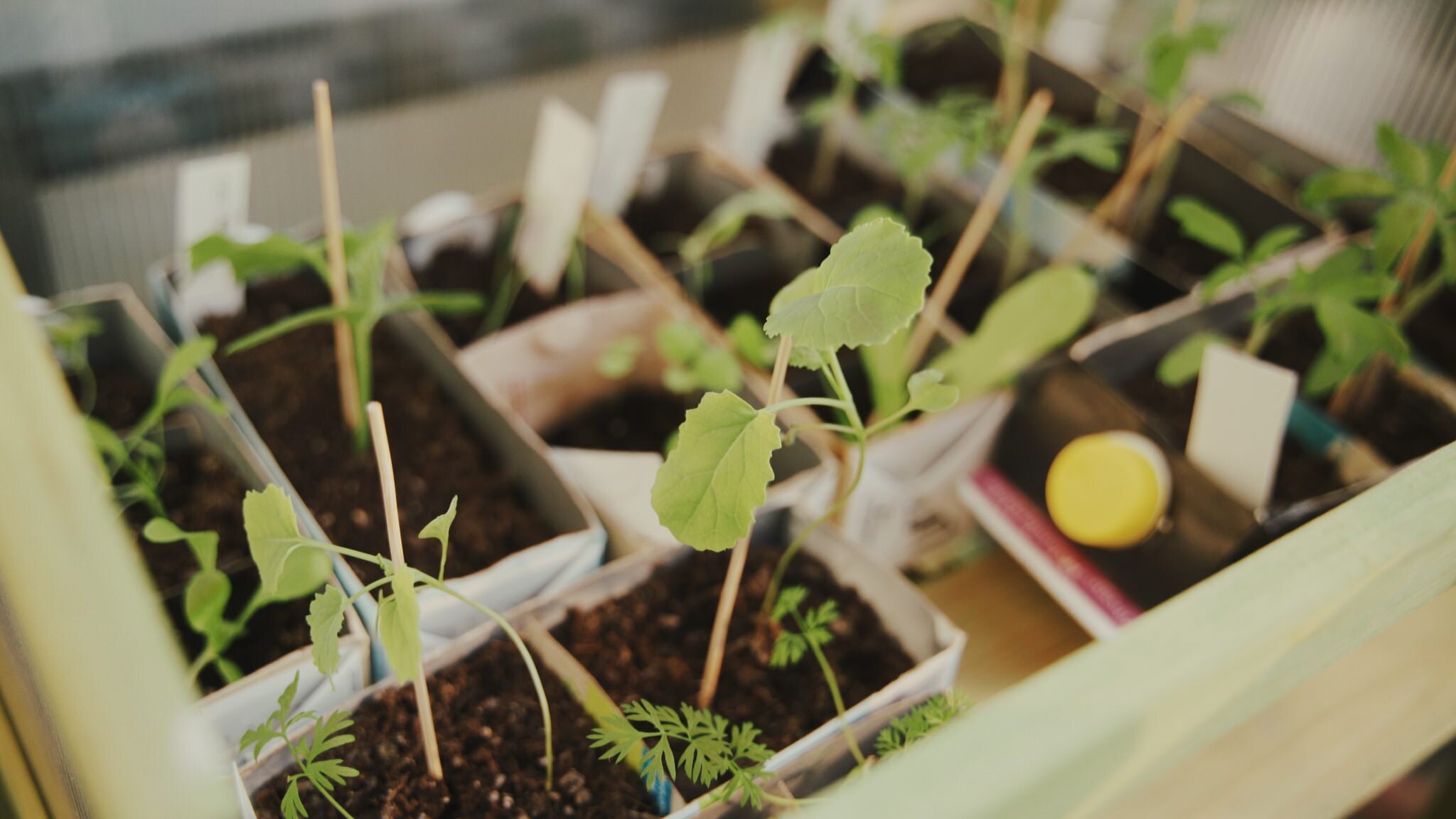
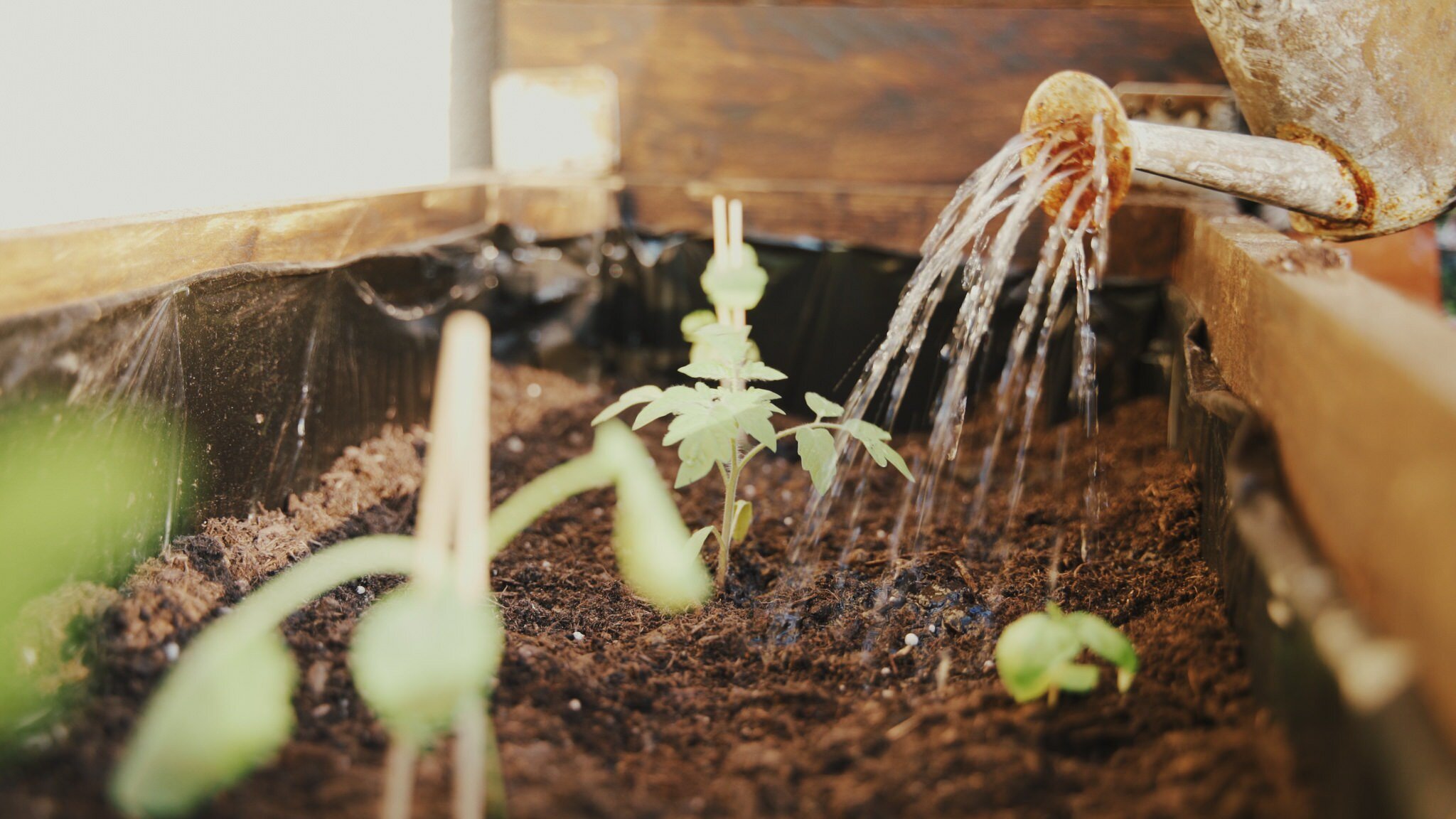
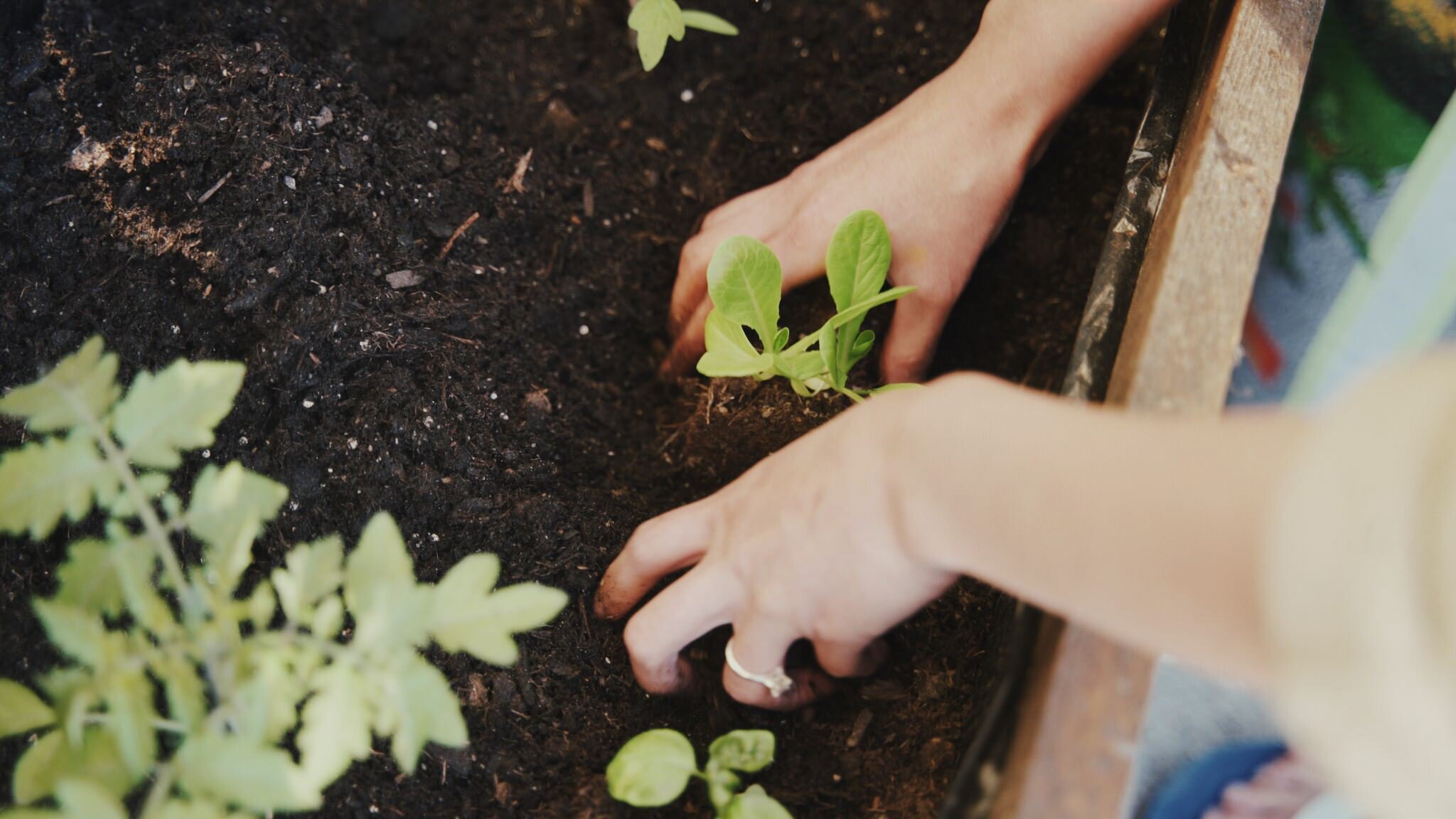
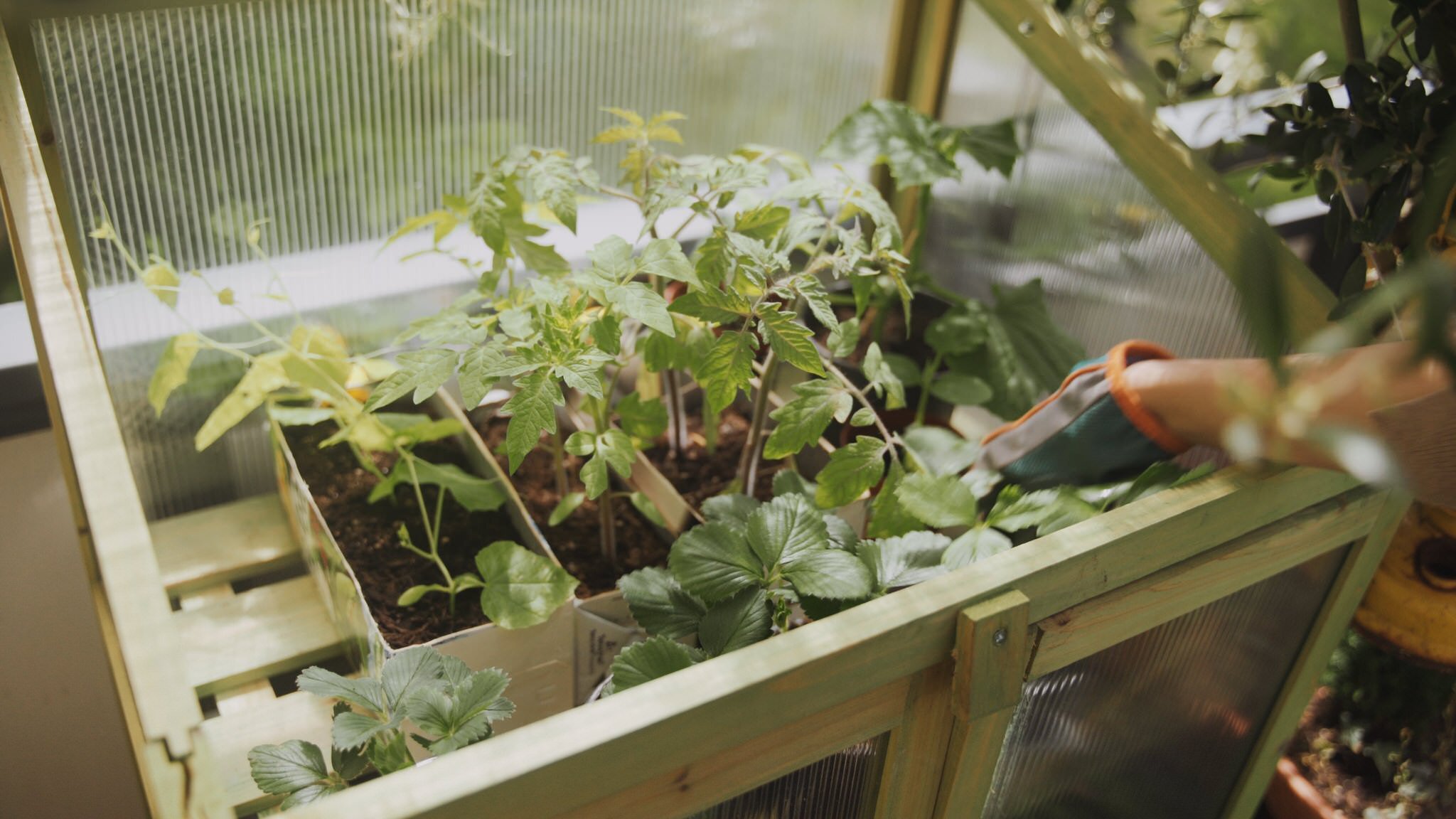
6) Chăm sóc
Ban công phố thị mùa hè siêu nóng, nên cần che phủ đất để giữ nước. Khi được thực hiện đúng cách, lớp phủ sẽ cắt giảm thời gian cần thiết để tưới nước, làm cỏ và chống lại sâu bệnh. Nói chung, điều này làm cho trái cây, rau và hoa tốt, khỏe hơn. Phủ bằng:
Rơm hoặc cỏ khô (mình dùng rơm)
Dăm gỗ hoặc vụn lá
Lớp phủ nhựa
Phòng trừ sâu bệnh.
Kẻ thù dai dẳng nhất là lũ rệp xanh (cả rệp đỏ và trắng) và để không ảnh hưởng đến mấy cây rau, hoàn toàn bio thì mình đã thử nhiều cách và thấy 3 cách sau khá hiệu quả và không gây hại tới sức khoẻ cũng như các loại ong, bướm, áp dụng được cho cả các loại rau nữa:1. 100gram tỏi băm nhỏ cho vào 3 lít nước nóng. Để nguội thì lọc tỏi rồi cho vào bình phun 2 lần sáng, chiều. Cách này sẽ không hết hẳn nhưng xịt được đều đều mà không sợ chết cây (4-5 lần 1 tuần cũng ok).
2. Cây lá tầm ma (ở Đức gọi là lá han - Brennesseln - mọc dại rất nhiều, ở đâu cũng có để đi hái được). Cây rất ngứa và gây đau rát nên nhớ đi ủng, đeo găng tay để hái và thái nhỏ nhé. Cứ 1 kg lá thì 10 lít nước. Ngâm 24 tiếng rồi lọc bã và phun lên lá.
+ Khá hiệu quả, không mất tiền. Ngâm 1-3 tuần thì có thể làm phân bón luôn.
- Bị ngứa 😂, nếu để quên ngâm lâu sẽ có mùi cực kì khó ngửi.3. Neem oil. Có thể mua ngoài Obi, Toom,... hoặc mua trên ebay, amazon. Pha theo tỉ lệ và làm theo hướng dẫn trên vỏ là được.
+ Hiệu quả. Nhanh gọn nhẹ.
- Không được xịt quá nhiều lần. Nếu xịt quá tay cây sẽ yếu dần 😅Ps: Mình xịt nước lên lá để làm trôi hết lũ bọ ra hẳn chỗ khác, xử chúng và bắt thêm bằng tay nếu nhìn thấy. Đừng tiếc hay chần chừ mà hãy mạnh tay cắt tỉa bớt những cành, lá đã bị hư hỏng hoặc quá yếu, sau đó mới áp dụng 1 trong 3 cách trên.
Đừng áp dụng cả 3 cách một lúc nhé nếu không muốn tạm biệt luôn đám cây hoa! Áp dụng luân phiên và cách tuần thì được để ngăn chặn và tránh sự phát triển của chúng.
Tiếp thêm phân bón khi cây bắt đầu tăng trưởng mạnh, đặc biệt là lúc bắt đầu ra hoa: Từ thùng Bokashi, có thể lấy nước ra mỗi ngày, nước này được sử dụng như phân bón lỏng cho cây. Pha tỉ lệ 1:50 với nước rồi tưới cho cây.
Nếu bạn không dùng Bokashi thì có thể mua dạng phân lỏng đóng chai, hoặc phân gà khô, móng các loại động vật,…. để bón thêm cho cây.
6) Cultivating
Balconies in urban areas in summer are super hot, so it is necessary to cover the soil to retain water without the need of watering a few times a day. When done properly, the mulch reduces the time required for watering, weeding and fighting pests. In general, this results in better, healthier fruits, vegetables and flowers.
The soil can be covered with:
- Straw or hay (I use straw)
- Wood chips or leaf chips
- Plastic coatingPest control
The most persistent enemies of my garden were aphids (both green, red and white aphids) and in order to grow my vegetables completely in an organic way, I avoided pesticides of all cost. I have tried and experimented many methods and found that the following 3 methods are quite effective and they are also good for bees, butterflies and good insects…
1. 100 grams of chopped garlic into 3 liters of hot water. Let to cool, filter the garlic and put in a spray bottle. Spray it 2 times in the morning and afternoon. The aphids won’t die completely but you can spray regularly without damaging the vegetables (4-5 times a week is ok).2. Stinging nettle leaves
(It‘s called Brennesseln in Germany - they are everywhere and you shouldn’t have any problems finding them). It’s very itchy (hence the name) and painful so remember to wear boots and gloves when picking and chopping. For every 1 kg of stinging nettle leaves use 10 liters of water. Soak for 24 hours, then filter the pulp and spray on the leaves . Really effective and cost zero money. Soak it for another 1-3 weeks, and you can use it as fertilizer too.3. Neem oil.
Can be purchased in hardware store like Obi, Toom, ... or you can buy it on ebay, amazon. Follow the instructions. This method is effective and fast but don’t overuse it and spray too frequently. Otherwise you will weaken the vegetables 😅Ps: I spray water on the leaves to get rid of all the bugs, and then treat them using one of the three methods mentioned above and catch more by hand if needed.
Do not hesitate to forcefully prune the branches and leaves that are too damaged or too weak caused by aphids, then apply 1 of the 3 above methods.
Do not apply all 3 ways at once if you do not want to say goodbye to your plants! Apply them alternately and every other week is okay to prevent and avoid aphids’ growth.Add fertilizer when the plant begins to grow strongly, especially at the beginning of flowering phase:
Every other day, draw off the liquid from the Bokashi bin - it can be used as ertilizer (in a very diluted form) for the plants. Mix 1: 50 with water and water the plants. If you don't use Bokashi, you can buy bottled liquid fertilizer (which I’m not a fan of), dry chicken manure, animal hooves… to fertilize the plant.
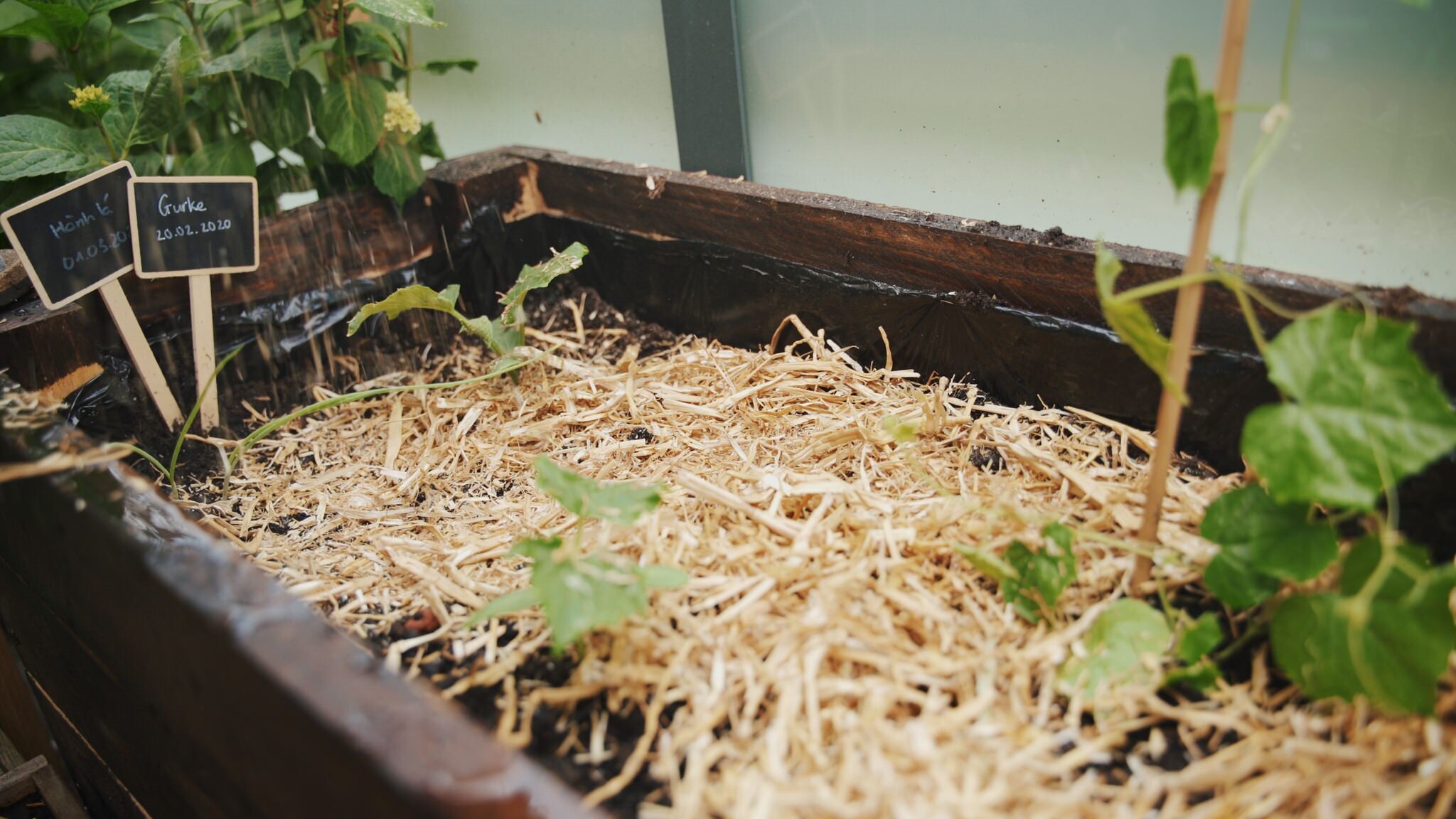

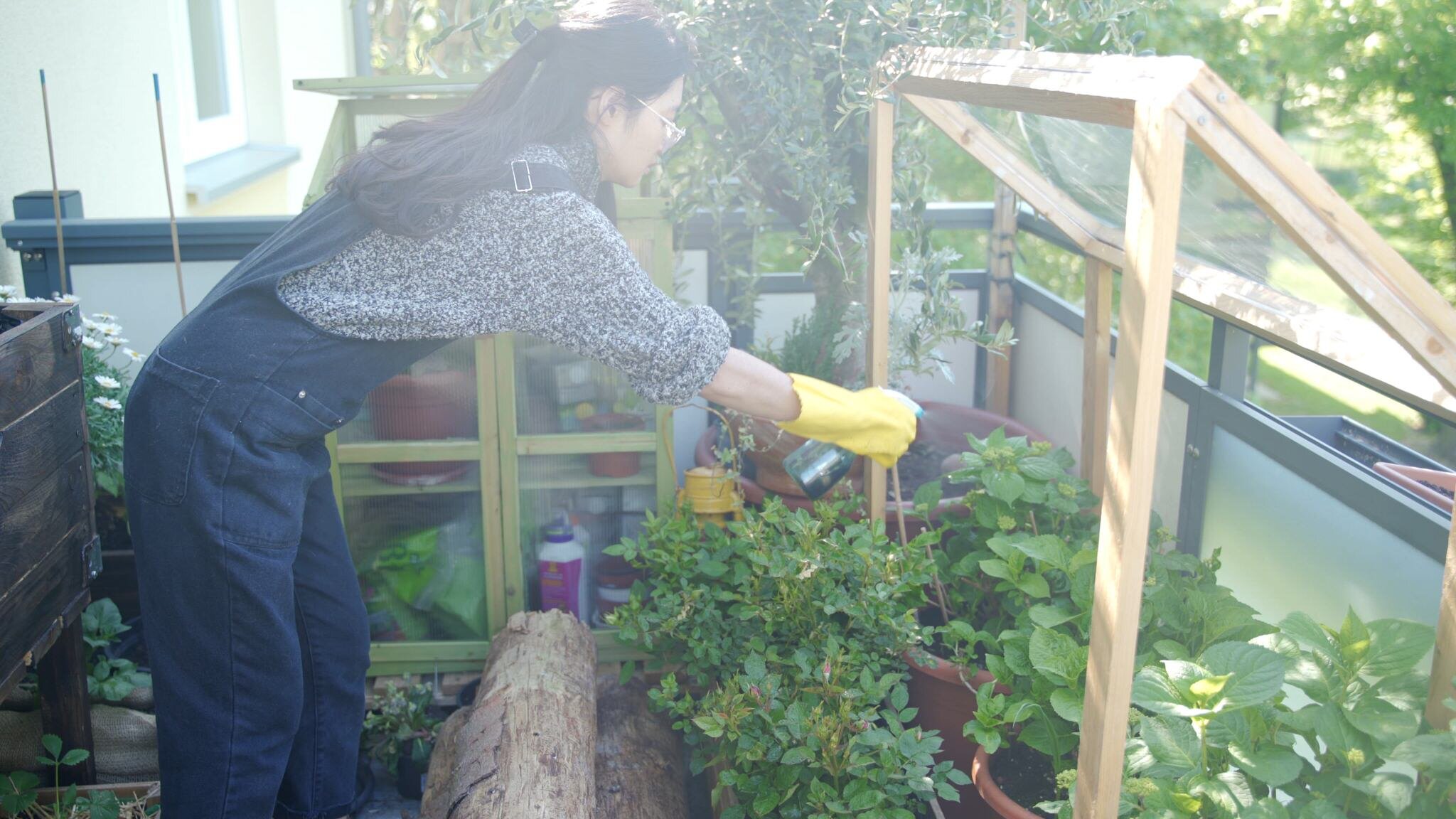
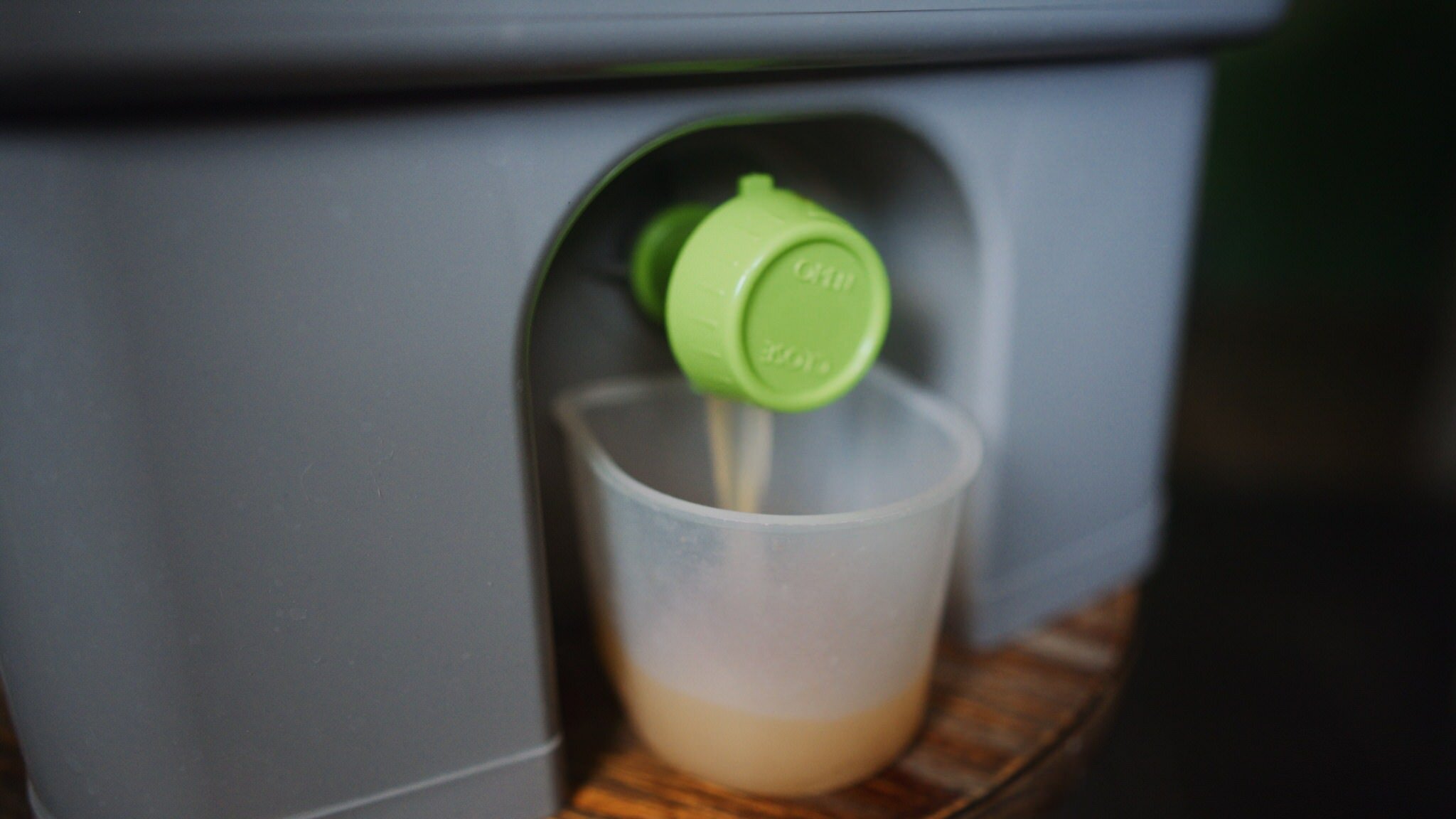
7) Làm giàn đỡ cây
Với một số loại cây cần giãn đỡ như dưa chuột, đỗ, bầu, bí,…. có thể làm giàn hay khi mới bắt đầu gieo trồng. Tuy nhiên vì hơi lười nên khi cây bắt đầu leo mình mới làm giàn. Có thể làm giàn từ các que tre hoặc các thanh gỗ, hoặc làm giàn dạng lưới với các loại cây cho quả nhỏ (dưa chuột mini, mướp bao tử,…)
7) Making Trellis
Plants such as cucumber, beans, gourd, squash… you need to make a trellis when start planting. However, because I was a bit lazy in the beginning, I only made them when the tree started climbing lol. They can be made from bamboo sticks or wooden stabs, or you can even make a trellis net for small fruit trees (mini cucumber, baby loofah...)
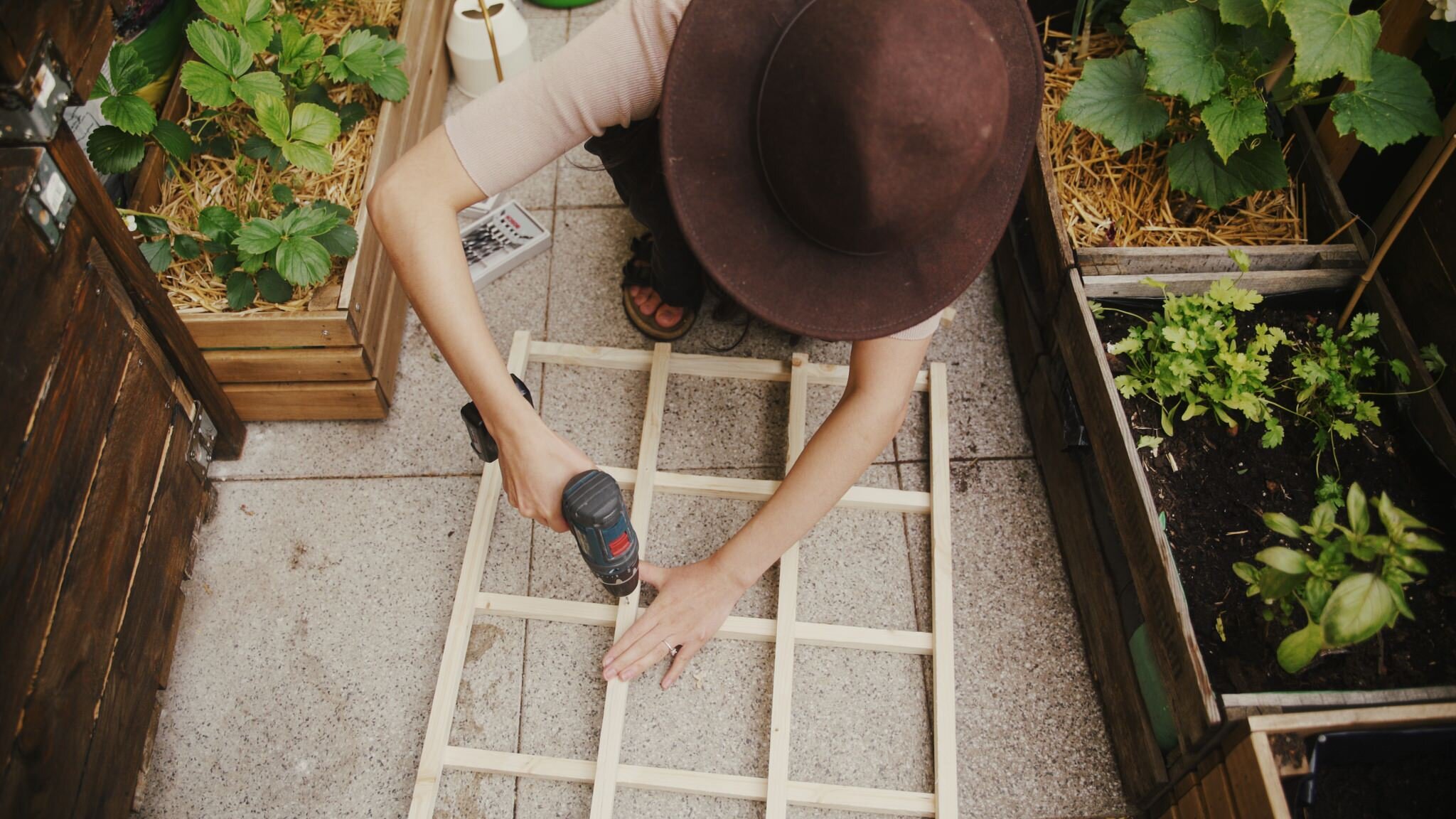
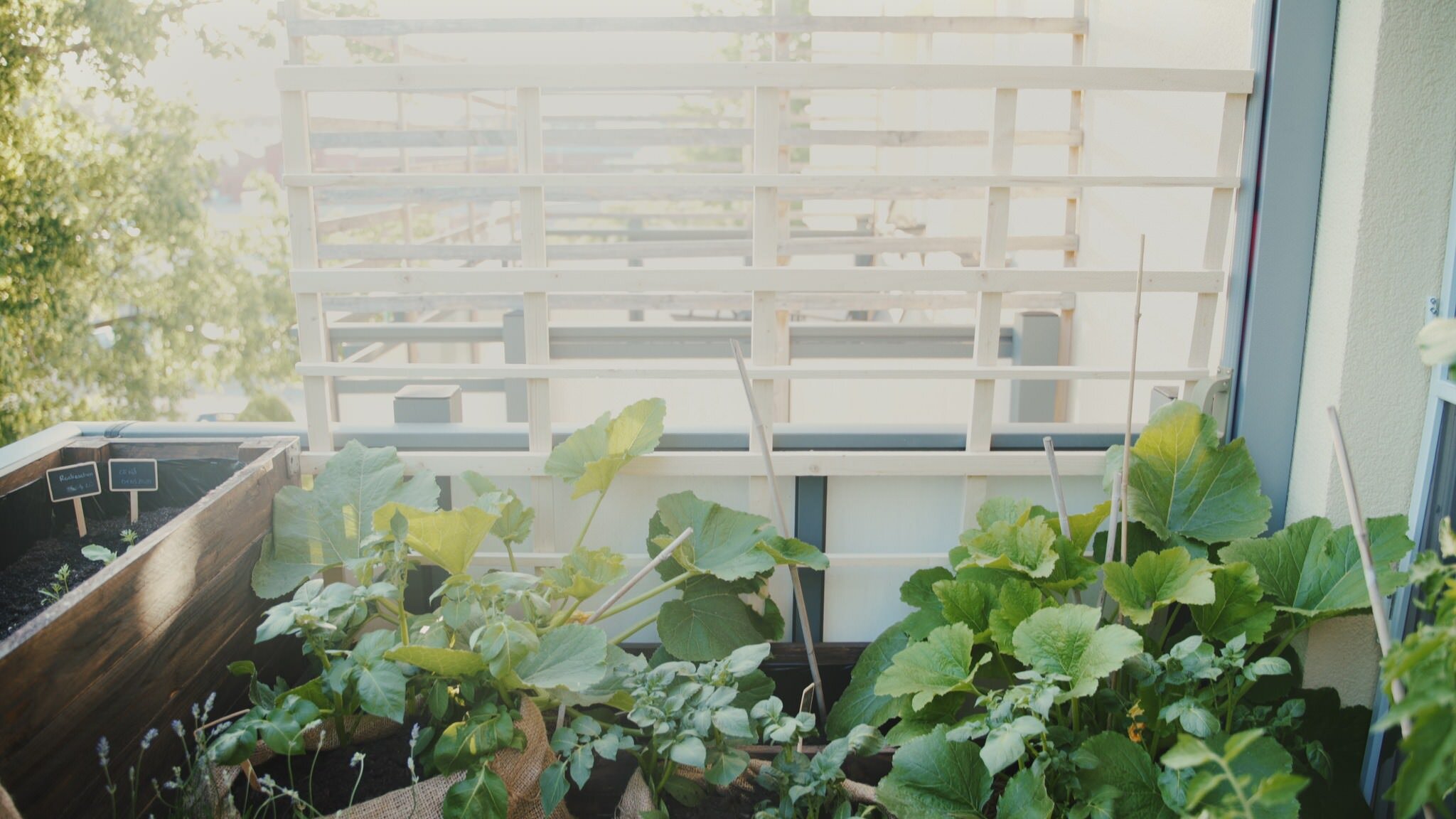
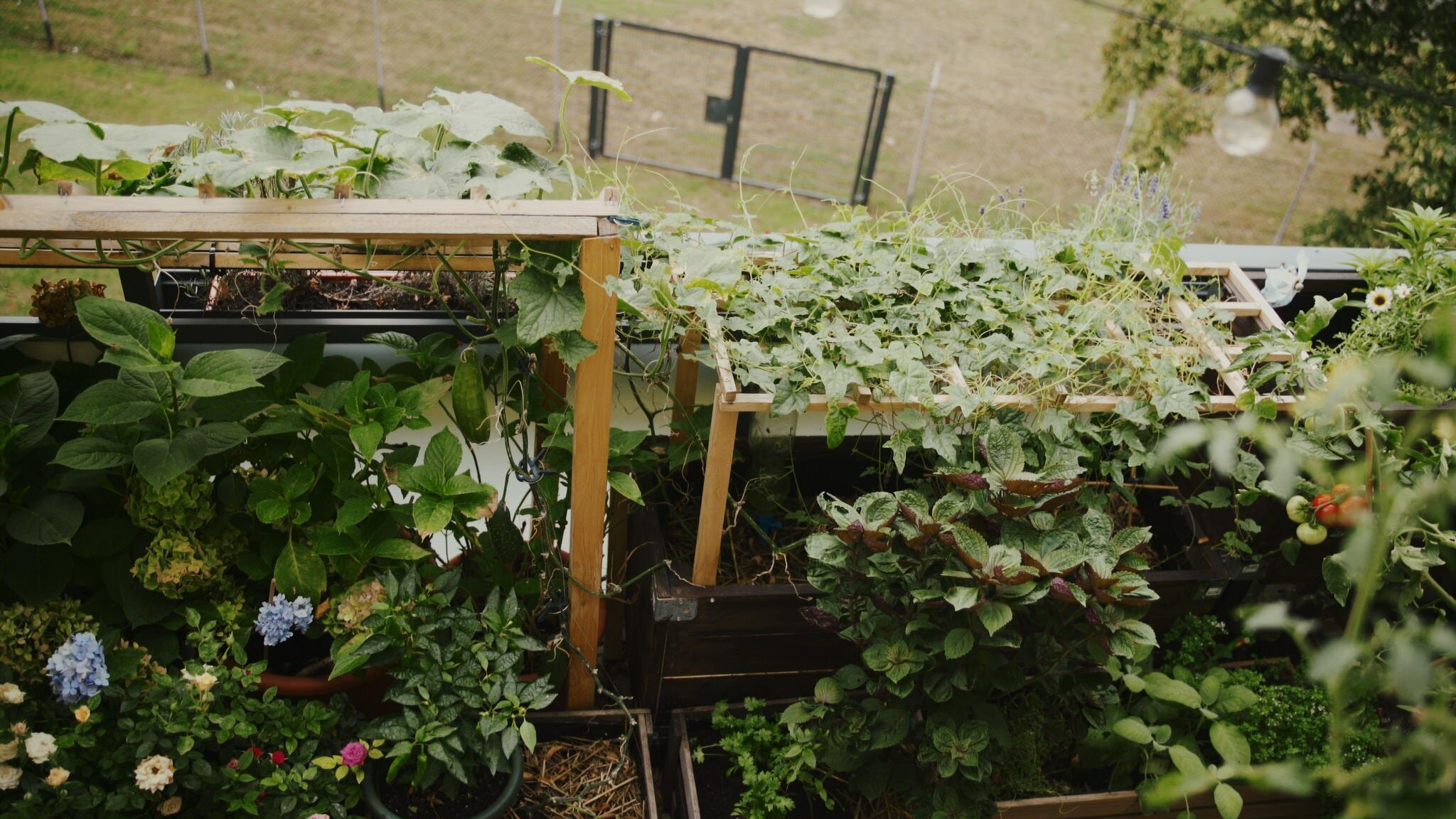
8) Thu Hoạch
Bắt đầu từ tháng 6, chúng mình liên tục được thu hoạch. Nhiều khi ăn không kịp, phải muối để giữ được lâu và đem tặng hàng xóm. Tất nhiên là không thể đủ cung cấp 100% cho cả nhà nhưng cũng đã giảm bớt được số lượng rau phải mua khi đi chợ rất nhiều.
Cùng ngắm khu vườn bé xíu nhưng mang lại niềm vui cho chúng mình mỗi ngày nhé!
8) Harvesting
Starting from June, our balcony garden can be harvested very regularly. Sometimes, when we couldn’t keep up with the pace, we had to salt or conserve the veggies to keep it for a long time and give it to neighbors or eat later. Of course, it is not possible to be 100% self-sufficient for the whole family, but it also reduces the amount of vegetables need to bought when shopping a lot. And moreover, they are super fresh and clean! Let's take a look at the tiny garden that brings us joy every day!
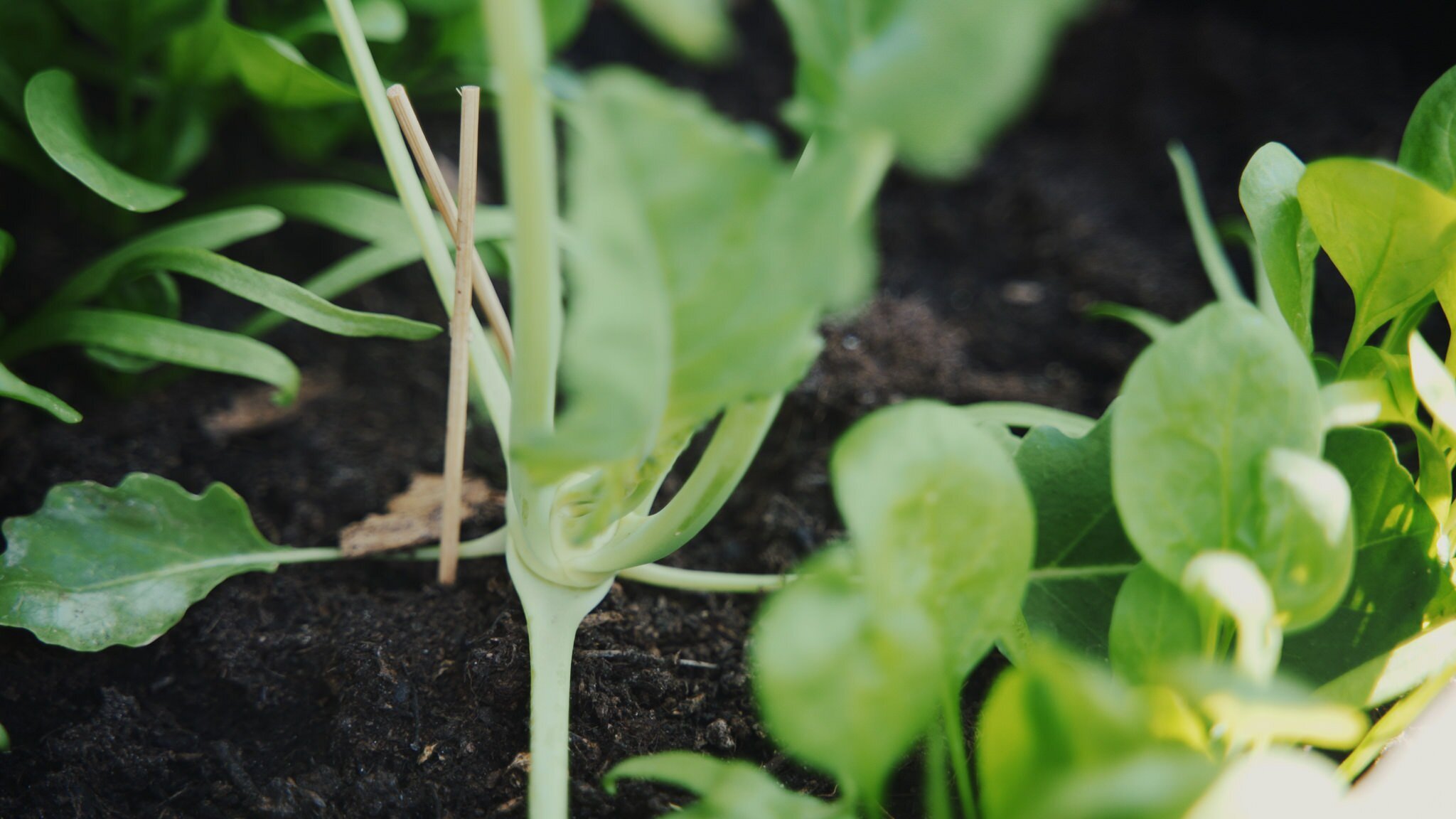
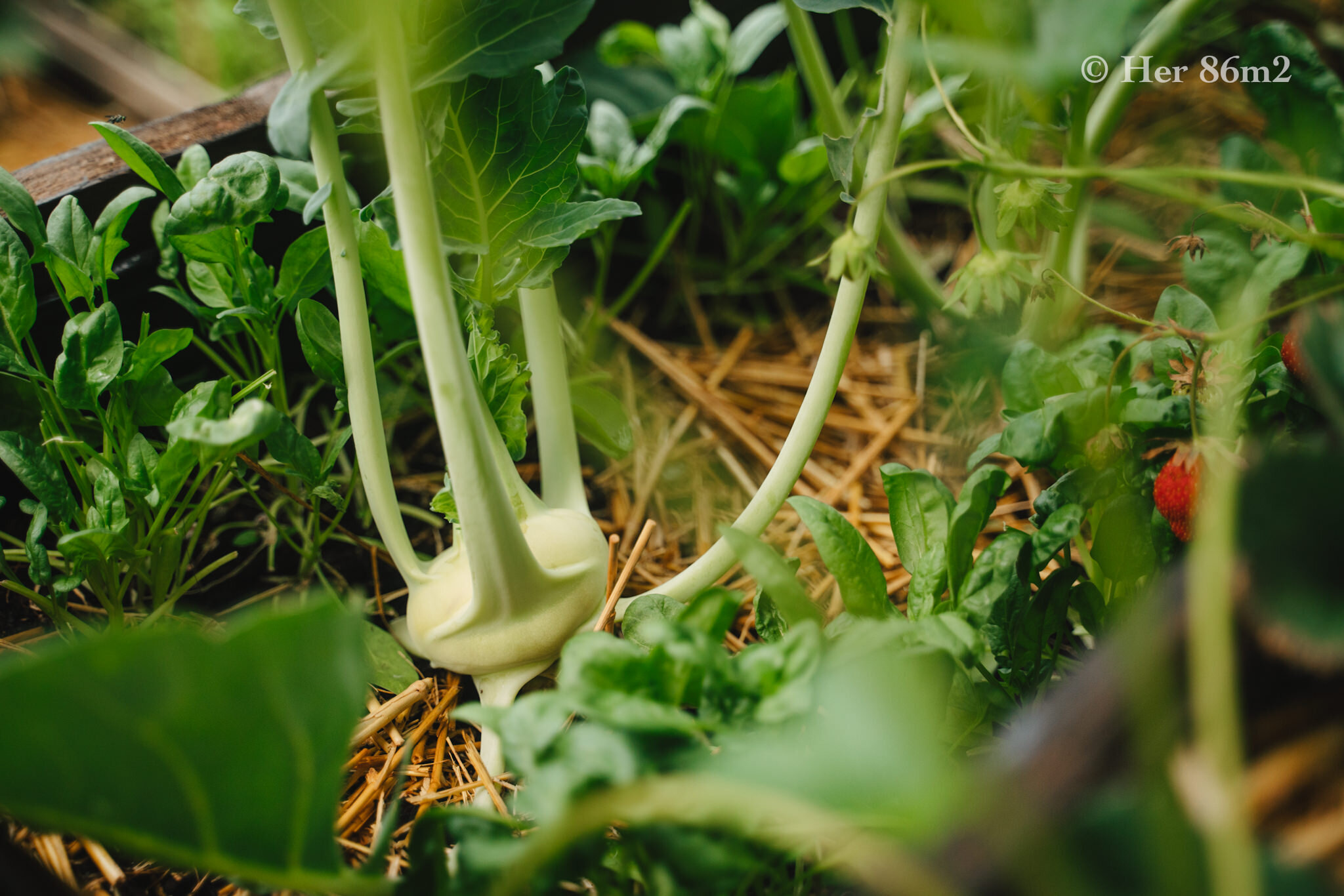
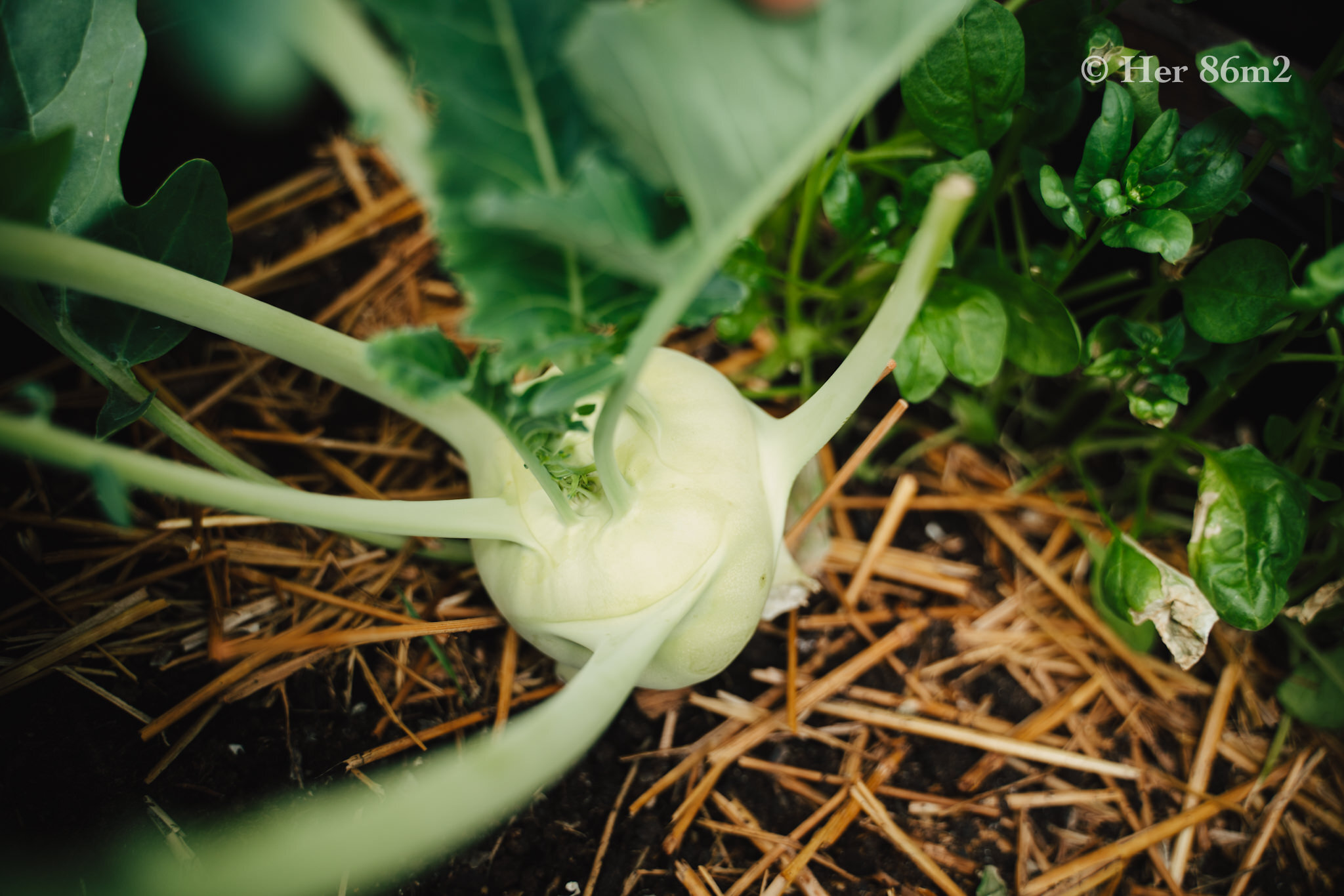
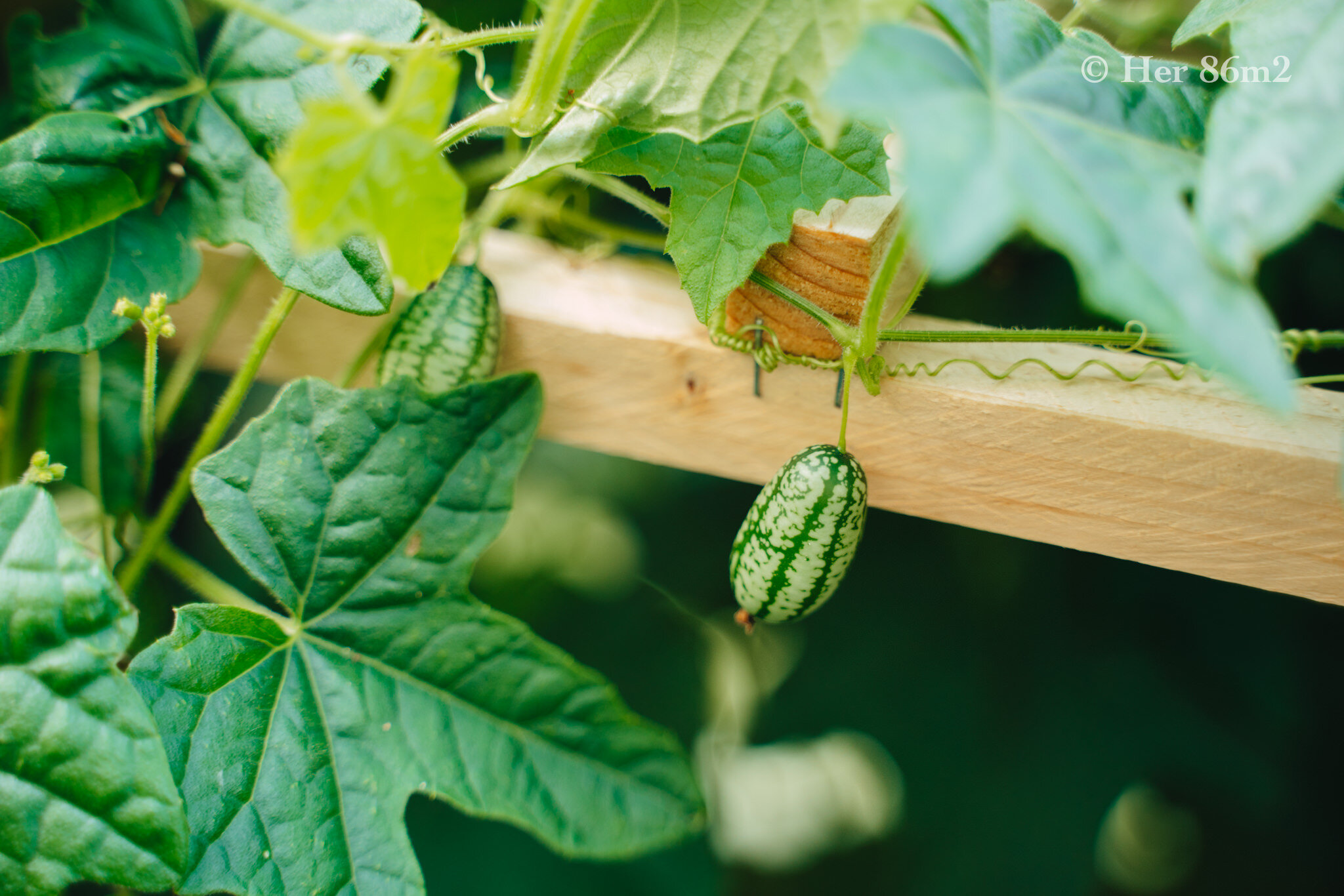
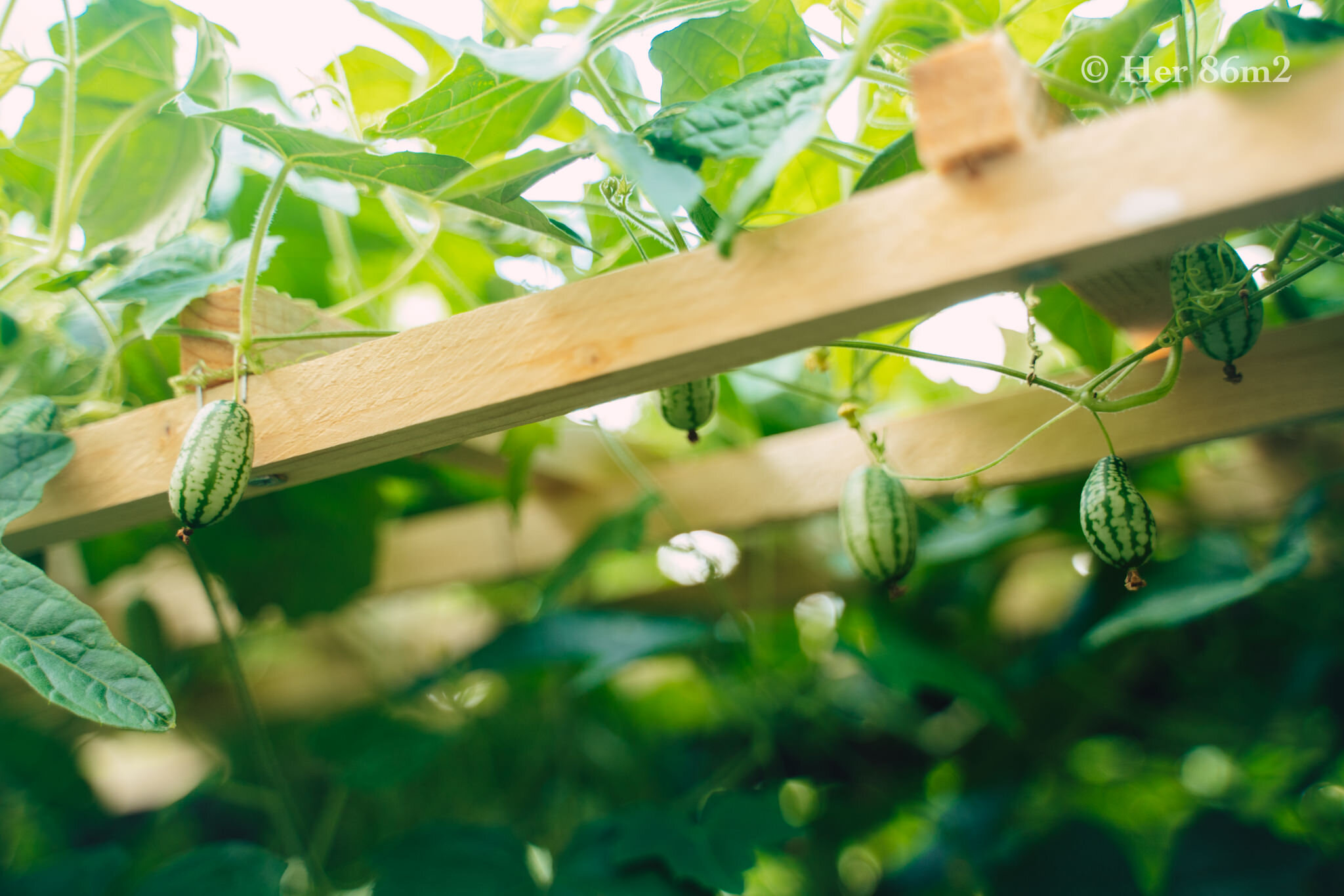
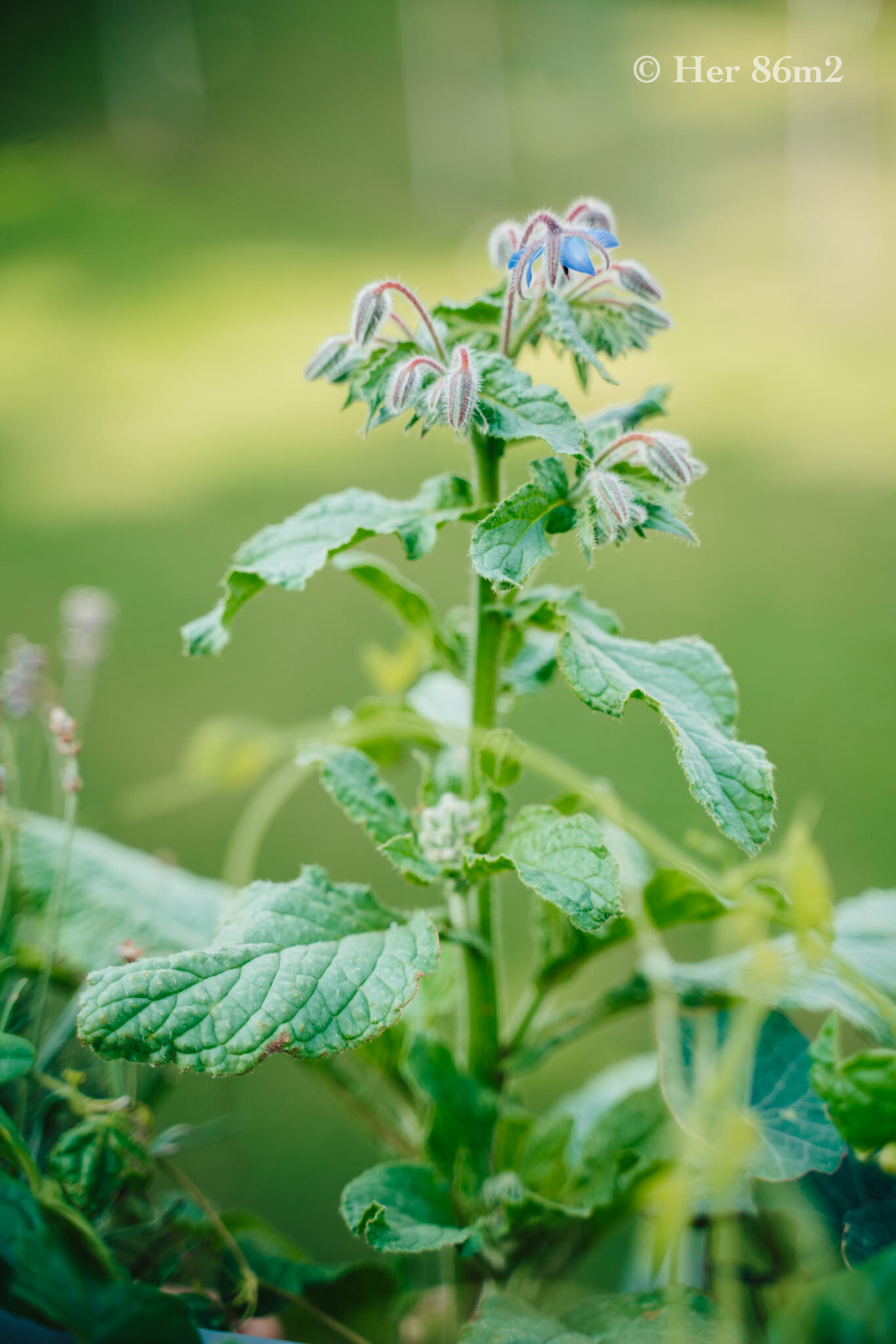
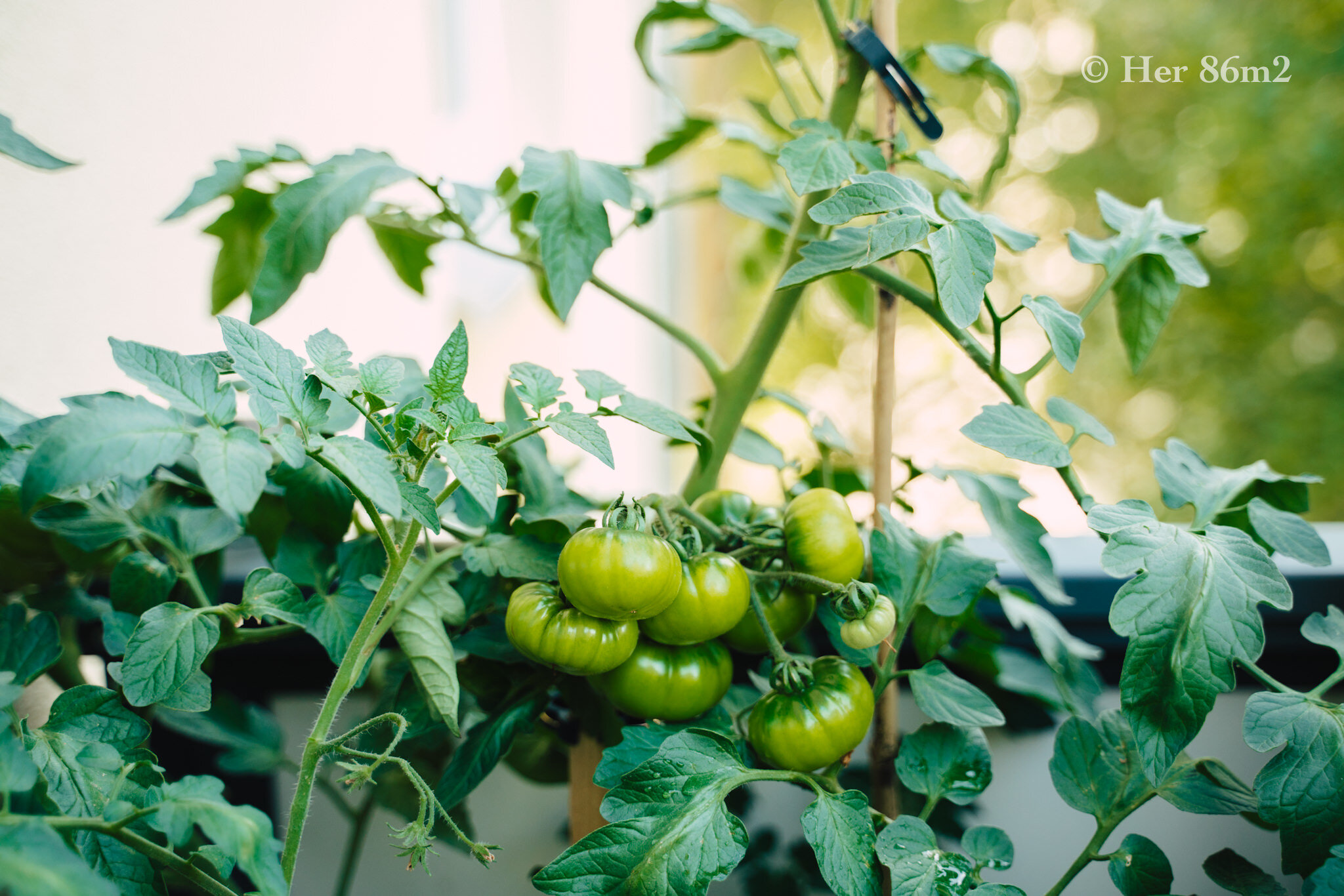
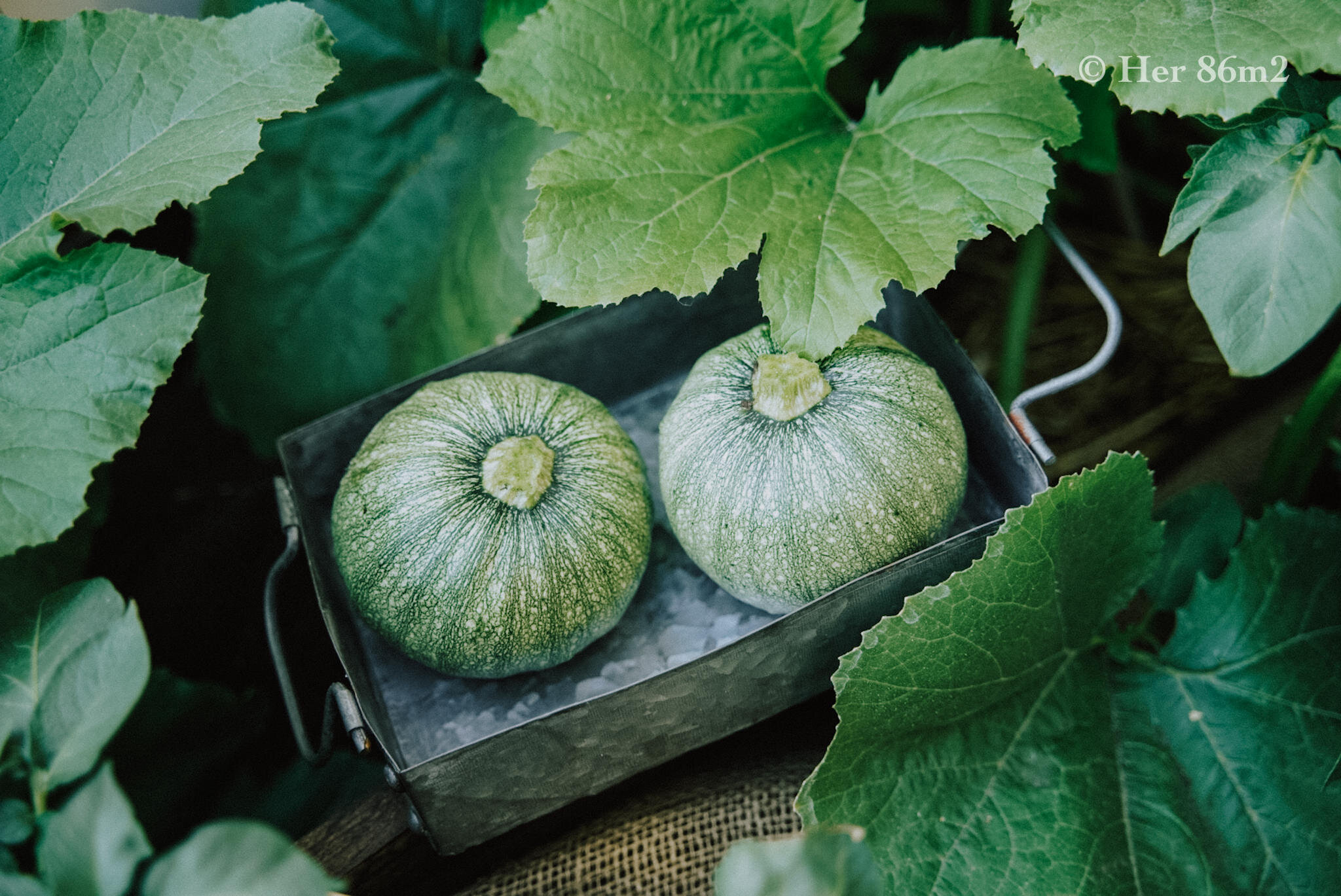
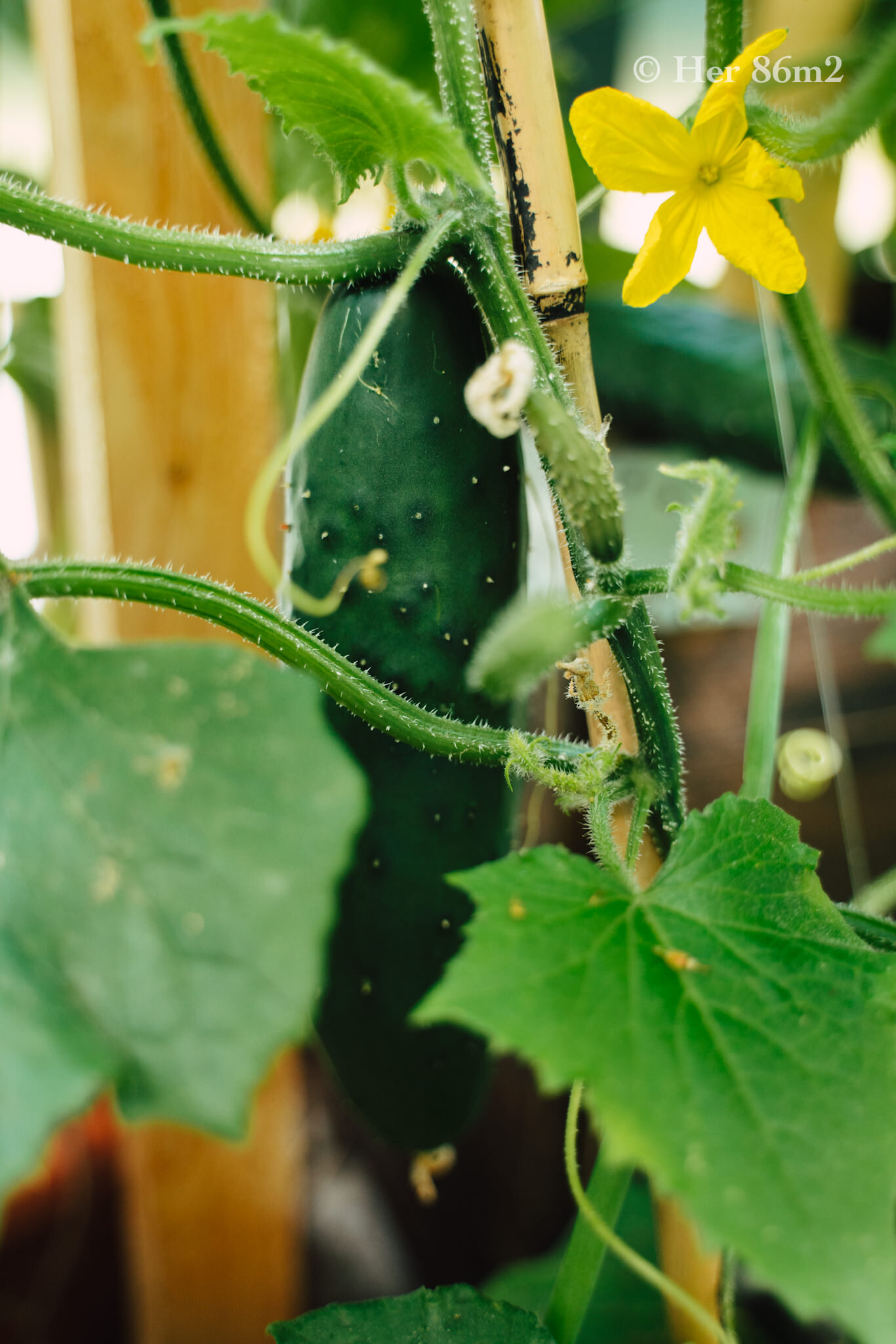
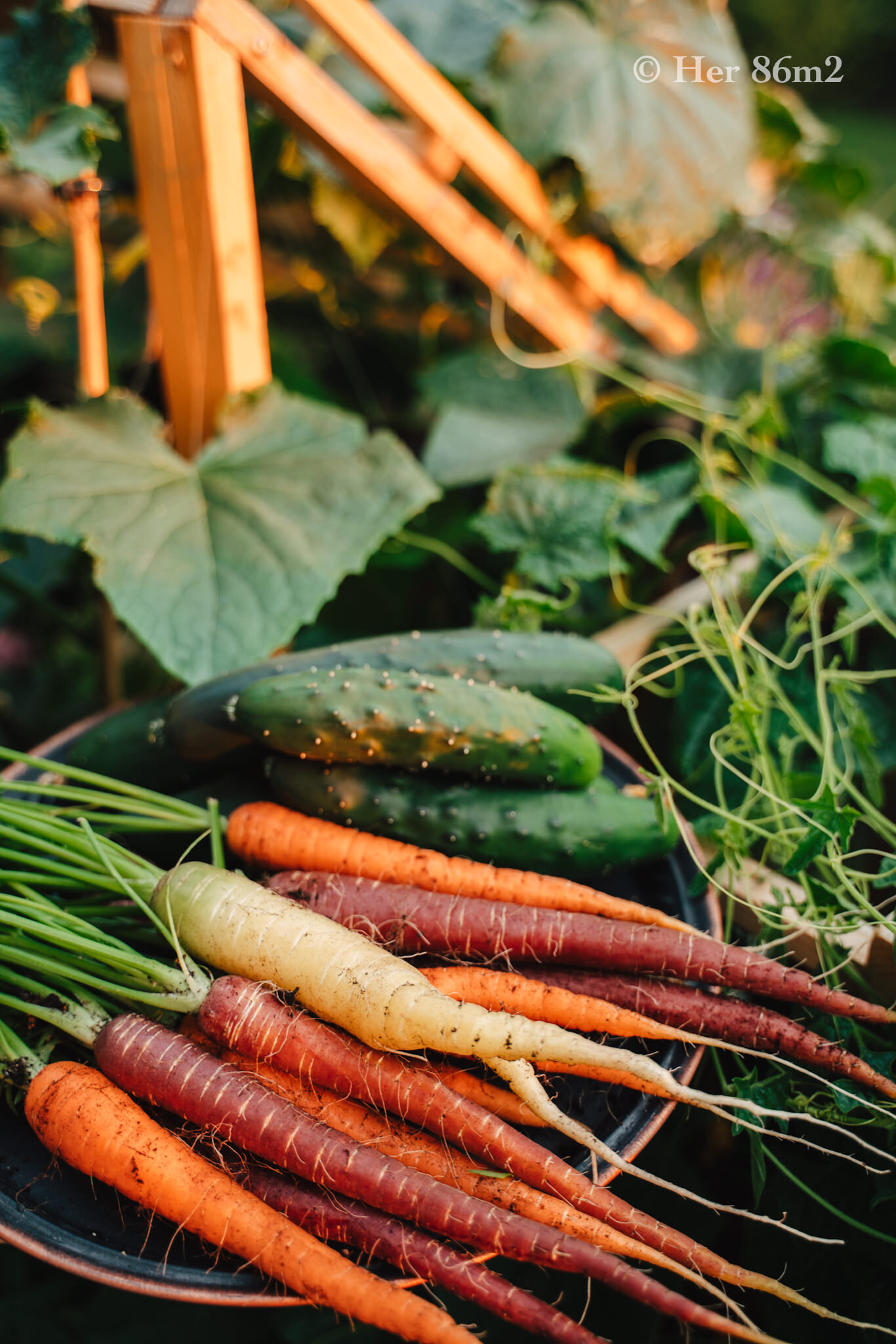

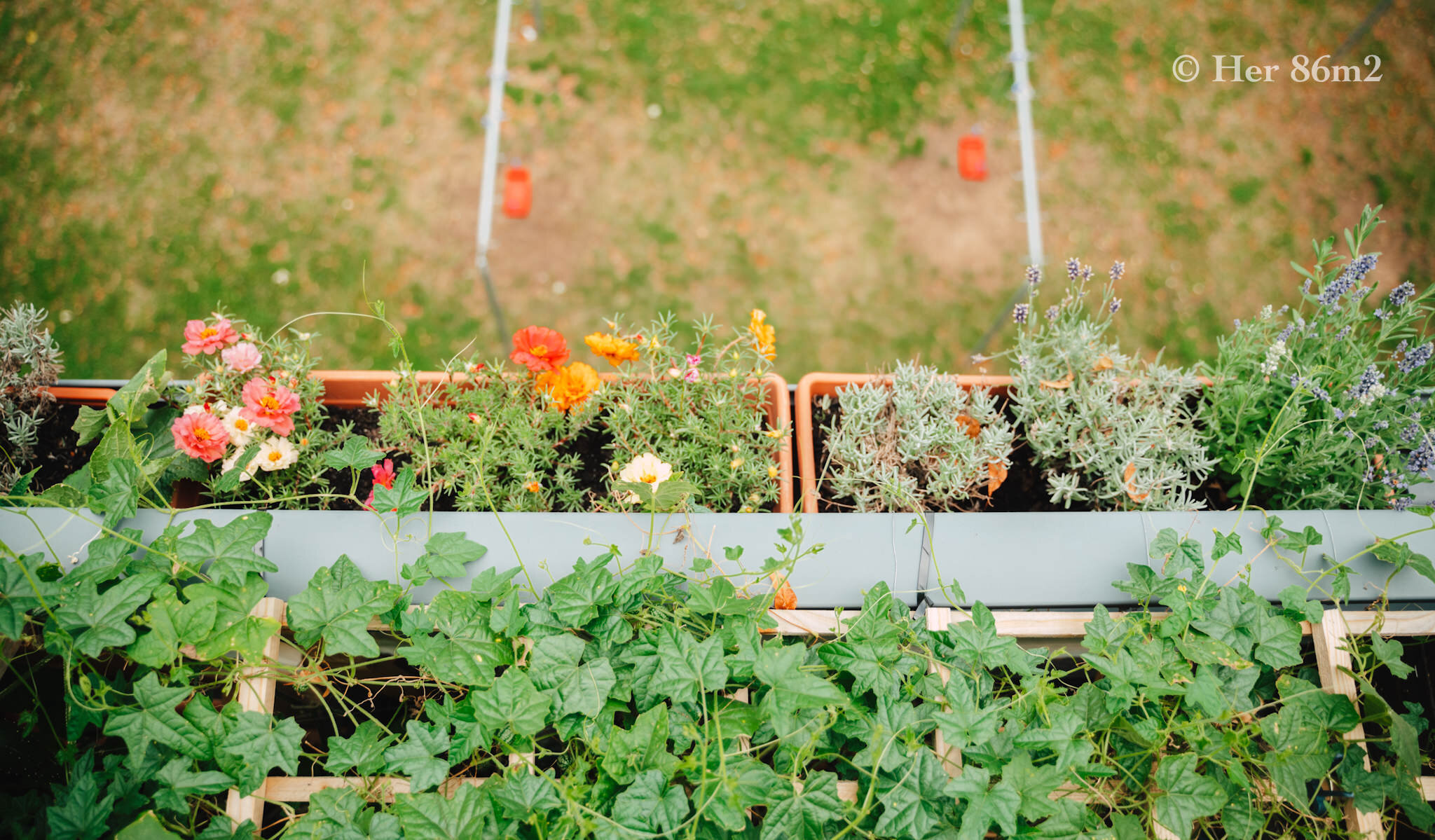
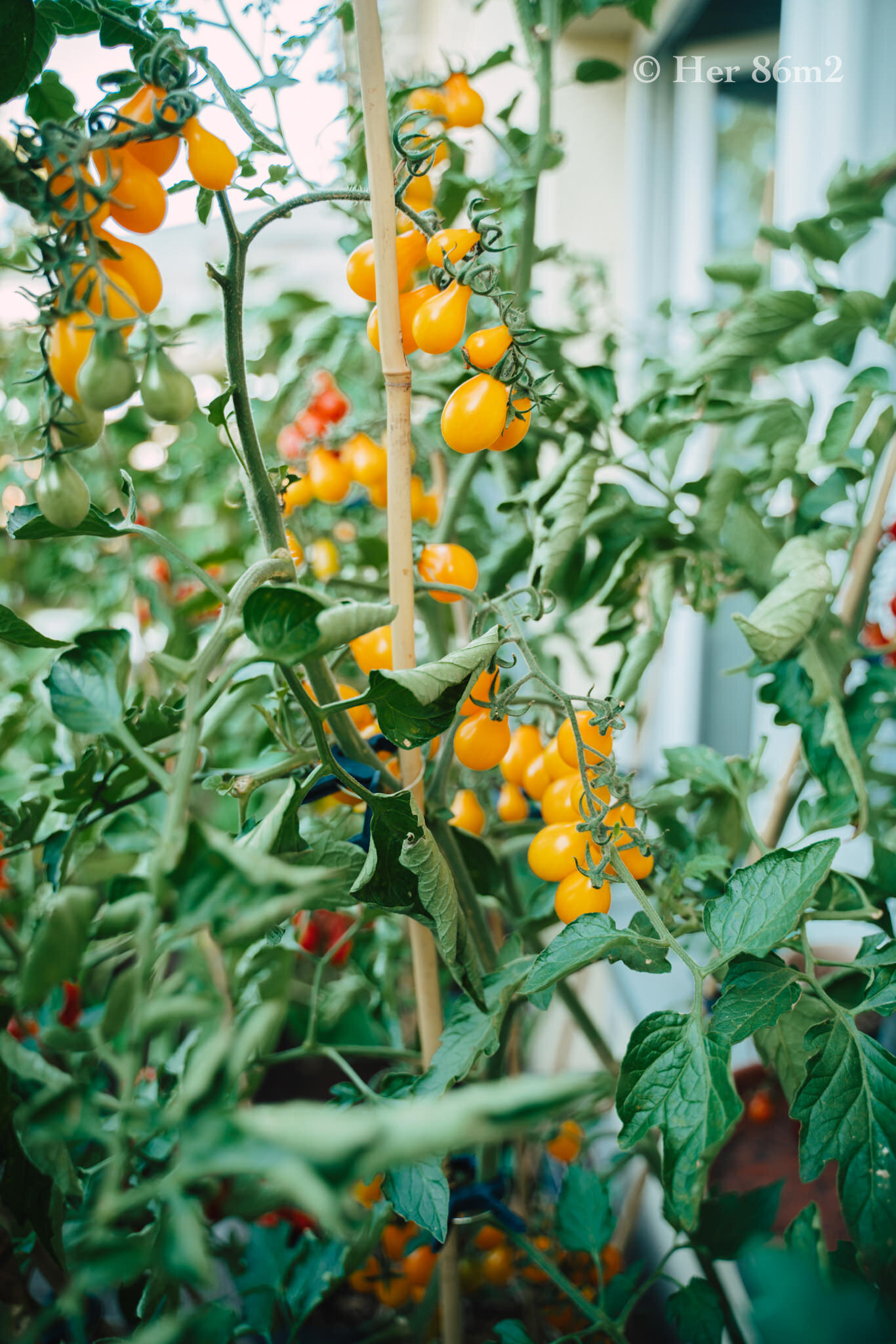
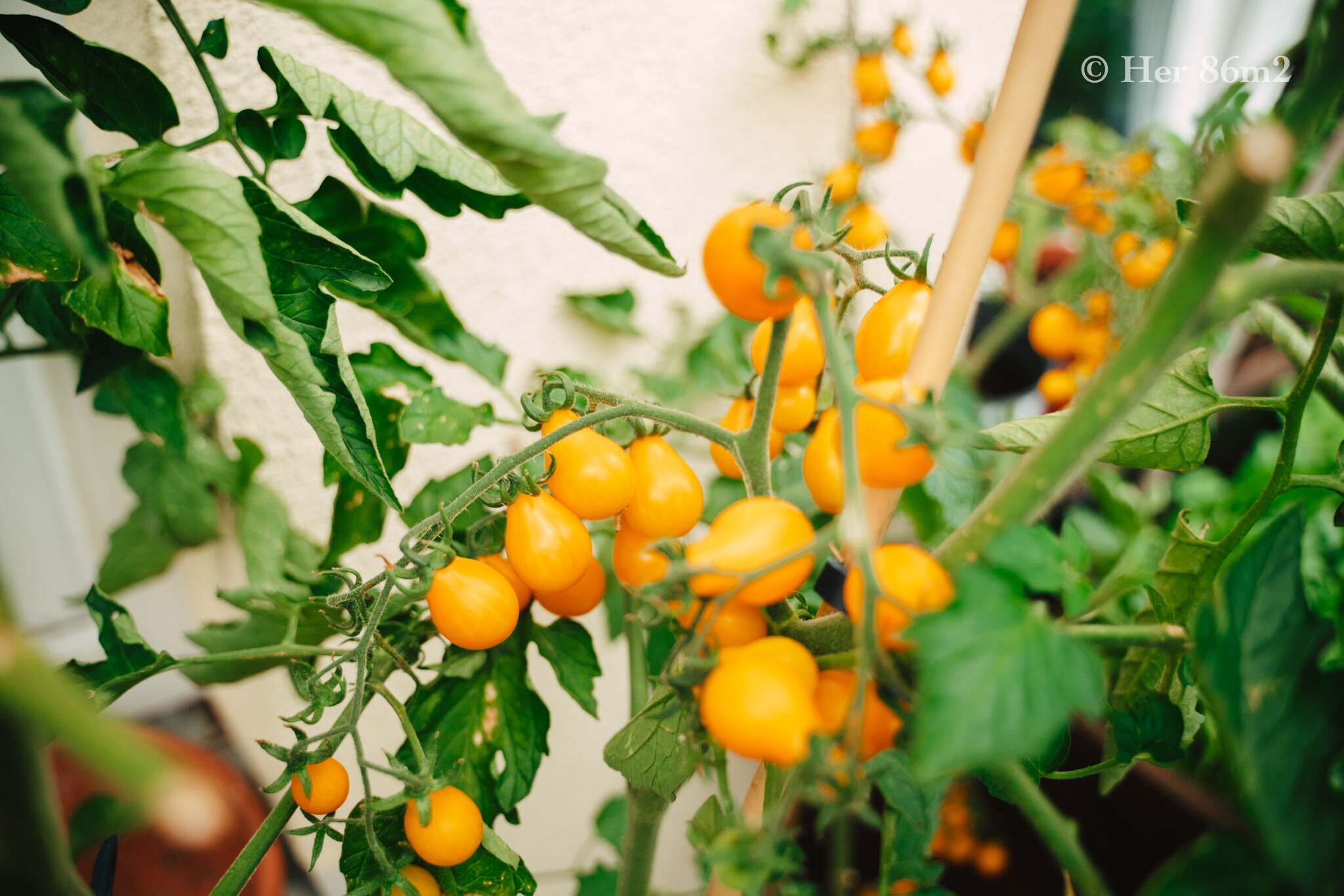
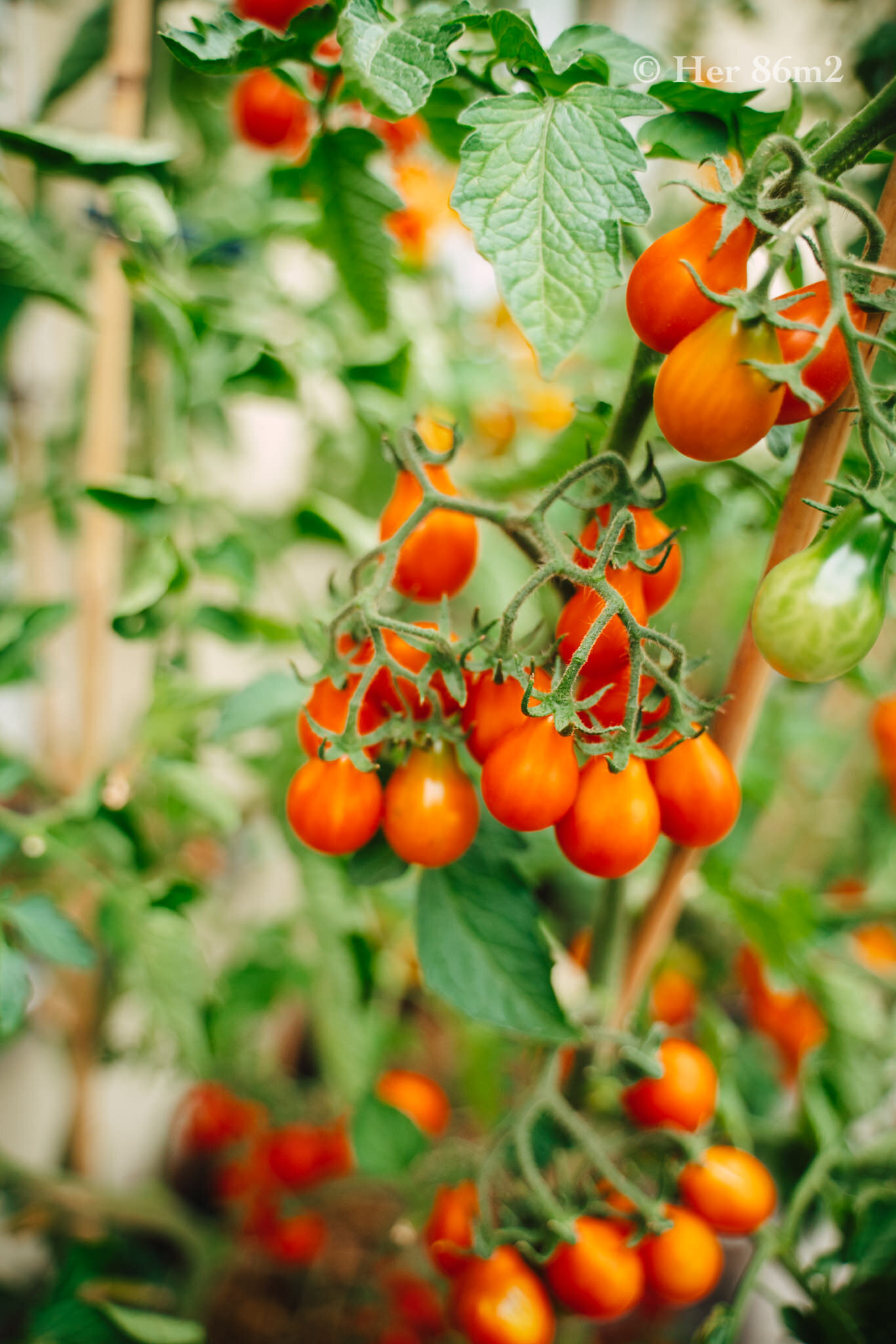
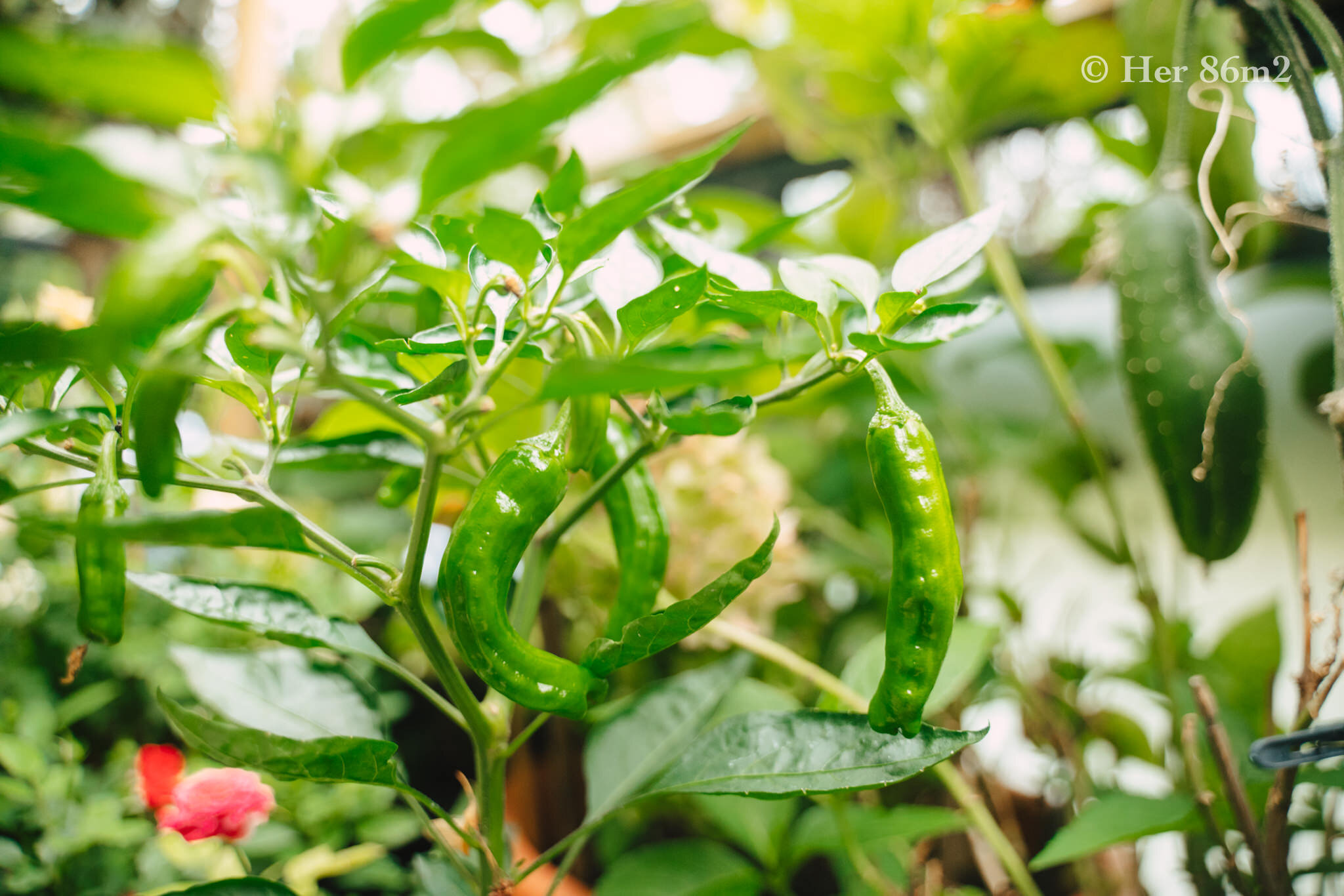
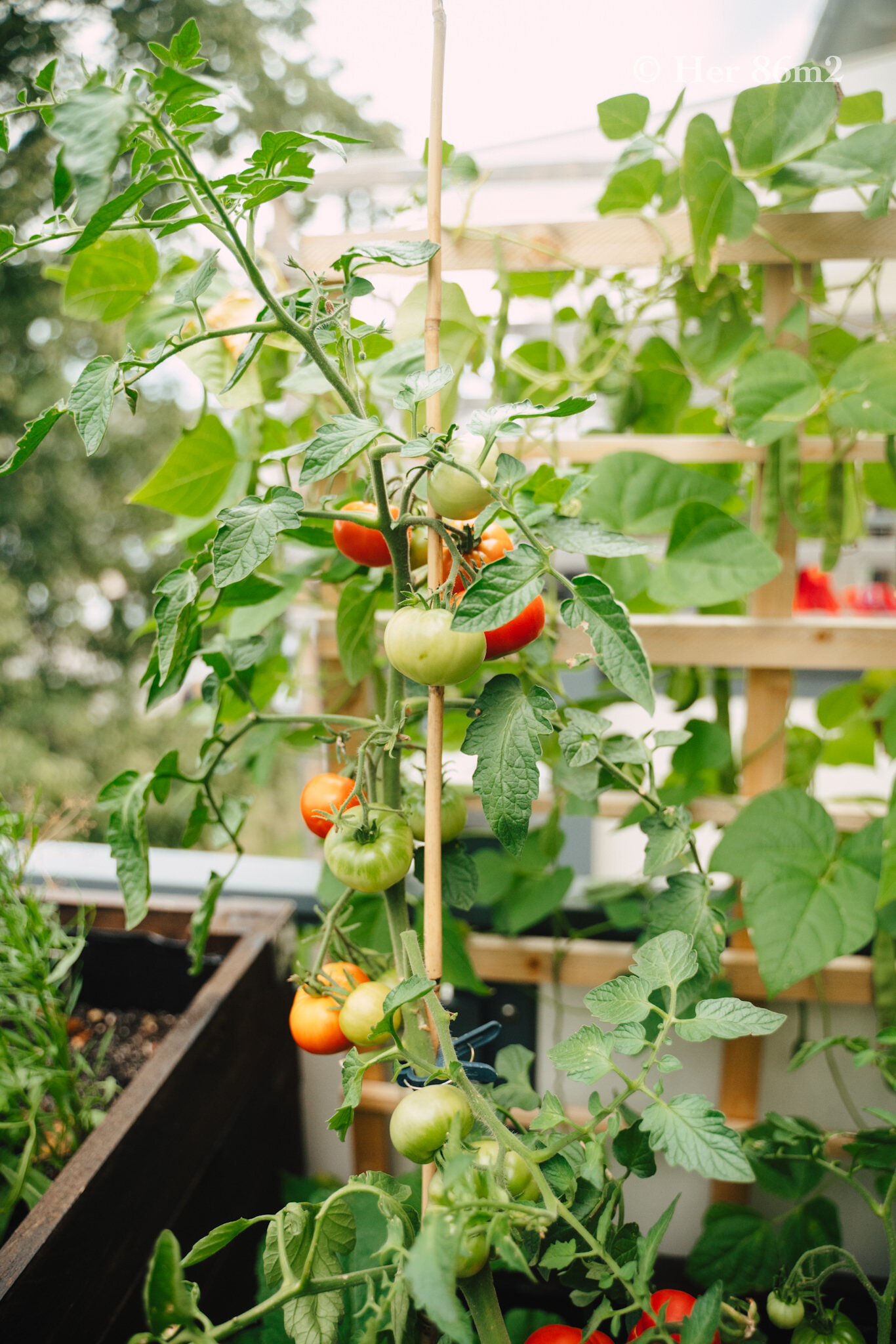
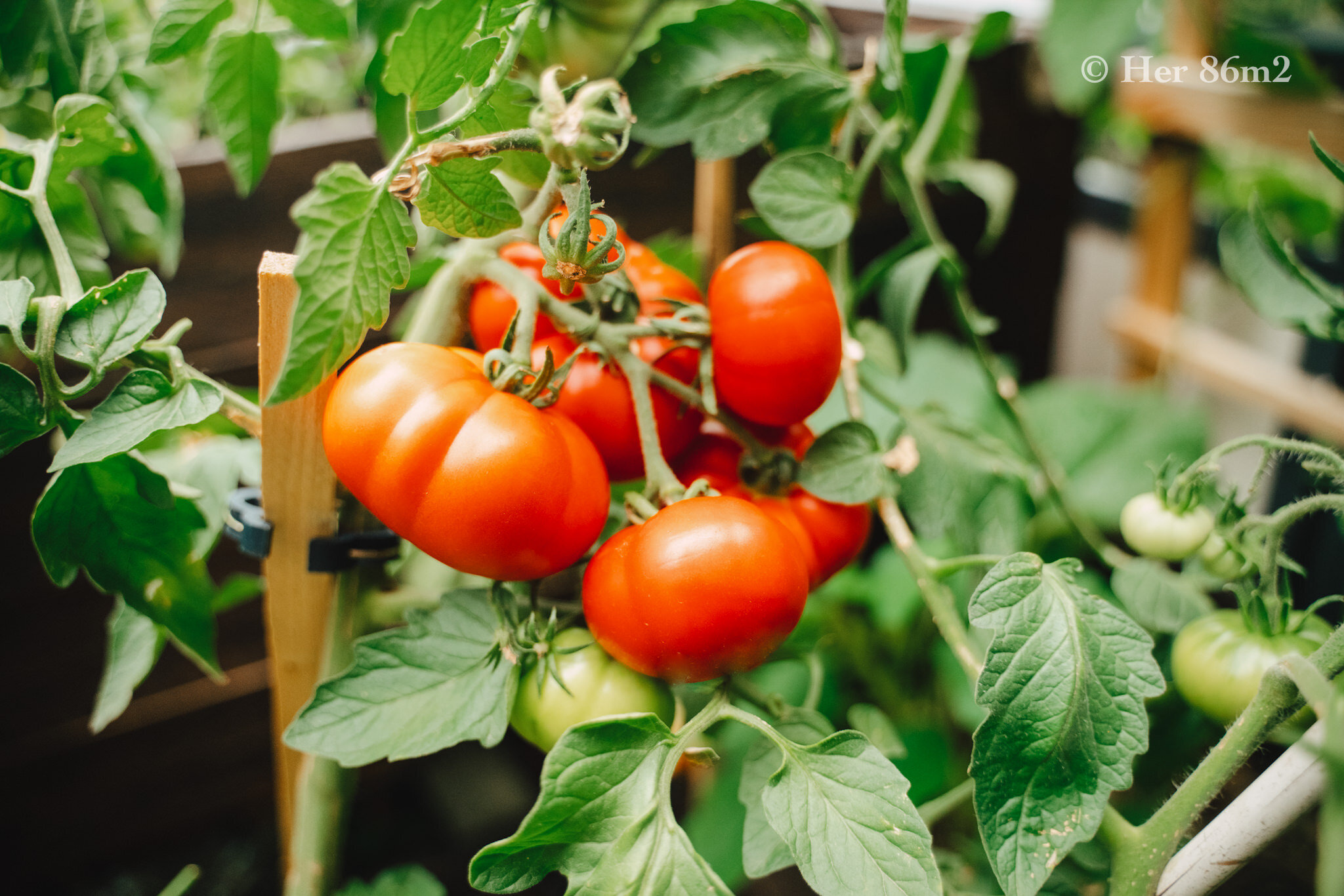
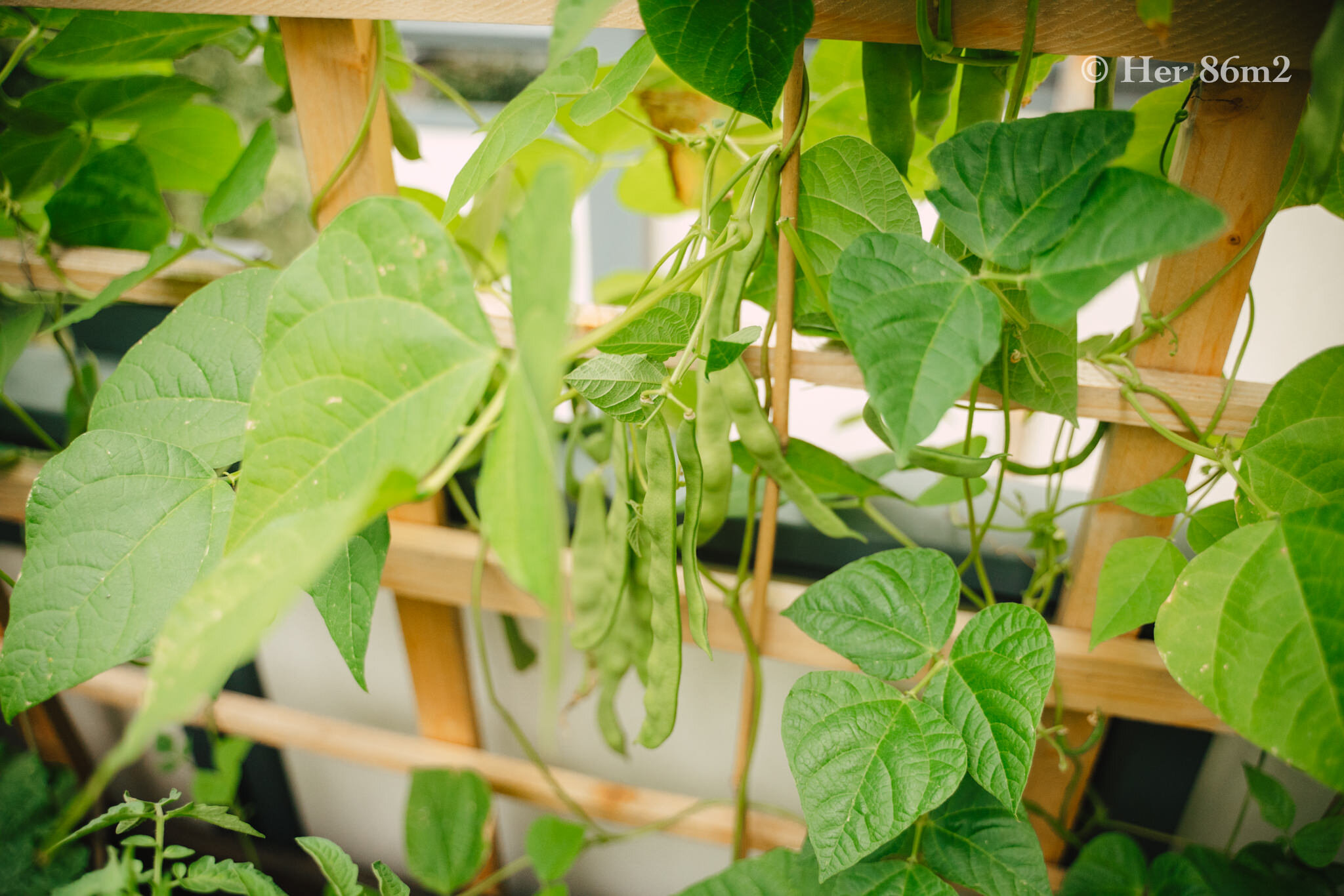
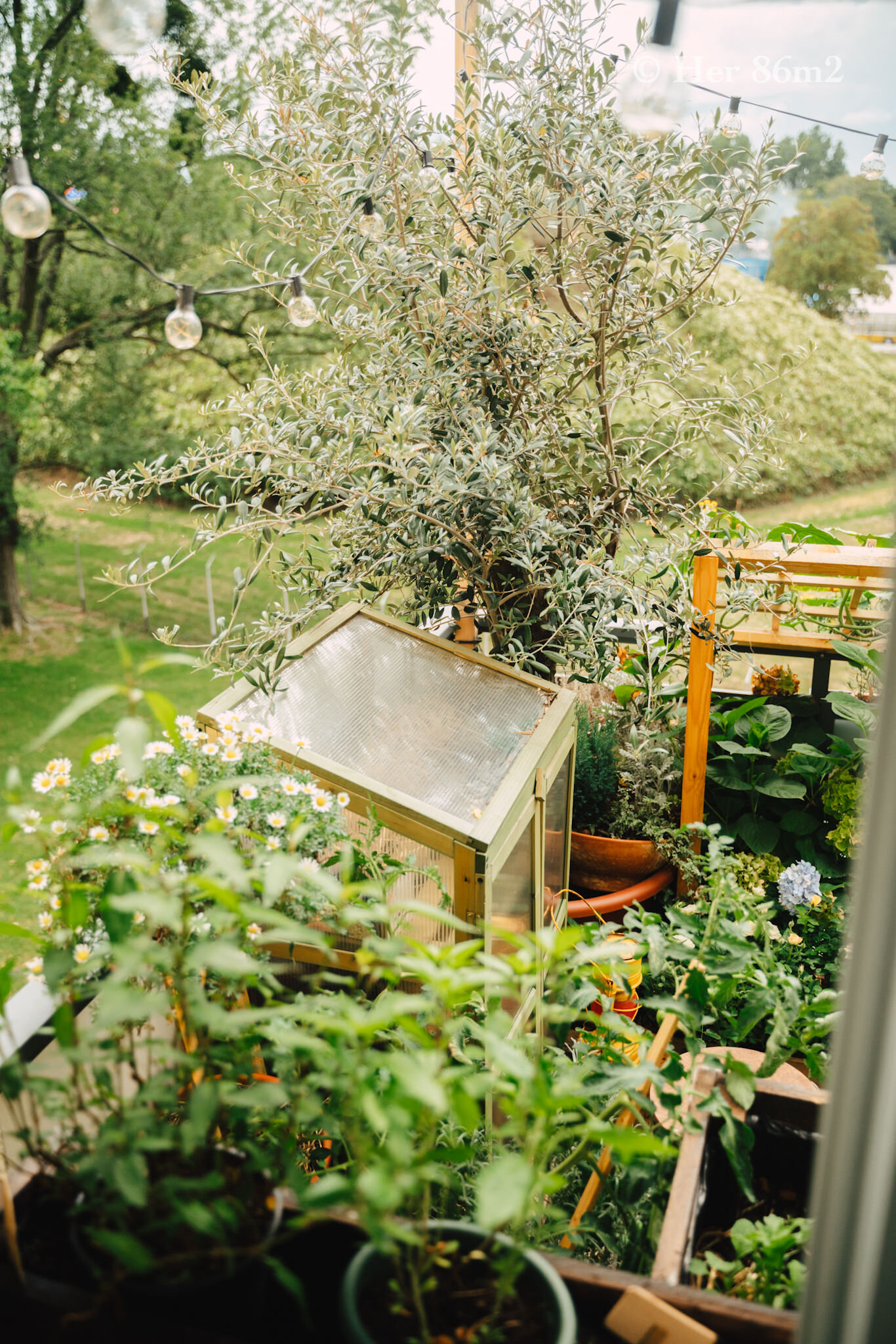
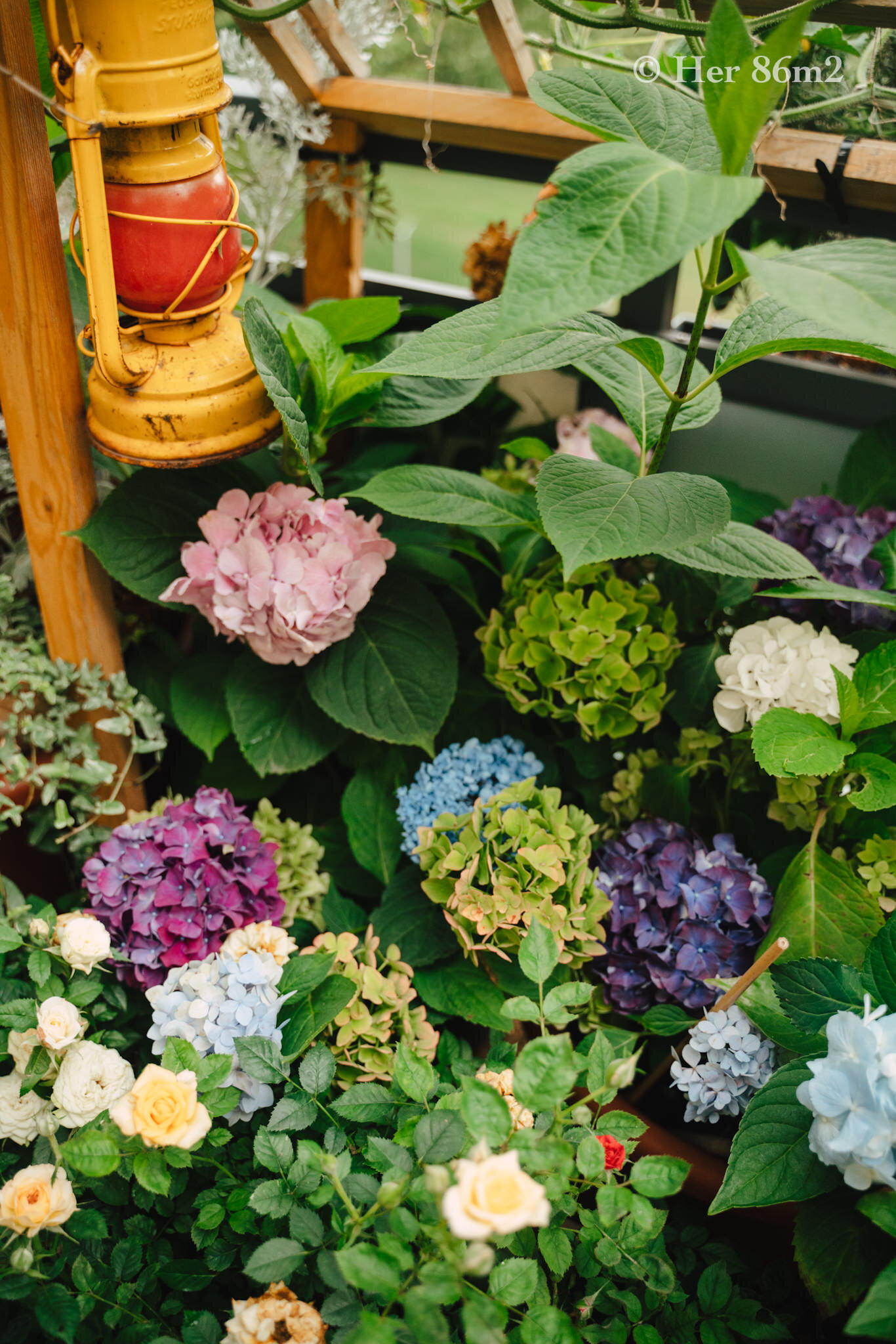

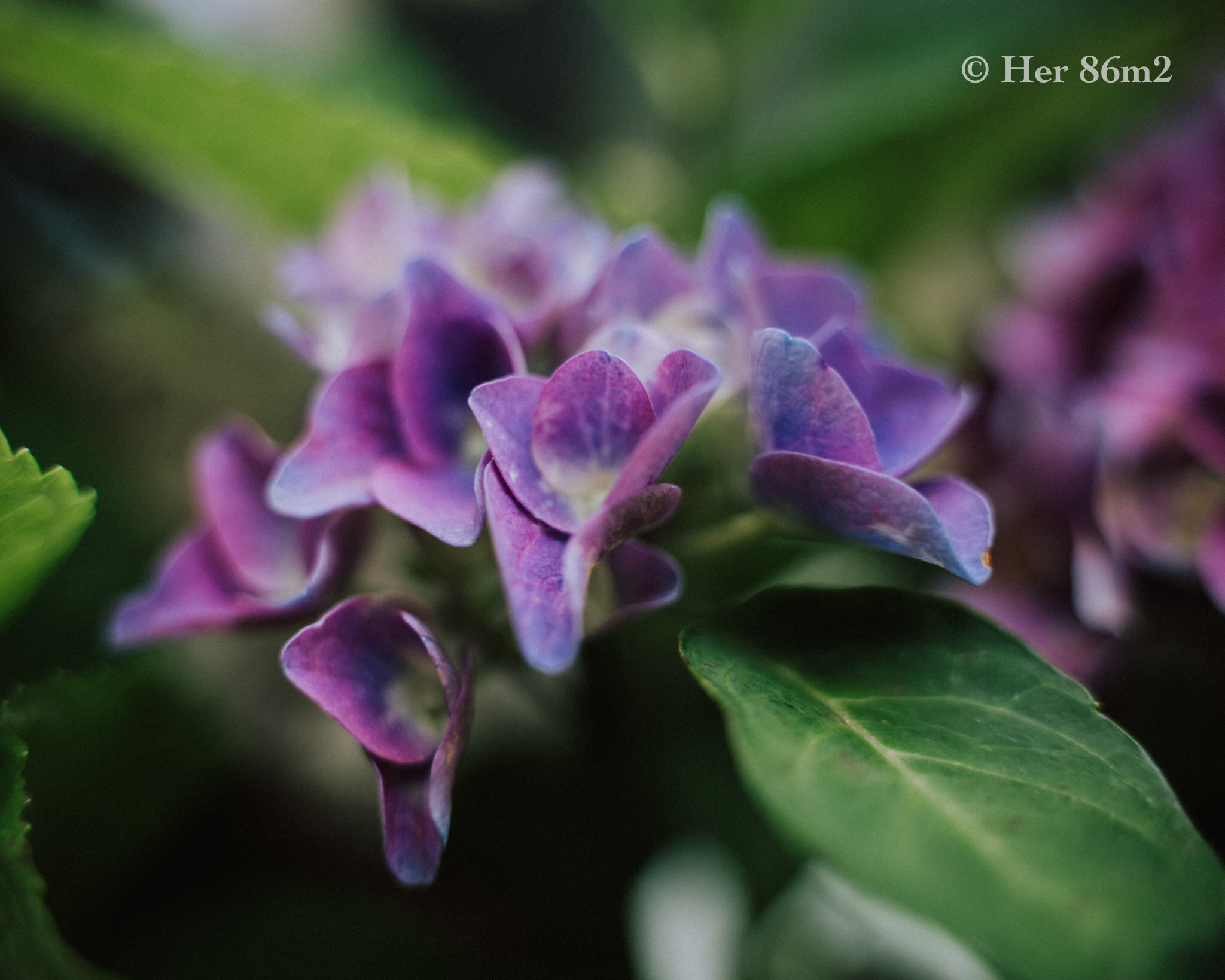
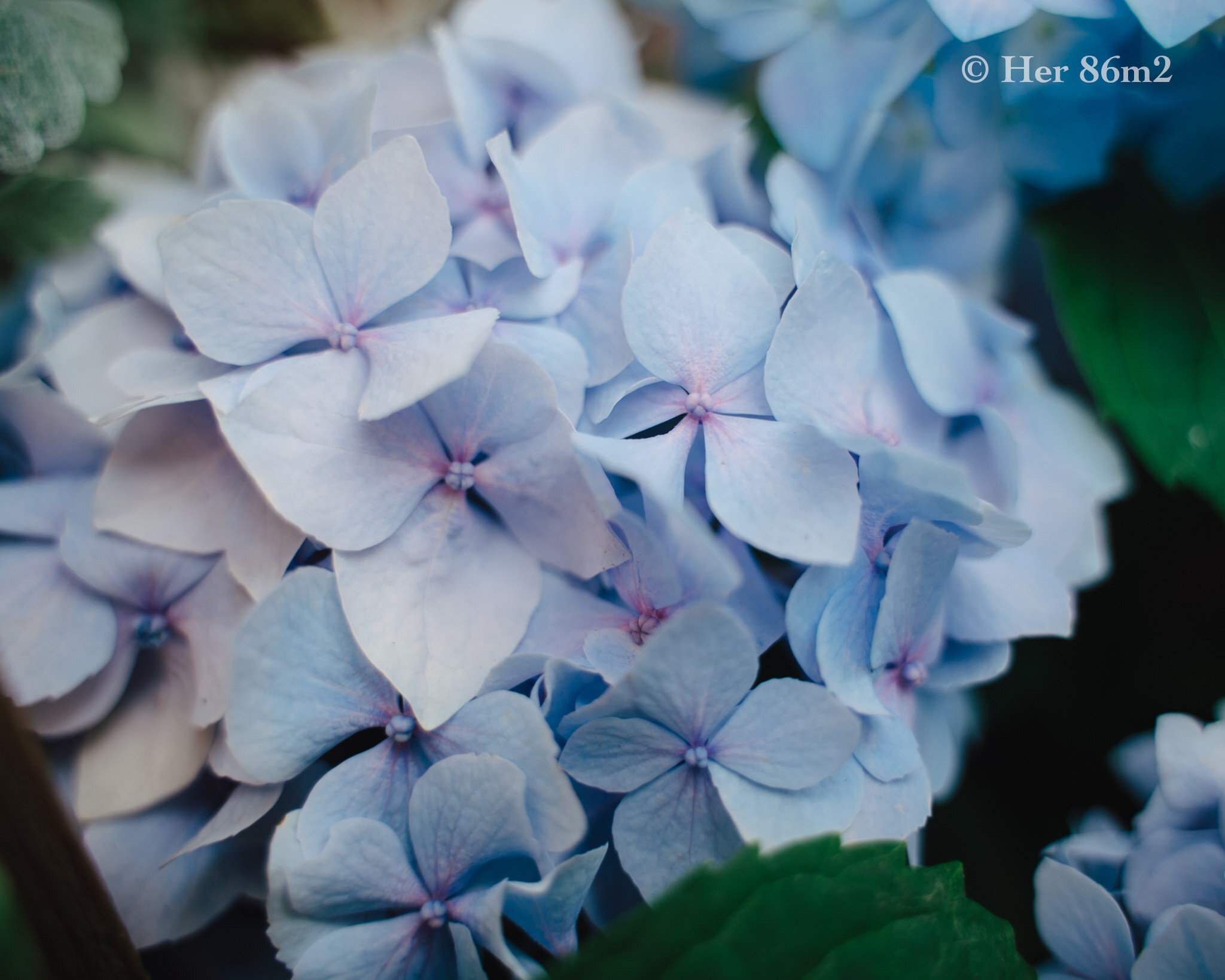
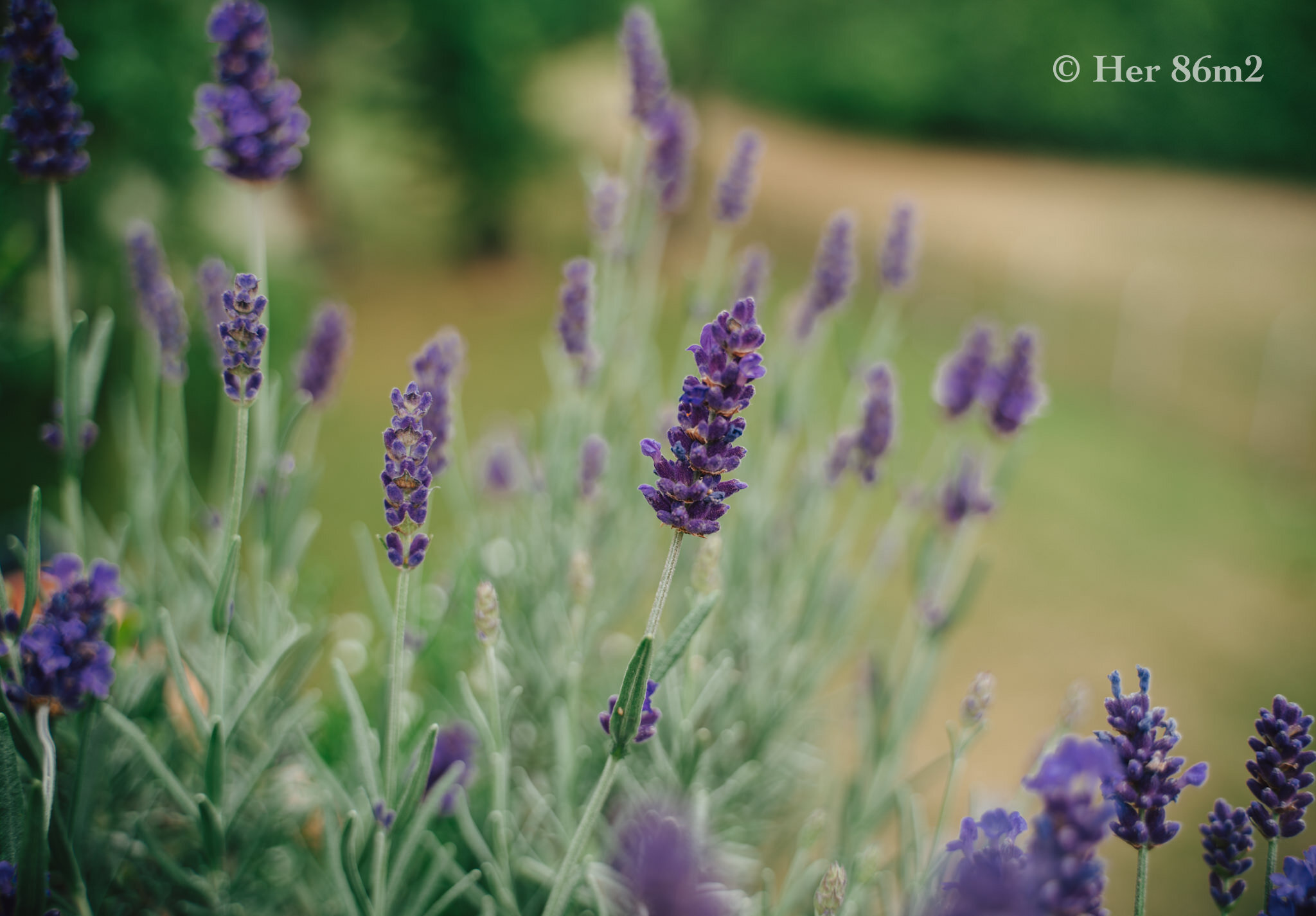
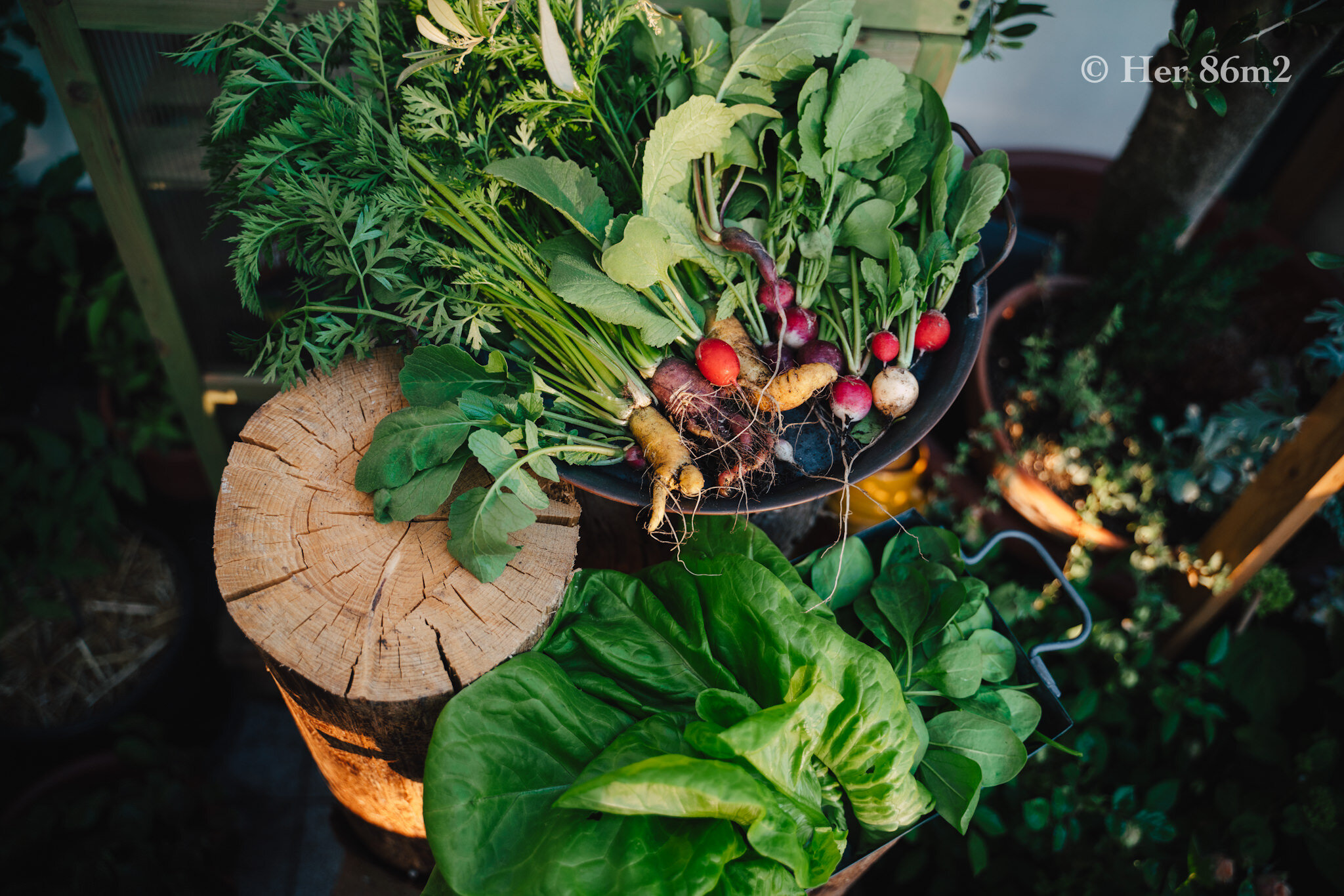
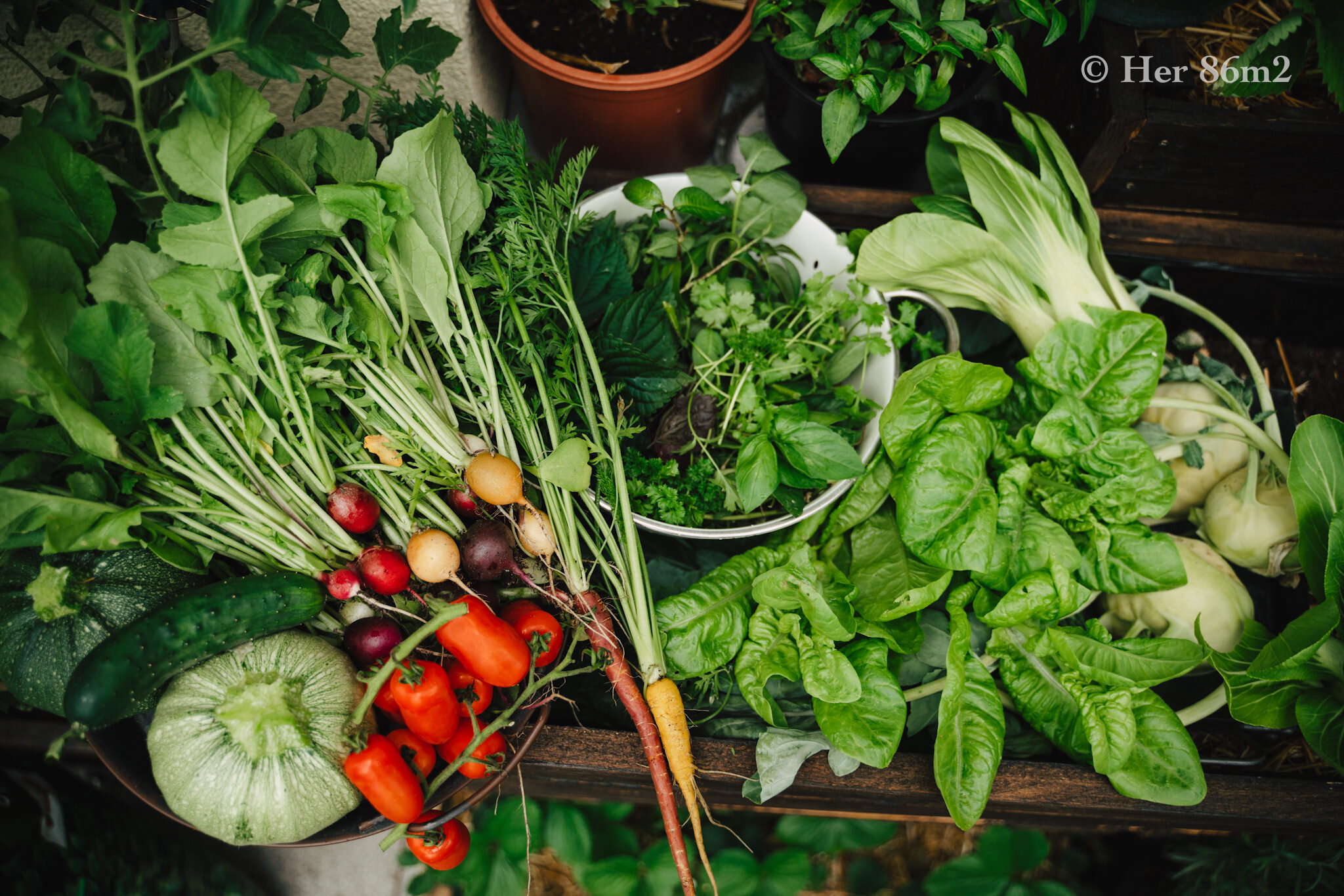
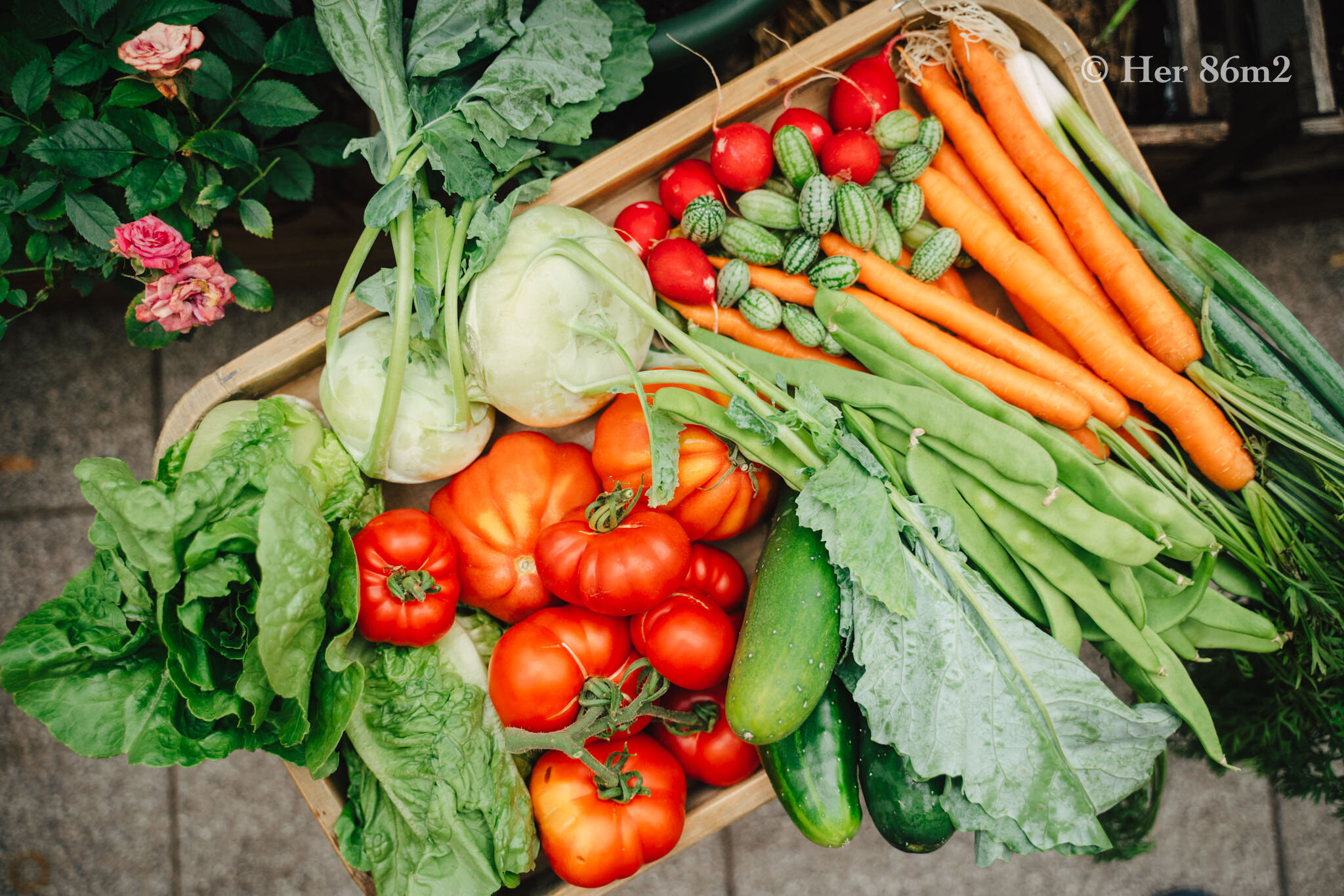
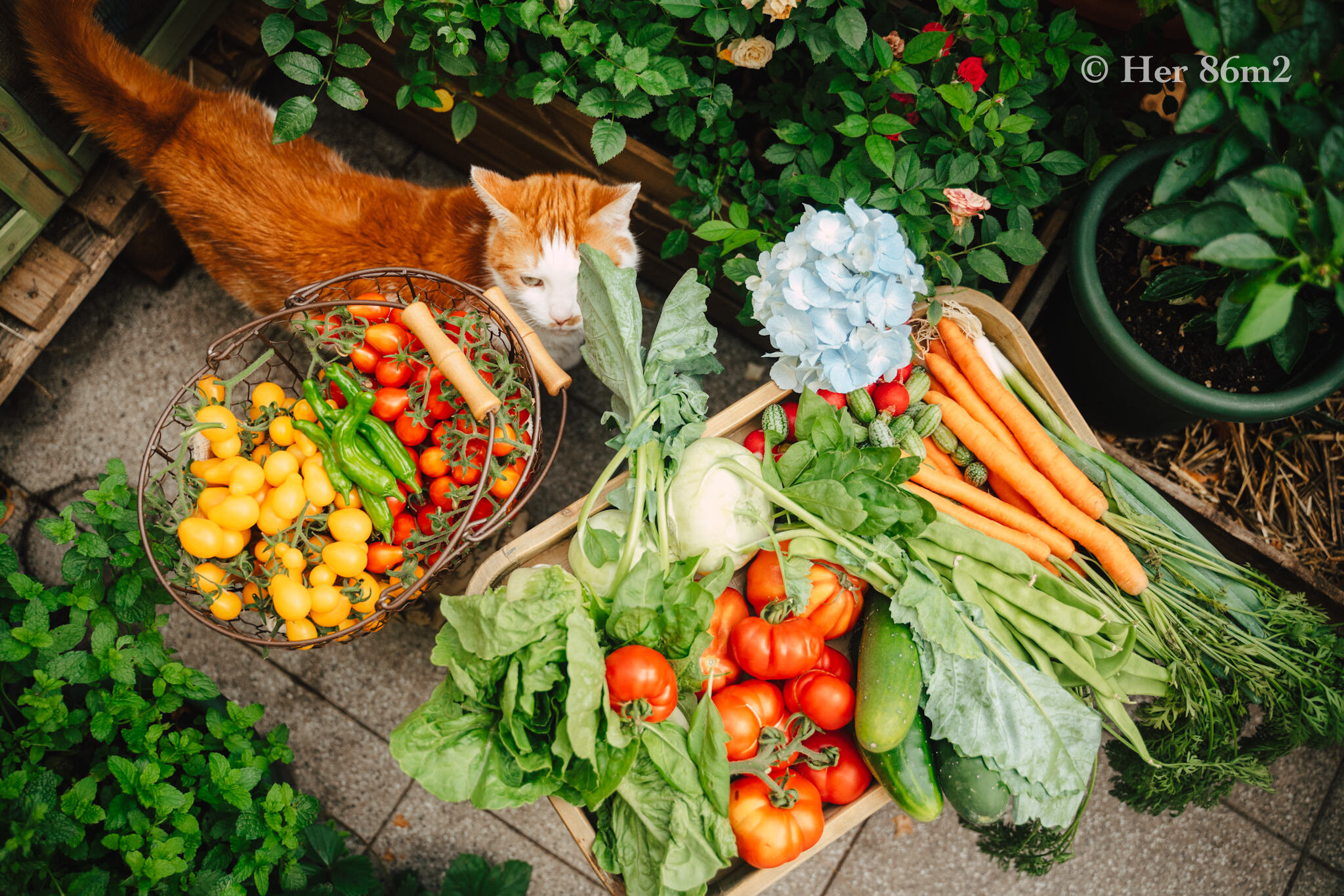
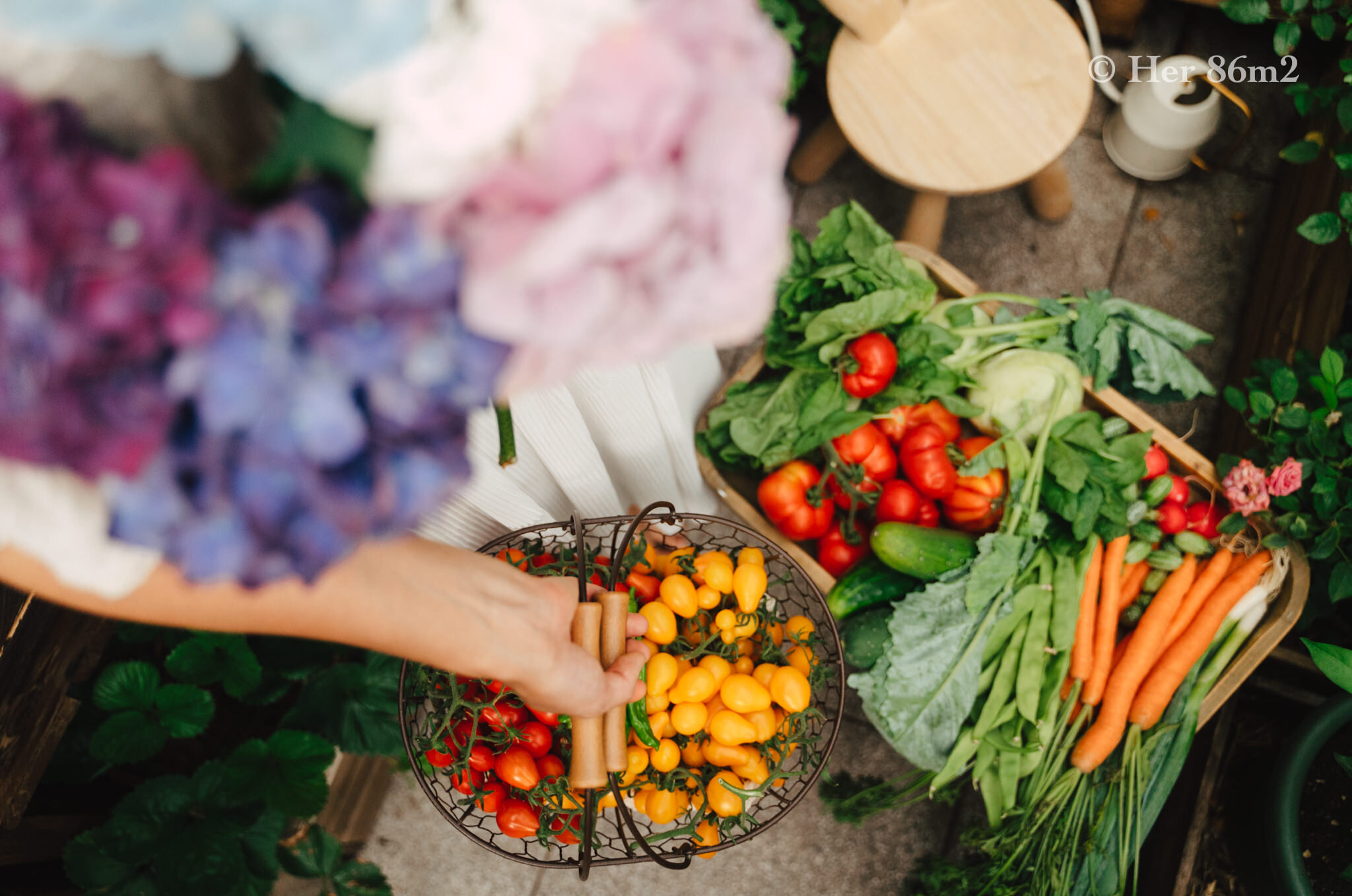
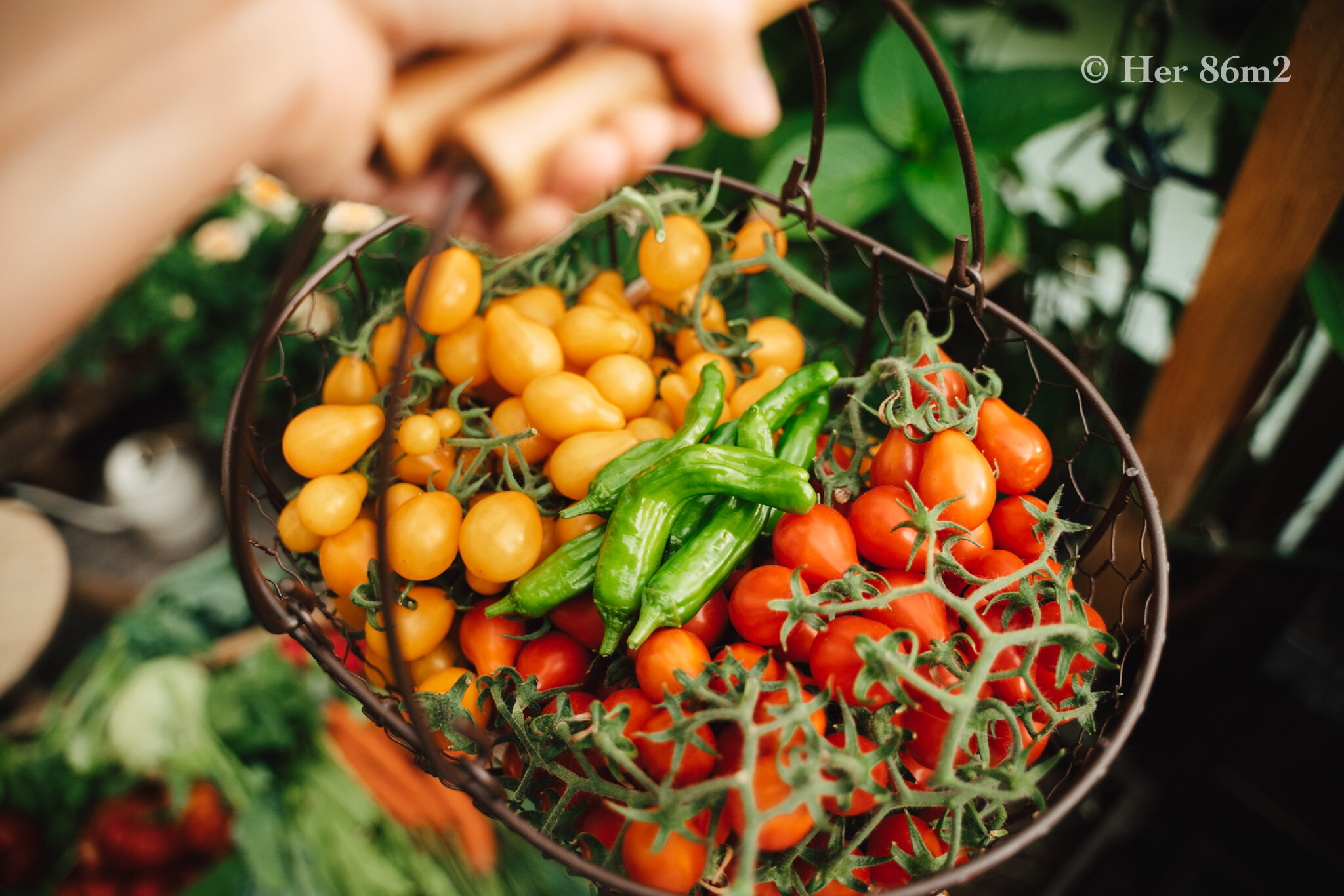
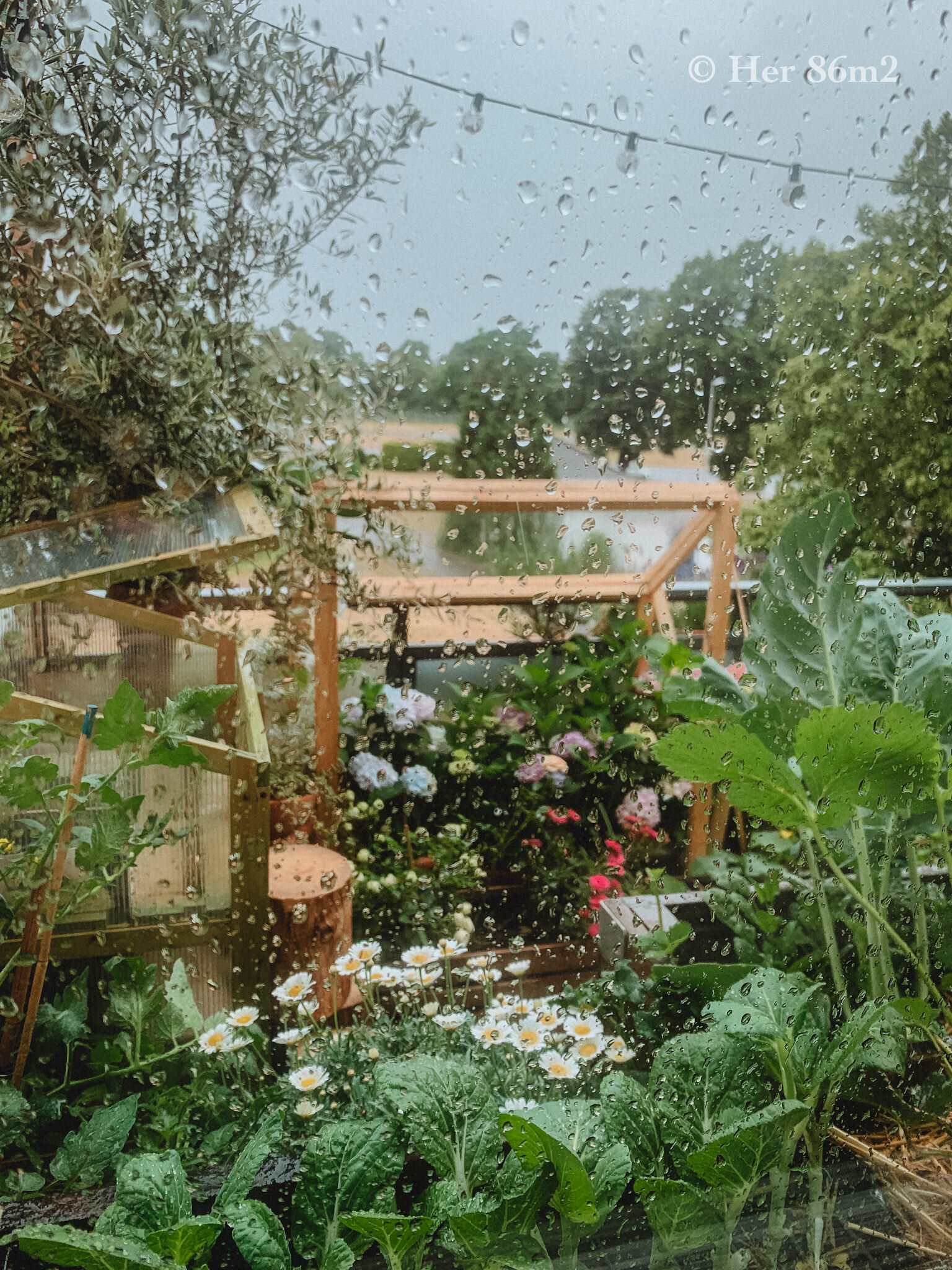
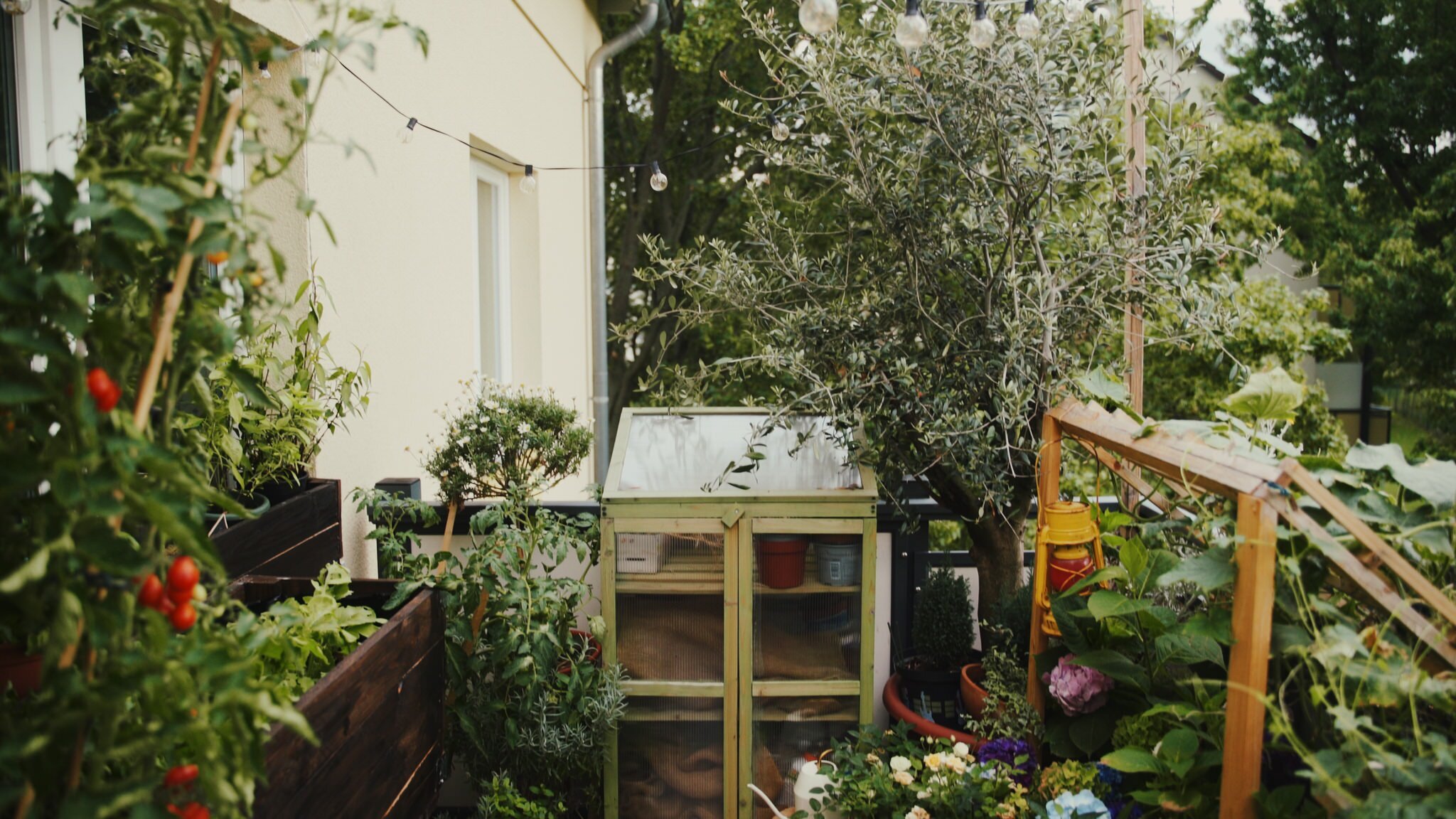
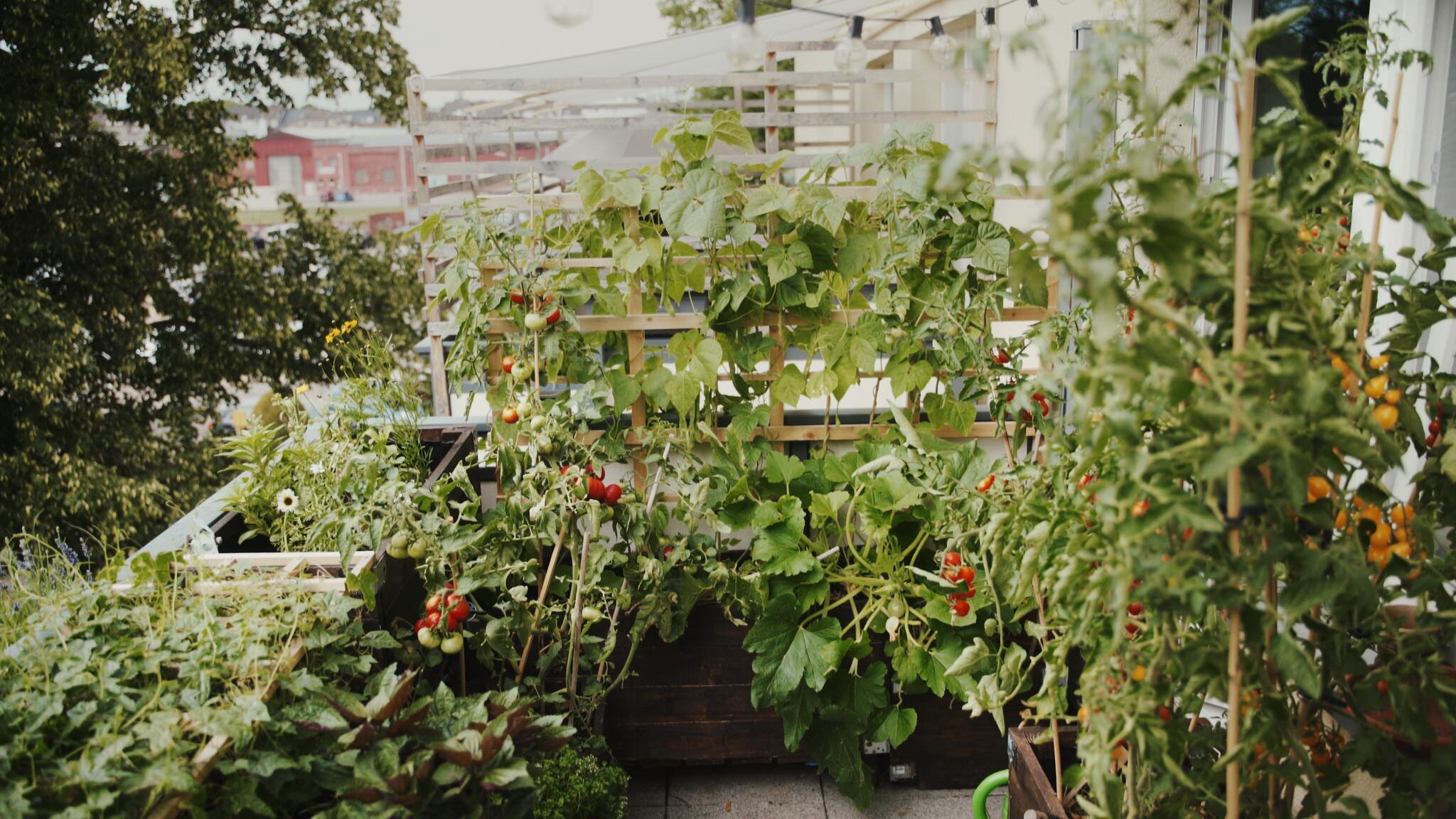
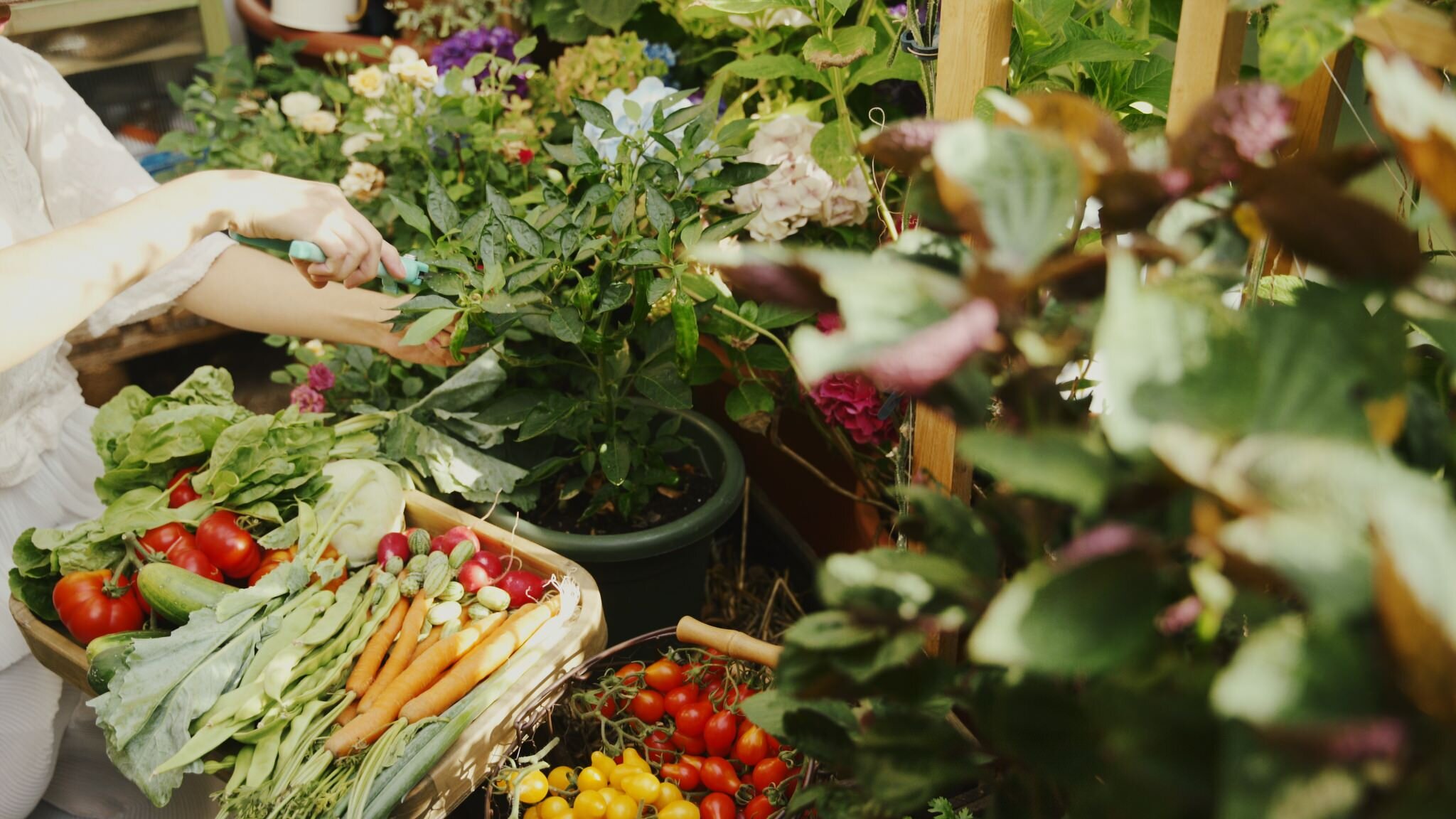
GARDENING TOOLS / ĐỒ NGHỀ LÀM VƯỜN
Sách làm vườn / Book to Balcon Gardening: https://amzn.to/2QoTmUR Nhà kính / Mini Greenhouse: https://www.ebay.de/itm/372659505542 Thùng Bokashi / Bokashi Composting: https://geni.us/86bokashi
Đất trồng cây / Soil: https://amzn.to/31hp1xG
Đất gieo hạt / Potting Soil: https://amzn.to/2Epnlcb
Rơm / Straw: https://amzn.to/3hqVtmA
For those who can't do Bokashi Composting:
Phân từ Móng, sừng động vật/ Horn Shavings: https://amzn.to/3gekgJr Phân bón từ phân gà / Chicken Manure : https://amzn.to/31eTpZC
Phân bón lỏng đóng chai / Fertilizer: https://amzn.to/32bEaj8
Kiềm / Calcium: https://amzn.to/3aEEz1w
I license a lot of music for my videos here - Sign up using the link below to get 2 extra months free :)
SUPPORT ME SO I CAN CREATE MORE QUALITY CONTENT / ỦNG HỘ MÌNH LÀM TIẾP NHỮNG NỘI DUNG NHƯ NÀY:
https://paypal.me/ThuThuyDao
https://www.patreon.com/her86m2
PHOTO EDITING PRESETS FOR LIGHTROOM / PRESETS CHỈNH ẢNH:
STAY CONNECTED / KẾT NỐI VỚI MÌNH:
Website: https://www.her86m2.com
Facebook: https://www.facebook.com/her86m2
Instagram: https://www.instagram.com/thuydao__/



